Cathedral MUSIC



Designed and built by organists for organists


















Simply the best in sampled digital sound, with no gimmicks. This is a Makin Westmorland organ.


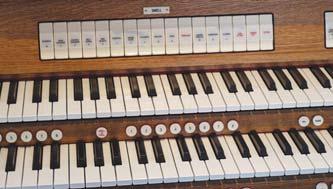
Makin Westmorland. Serious organs for the discerning musician. Someone like you.














You don’t buy a Makin Organ … you invest in one.

For more details and a brochure please telephone





01706 888100








the difference. Our Westmorland Custom instruments use a separate sound-sample for every note of every rank, and the realism is simply breathtaking! You are actually listening to the sound of organ pipes themselves, and not to something artificially-generated by computer, or based on only a few individual samples. What’s more, Makin uses genuine English pipe samples, from the finest organs in the country, to create that true English sound for which we are renowned. Experience our top-quality consoles, bespoke speaker systems, and unrivalled customer service. You will soon understand why customers choose Makin, rather than settle for second-best. to us. Together we can draw up your own unique specification today. our website for customer testimonials, details of installations, events local to you, and much, much more. sales@makinorgans.co.uk

CATHEDRAL MUSIC is published twice a year, in May and November
ISSN 1363-6960 NOVEMBER 2009
Editor
Andrew Palmer
21 Belle Vue Terrace Ripon
North Yorkshire HG4 2QS
ajpalmer@lineone.net
Deputy Editor Roger Tucker
Editorial Advisers
David Flood & Matthew Owens
Production Manager Graham Hermon
FCM e-mail info@fcm.org.uk
Website www.fcm.org.uk
The views expressed in articles are those of the contributor and do not necessarily represent any official policy of Friends of Cathedral Music. Likewise, advertisements are printed in good faith. Their inclusion does not imply endorsement by FCM.
All communications regarding advertising should be addressed to: Roger Tucker
16 Rodenhurst Road
LONDON SW4 8AR
Tel:0208 674 4916 cathedral_music@yahoo.co.uk
All communications regarding membership should be addressed to:
Friends of Cathedral Music
Membership Department
27 Old Gloucester Street
London WC1N 3XX
Tel: 0845 644 3721
International: (+44) 1727-856087
E-mail: info@fcm.org.uk
Every effort has been made to determine copyright on illustrations used. We apologise to any individuals we may have inadvertently missed. The Editor would be glad to correct any omissions.
Designed and produced by MYPEC
The Old Pottery, Fulneck, Pudsey, Leeds, West Yorks LS28 8NT
Tel: 0113 255 6866
info@mypec.co.uk www.mypec.co.uk
outreach for Oxfordshire has come from Christ Church Cathedral School. The Head Master, Martin Bruce, tells the story of their involvement: in this edition on page 10.
Recent media reports about English Heritage ceasing its funding streams to help cathedrals maintain their Fabric Funds has caused me concern. This decision on top of forecasts that the next government will have to make swingeing cuts in all public funding, including the arts could, I believe, affect cathedral music. Deans and chapters will be looking for ways to trim budgets. Shades here of Joanna Trollope’s novel The Choir which was dramatised for television highlighting the dilemma caused by competing demands between fabric and music.
The present government funding of £40m for the National Singing Programme is guaranteed until 2011. Known as Sing Up, it is sustained by a consortium of Youth Music, Faber Music, AMV BBDO, and The Sage in Gateshead. The Choir Schools Association (CSA), as an associate partner, manages the Chorister Outreach Programme. CSA has been actively involved in promoting this initiative since 1990. The strength of COP is that funding of £1m a year has been ring-fenced over the four year period of the NSP, but clearly there is concern that it may then stop, and the big question is how to carry this wonderful initiative forward.
Criticism of music being left out of the national curriculum prompted the Blair government to appoint Howard Goodall as the National Ambassador for Singing, with the brief to get children in every primary school in the land singing in choirs to counteract the general neglect of music in education. For this noble purpose generous funds were allocated. Howard was himself a Christ Church first-class music graduate, so it is no surprise that the diocesan
CATHEDRAL MUSIC has highlighted some of the schemes over recent years such as the way St Peter’s, Wolverhampton and Salisbury Cathedral are each spreading the art of singing as described in CM 1/07 and the Precentor at Bristol Cathedral in the last edition (1/09), along with Geoffrey Webber reporting that several Cambridge choirs are soon to become involved with local secondary schools and. King’s College is already participating in the government’s outreach scheme for singing in primary schools.
My research has led me to the conclusion our cathedral musicians have thoroughly enjoyed being part of all this. Yes, it has meant lots of extra work but the musical rewards have been very, very high. For many it has been a steep learning curve which they have mastered with alacrity.
For example Ian Wicks, who directs Salisbury Cathedral’s outreach programme for the Cathedral and Cathedral School says: “I think it is important to stress that COP is a great success story for the National Singing Strategy and the CSA. The fact that thousands of children up and down the country have had the experience of singing with the choristers in our great cathedrals is important on so many levels. The expertise that has been directly involved in each primary school has made a difference in those children’s lives and has given teachers the confidence to begin their own choirs in school. The experience of coming to the Cathedral for the concert is always a memorable occasion for children and their parents -many of whom have never set foot in their cathedral before. Above all, singing is to some extent a natural activity for us all and to have helped many children to find their voices must enrich our culture and society for the future.
“There are many children who have found their voice through our Singing Together Outreach Programme who have gone on to join our Cathedral Junior Choir and a few who are now
choristers in Salisbury Cathedral Choir. This progression, although not intentional, is a very pleasing part of the whole adventure. There are also many children whose lives have been transformed by being part of our choir.”
The question is: how do we sustain the success of these programmes?
This is where FCM should come in. CATHEDRAL MUSIC takes the view that what is needed is a national foundation for cathedral music outreach, inclusive of everywhere that can provide a lifeline or rallying point for funds from various sources: Government, private funding from industry, education, Lottery, private benefactors and organisations like FCM which support the tradition.
This can build upon the excellent pioneering work of the CSA. The project should bring together interested groups and attract people from the cathedral music profession, and other walks of life.
Can outreach cross ethnic barriers? I think it can. Many of the best schools in the UK are Christian foundations and Western sacred music is part of their tradition and so part of school life. This must rub off on non-Christian pupils, seeking high quality education. They will hear performances of Messiah and carol services at Christmas and choral masterpieces by Haydn, Mozart and Bach at Easter and in the summer. They may be taught musical appreciation or to play an instrument even play in an orchestra. To this extent, the current obsession with multi-culturalism could hinder assimilation of British culture by ethnic minority pupils.
However, we should rejoice that cathedrals up and down the land have been playing to full houses, as Ian Wicks points out! You will read elsewhere in Festivals Overview of the increasing attendances at cathedral music festivals.

It’s up to us all now to evangelise and raise support for this. Over the next few editions we will be exploring this issue with contributions from specialists working in the field.
As George Eliot wrote: “I think I should have no other mortal wants, if I could always have plenty of music. It seems to infuse strength into my limbs and ideas into my brain. Life seems to go on without effort, when I am filled with music.”
We should rejoice that cathedrals up and down the land have been playing to full houses...
From its earliest times, Rochester appears to have been famous for the training of singers. In his Ecclesiastical History of the English Nation, Book IV Bede writes of Bishop Putta, enthroned as Bishop of Rochester in 669 that: ‘He was extraordinarily skilful in the Roman style of church music, which he had learned from the disciples of the holy Pope Gregory.’
Bede goes on to say that: ‘From that time also they began in all the churches of the English to learn sacred music, which till then had been only known in Kent.’
The cathedral choir at Rochester can therefore claim to be the heir to a very ancient tradition.

The Rochester Cathedral Choir we would recognise today dates back to 1541 when the Benedictine community was dissolved and the cathedral was reformed as a cathedral of Henry VIII’s ‘New Foundation’. The new statutes, dated 18 June, 1541, provided for six priests, six lay clerks and eight choristers. These numbers were not uncommon amongst Rochester’s New Foundation colleagues, although others
sometimes had more men (often eight, balancing the number of boys).
Since that time, six lay clerks have remained on the Foundation of the Cathedral until a very bold step was taken with the commissioning of a new Worship and Music Policy in 2007. Chorister numbers have fluctuated throughout this period and risen to the current limit of eighteen. Before I come to that, a little more background will help set the scene for some of the far-ranging suggestions of the new policy.
Since 1937, following the closure of the Cathedral Choir School, the boy choristers have been educated at the King’s School. There were obvious benefits to the boys from this, especially access to the wider range of opportunities available at a much bigger school. Relations between King’s and the Dean and Chapter have been largely good over the years, the cost of the scholarships has often, understandably, been a source of concern for the Chapter. Whilst Rochester receives a goodly number of visitors, undoubtedly swelled by the Charles Dickens connection, it does fare less well than its ‘Big
Brother’, just a short distance away at Canterbury.
The first really major change in the make-up of the cathedral’s music since the Reformation came in 1995, with the introduction and recruitment of Rochester Cathedral Girls’ Choir. Following on from the recommendations of In tune with heaven, and particularly the success of Salisbury, it was felt that this was the time to introduce girls. After much thought, it was decided, not without controversy, that the girls would be recruited from all schools (not just King’s), would be the same age range as the boys, and that the girls would sing on a voluntary basis. The Girls’ Choir would sing Evensong on Wednesdays (traditionally the ‘dumb’ day at Rochester) and would also take a part in the weekend schedule (especially weekends in July once the boys were on holiday). The Cathedral Auxiliary Choir was re-founded as the Special Choir and would sing extra services as required on high days and holy days and to provide a cathedral choir when the boys or girls were not available.

In many ways, this situation worked well, but fears for the
sustainability of the cathedral’s music, especially the funding of the Chorister Scholarships and the immense and increasing difficulty in recruiting full-time lay clerks of a suitable standard were threatening the day in day out music making; something had to change. The minds of the then Precentor, Ralph Godsall, and of the Director of Music, Roger Sayer, were much exercised by this matter. However, it was felt that any far-reaching measure should wait for the appointment of the new Dean following the retirement of Dean Shotter. In January 2005, Adrian Newman was instituted and installed as Dean following various parish appointments in East London, Sheffield and central Birmingham (the Bullring). Adrian was once introduced as ‘the most un-Dean-like Dean in the Church of England’ (a description he quite likes!), but immediately lent his support to Ralph and Roger in their aims to provide a vision for music making and worship at Rochester and to safeguard its future.
The fruit of their labours was published in November 2007 as the Dean and Chapter of Rochester’s ‘Worship and Music


Policy’ (available at www.rochestercathedral.org). The section on music states as its first point that: ‘Music is the servant of the liturgy and an integral part of it. Music has a unique role in the offering of worship as a means to still the mind, uplift the heart and lead the worshipper to encounter the mystery that is God. It is also capable of challenging and directing’.
That should fill the hearts of all members of the Friends of Cathedral Music with joy! Many of the items are good common sense such as the precedence of the Opus Dei over other musical events or a commitment to the encouraging and support of recording, touring and giving concerts (especially out and about in the Diocese), but there are also some welcome recommendations such as committing to maintaining and extending the music library, a commitment to funding vocal coaching for all choristers, an accumulating fund for the long-term protection, preservation and restoration of the cathedral organ, outreach work, the formation of a junior choir, music endowment, a musician in residence, and a recognition of the importance of commissioning new works.
So what is new I hear you cry? Well, there are some major changes relating to the scheduling of the boy and girl choristers, funding of Choristerships, the Director of Music and the lay clerks: obviously there are some challenges for cathedral musicians in documents such as these.
Recommendation 16 states: ‘Chapter has developed clear guidelines and values to underpin the nature of choral development at the Cathedral:
• Quality – we will retain and develop a high-calibre choral tradition as the core of the Cathedral’s music provision
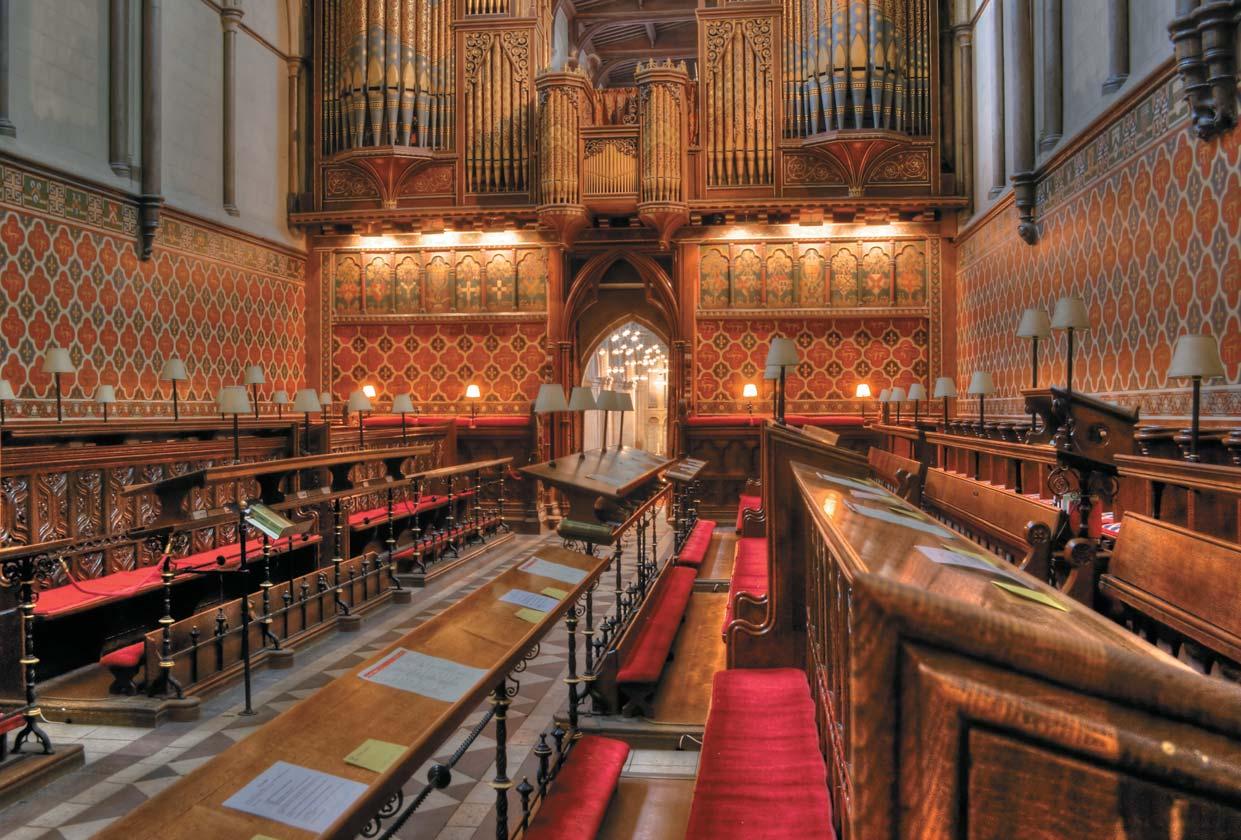
• Inclusivity – our aim, as far as possible, should be to make the Cathedral’s music and worship open and accessible to everybody, and a primary instrument of mission
• Community – we want to extend the outreach elements of the music by increased community engagement
• Equality – we will work towards parity and equality in our treatment of girls’ and boys’
• Recruitment – our aim is to recruit up to 18 choristers for each of the boys and girls choirs
• Repertoire – we want to extend the musical repertoire, particularly at the Sung Eucharist
• Affordability – we are committed to funding the choral tradition at an affordable level’
Some alarm bells might have started to sound for some Members having read that, but let me assure you that all is well. The words equality and parity do strike fear into the hearts of many, not least cathedral directors of music! However, this need not necessarily be the case.
The biggest changes in terms of a traditional cathedral music department refer to the Director of Music and the lay clerks.
Regarding the Director of Music, the policy makes it clear that this is a position, first and foremost, for a choir trainer (indeed the word organist is not even mentioned) who is ‘an experienced (and preferably, qualified) educationalist committed to a child-centred approach’. Now, this is not new and is the situation in a fair number of major cathedrals where the ‘Cathedral Organist’ has decided to actually be the Cathedral Organist! Many are mystified by the apparent misnomer ‘Cathedral Organist’, because generally speaking, he does not play the organ for services. In the case of a number of colleagues they would deem themselves to be organists, who came to be choir trainers through their playing of the organ. Of course, this could be the subject of a whole article or three in itself so I shall leave that there!
The establishment of three choral scholarships (alto, tenor,
bass) to attract young professional singers to live in Rochester and commute to London was a vitally important step to revitalising the situation in the back row of the choir. Their scholarship was based on the cost of a rail season-ticket to London and they are given free accommodation in a sizeable cathedral property. The lay clerks, however, fared rather badly in that the position of Lay Clerk was abolished. It is important to note however, that by the time that the policy was published, there were only two full-time lay clerks and four permanent vacancies! A pool of deputies had been established and it proved possible to maintain a back row of six, with the occasional slip-up, but this was far from ideal. The pool of singers has been expanded and continues to grow in a very pleasing way and three singers are booked from the pool per service to join with the choral scholars. On occasions when the treble lines combine, we book a further six deputy lay clerks.
An online booking system makes the booking of singers very easy indeed and it is a real joy to be able to pick the right singer for the right piece. The experience and skill of the singers on the books is tremendous and it is a real privilege to work with musicians who have regularly sung at the cathedrals of Westminster, St Paul’s, Canterbury, or with The Sixteen, the English Concert and King’s College Cambridge!
Since inception, the girls have been volunteers, whereas the boys have received a scholarship. A sense of equality between the boys and girls was desired. The historic link with the King’s School was felt to be important from many points of view, not least the difficulty in attracting boys to sing in cathedral
choirs. There were definite benefits to the membership of the Girls’ Choir being drawn from the wider community, but rather than the cathedral giving a scholarship pertaining to a percentage of the fees for the boys, we would now give a fixed sum bursary to both boys and girls. We have been extremely fortunate in that the King’s School has committed to eighteen Chorister Music Scholarships for the boy choristers.
The Chapter was keen for the girls to sing a higher ratio of services, but were aware that this was a matter of discussion for both the Music Department and the Chorister parents. The pattern agreed was that Monday would be sung by the Girls and Men (or on occasion, men alone), Tuesday would be Boys’ Voices, Wednesday would be the Department day off (except in the instances of Ash Wednesday, Holy Week, broadcasts, etc), Thursday would be Boys and Men, Friday would be Boys and Men (unaccompanied except on festivals) and then the services over the weekend (Saturday: Evensong, Sunday: Matins, Eucharist and Evensong) would be sung in alternation. I am very happy to report that this has worked extremely well over this last year. In practice it has meant that the boys get a welcome rest every other weekend and I effectively get more time to learn new or rehearse more difficult music on those weekends when the boys are not on duty.
For some major services the treble lines combine, such as the Easter Day Eucharist, the Cathedral Carol Service and Advent Carols. There is a very carefully worked out three-year pattern for covering the equally-important Easter Day Vigil and Evensong, Christmas Day Eucharist, etc. For Midnight
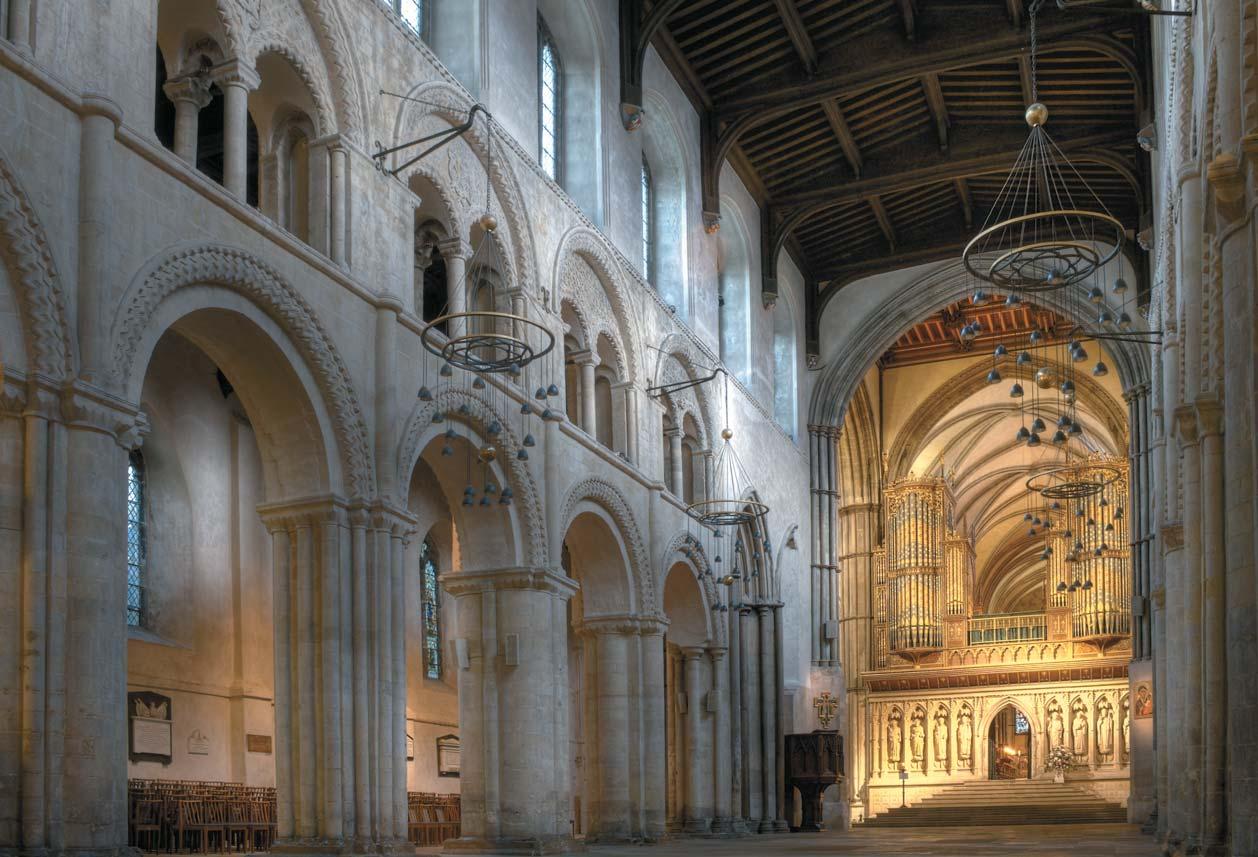
Mass and Palm Sunday morning, the Full Cathedral Choir is joined by the Voluntary Choir which adds another dimension entirely. On Palm Sunday we are able to field three separate choirs in the outdoor procession, (needless to say coordination can be exciting), and at Midnight Mass we are able to have choirs singing in both the Nave and the Quire to the 1400 people who squeezed into the Cathedral in 2008.
Sometime after the publication of the policy, Roger Sayer announced his intention to pursue a freelance career and to resign from his position as Director of Music. With tremendous foresight, the position of Cathedral Organist was created, whereby Roger could launch a freelance career from his base at Rochester and we would continue to enjoy and benefit from his musical gifts, not least as a thrilling organist and accompanist. Roger’s main duties are playing for the weekend services at the Cathedral and for any other major services or events. The day-to-day running of the department and the choirs falls to myself as Director of Music, and to Dan Soper, the Sub Organist and Assistant Director of Music. Dan was formerly Assistant Organist of Winchester College, Organ Scholar at Corpus Christi College Cambridge, Chelmsford Cathedral and Croydon Parish Church and joined the music department in 2006. I started at Rochester in September 2008, following six years as Master of the Music at Newcastle Cathedral. Dan has specific responsibility for the training and direction of the Girls’ Choir and I train the boys and we both take our place on the organ bench during the weekly round. A year after the Worship and Music Policy came into effect,
would we say that it has been a success? Overall, it has been a great success and the way in which we do things has evolved in harmony with the policy. Inevitably there were doubts and fears about the far-reaching changes that would be made and their consequences, but it is safe to say that the music department of Rochester Cathedral and its choirs are in good heart.
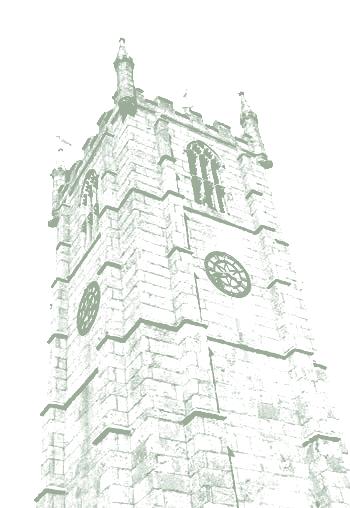

Sunday Parish Mass and Evensong. Sung Mass on major festivals Anglo-Catholic worship.

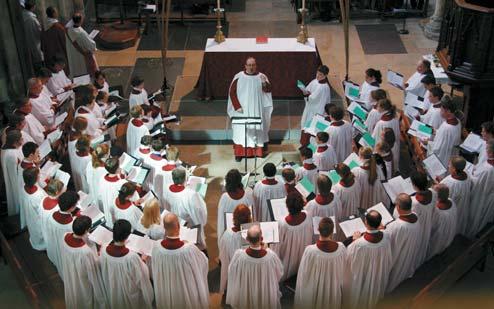
Opportunities for building up the choir. Links with Town and Civic organisations.
Fine and substantial 3-manual Hele organ. Ideal for teaching purposes Deputies available Good rates of pay Fees for Weddings, Funerals etc.
Applications to:
Fr. Andrew Gough B.A.
The Vicarage
St. Andrews Street, St Ives
Cornwall TR26 1AH
Tel 01736 796 404
E mail: goughfr@hotmail.com


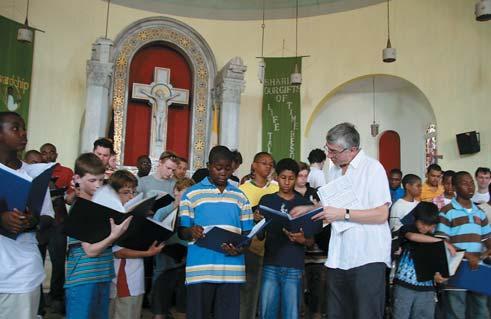
One of the striking features of our world today is its interconnectedness. Initially a technologicallydriven phenomenon, it has become a pervasive metaphor in patterning our relationships both personal and institutional. One thing this has meant to Christ Church Cathedral School is that we have become far more outward-looking, positively enthusiastic to make links far beyond our cramped Brewer Street site –in some cases with institutions on the other side of the world. A powerful engine in such link-making has been, of course, music, and in particular the Cathedral Choristers. We are now well into the second year of our involvement in the Government’s Sing Up campaign, one of the most effective strands of which is the Cathedral Outreach Programme. This involves close collaboration with the local Music Service (in our case, Oxfordshire County) to work with primary schools to restore the lost art of communal singing, and so to train teachers that they become confident and enthusiastic singing leaders. It works like this: in the first term of the academic year four schools are visited by our music staff and a small group of Cathedral Choristers for an initial workshop. Our boys are there to raise by example the singing aspirations of the children and to share their love of music and its performance. In subsequent weekly visits the music staff teach, develop and hone singing skills and prepare for an end-of-term concert in the Cathedral. For many children (and their families) this will be their first visit to this beautiful and ancient church; it may well also be their first formal musical performance. Apart from the impressive harmony, what you must notice on these occasions is the evident enjoyment on all the faces. In the second and third terms the process is repeated with additional groups of schools, although the first cohort continues to participate with a lighter programme of visits. The year ends with a massed concert in the Cathedral involving hundreds of singers and a capacity audience: the atmosphere is excited, the sound wall stupendous.
It is not just locally, however, that our Cathedral Choristers make connections. Whilst the Choir, like many of its collegiate and diocesan counterparts, has an impressive programme of tours abroad, these are not, for Christ Church, merely concert opportunities. It has long been a priority of Dr Stephen Darlington, the Cathedral Organist and Tutor in Music, that tours involve a significant outreach component. Thus the Choir’s visit to Jamaica in 2007 was built around shared music-making and performing with a Kingston school choir, celebrating its sixtieth anniversary: and this year’s Bermuda trip similarly involved joint rehearsals and performances with a Southampton school gospel group. The arm of our outreach is long, and the benefits of mutual acquaintance and respect between groups of children in many ways far apart can only, surely, be a positive element of today’s connected world.
Martin Bruce, Headmaster.Salisbury Cathedral is delighted by the announcement from the UN Educational, Scientific and Cultural Organization (UNESCO) that the four surviving copies of the 1215 Magna Carta have been inscribed in the ‘Memory of the World’ register, in recognition of their outstanding worldwide value.
Their inscription –a sort of World Heritage Status for documents –means the Magna Carta, held by Salisbury Cathedral, Lincoln Cathedral and The British Library, joins the ranks of some of the world’s most globally significant documentary heritage. The personal liberties laid out in the 13th-century document have been incorporated into the English Bill of Rights 1688, the American Declaration of Independence, 1776 and the Universal Declaration of Human Rights approved by the General Assembly of the United Nations in 1948. Magna Carta’s basic principles have also been used in the constitutions of Japan, France, Germany, Australia and many other countries. Welcoming the award, Mark Bonney, Canon Treasurer, said “We are proud to have the responsibility of owning the finest preserved of the original 1215 Magna Carta. Seeing this most famous of English charters, agreed by King John and the Barons of England at Runnymede in June 1215, is a highlight for visitors to Salisbury Cathedral. Indeed, we know that for many the Magna Carta is one of the primary reasons for their visit here and it seems to have an even greater significance for guests from overseas. Its clauses on social justice form the cornerstone of modern democracy and liberty worldwide and are as pertinent today as they were 800 years ago.” The Magna Carta at Salisbury Cathedral has been exhibited on public display for the past 25 years in the Chapter House.

Salisbury Cathedral is delighted to have won The Visit Wiltshire Large Tourism Award in the tenth annual South Wilts Business of the Year Awards. Accepting the award on behalf of the Cathedral, David Coulthard, Director of Marketing and Communications, said: “We’re delighted to receive the award, it recognises how hard we work to bring visitors to this beautiful Cathedral and its surrounding Close, and to look after them when they are here. I think this is a particular tribute to the wonderful welcome provided by our volunteer guides. “This Cathedral plays a very important role in the city. We’re having a busy year so far and I hope that success is reflected in the results of many Salisbury businesses.” The judges’ citation for Salisbury Cathedral stated: ‘Here is a well established operation, which has for a long time served its visitors and welcomed everyone. But it has taken on board all the new innovations, it has nurtured its staff, it has stayed the same, but evolved with the times. It has been central to the success of Salisbury and its community over the years and with its plans and ambitions will continue to be so for a long time to come through its service, and services, to city, community and visitor.’”


Voice for Life - get your choristers singing with this popular training scheme for singers of all ages



Church Music Skills - a new distance-learning programme to develop the practical skills of those leading music in worship
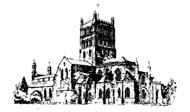
It must be around fifty years since we overlapped at Cambridge. Even then your talent as a composer was being recognized, and I have a feeling that whatever else you were going to be doing with your life, it was quite clear then that you wanted to compose. Yes, that’s true, I think I was regarded more as a cellist by some people, which was where I was really active, but in a small way I was getting performances around Cambridge, here and there. But at any rate in my own mind (which is your question) I definitely was aiming to compose.

And how long had that aim been with you?
That happened when I was a choirboy (at St. Michael’s College, Tenbury) and at the age of 11 I had for some reason this rush of adrenalin, and I decided I definitely wanted to be a composer.
There was a Damascus moment?
Yes, I remember it very well. The organist (Maxwell Menzies) struck a very loud chord, during one of his improvisations; and I loved the improvisations because they were wilder than anything we ever sang, and so that moment, that chord (I don’t remember what it was) was you could say ‘epiphanaic’. It had a lot of notes, in some kind of cluster; at that moment I decided ; and then I knew I had to remember that moment, that I must not forget it, and think back to it every five or ten years.
So, even at that early age, you knew where your impulse was going to go?
Yes.
As I was driving down to your home in Lewes this morning, I began thinking of one or two constants in the way you have composed, right back to 1974-1975 and the first Winchester Cathedral commission, The Dove Descending. I detected something which I have seen in many other of your pieces since –a fascination with one chord coming in and out of another, [JH Yes] and it seems to me that this technique is tailor-made for some of your work with live music and electronic music.
Very astute… because I love the idea of structure, but structure which becomes fluid. It’s almost as if (this has) become a kind of Buddhist aesthetic that all solid objects should dissolve, in the idea of emptiness; and in one form or another, this idea has been going on since then. With electronics, it’s very easy.
But how would you describe the way in which these chords/ideas dissolve, and how do they get resolved? When you start out, do you know?
No. It’s quite different now. I used to have a grand plan, usually, an idea of the piece as a whole, but I don’t really like that any more. I prefer to keep/give myself (more options)….)
Like going on a journey?
Yes, exactly; being open to the material and seeing where it might take you. That is even more interesting.
Yet from the first time we collaborated, you have been incredibly open and understanding over what we might call the limitations, the parameters within which we have asked you to work. I am sure you
remember the first occasion (with The Dove Descending). The Bishop-elect of Winchester, John Taylor, had invited me to set a text from Eliot’s Little Gidding, for his enthronement, but I had the sense to suggest that we approach a proper composer, and, with you living in the Diocese at Southampton, it was a perfect opportunity to ask you. However, given your reputation in 1975, when you were already established as a world authority on Stockhausen, and delving into tonal or rather atonal areas that were not the norm in the cathedral world, I felt that the Dean and Chapter might need some reassuring... do you remember coming to a Chapter meeting to face the clergy and hear what they and I envisaged for that service? Oh yes, that meeting.
I remember encouraging you to take advantage of the antiphonal possibilities, but there were other elements which you picked up on, the harmonics developing from the chords coming in and out, in and among the cathedral acoustics, which really add another dimension. Well, as you know, Winchester Cathedral is a sacred place to me, and that time with you was absolutely one of the most, one could almost call it, a ‘holy time’.
Yes, it was a creative time, thanks to John Taylor, and the Dean, Michael Stancliffe, in particular, all trusting, even though we did not (always) know where we were going.
The Dove Descending did take some learning, but it was not long before we started work on another of your pieces. With Dominic, your son, by now a chorister, you had been attending Evensong on Sunday afternoons, and I will never forget the moment when you modestly came into the South Transept one afternoon and said: “I’ve brought you a little piece; would you like to see it?” And that was I love the Lord. Do tell me how that piece gestated. I had spent so much time in the cathedral listening to the choir, absorbing the whole atmosphere of devotion, the sacred sound and the resonant sound, hearing the beautiful, controlled in-tune singing and so on… this had inspired me. It came all from the choir.
By then you had already composed one or two bigger works for the Three Choirs Festival, but, as far as I could tell, you hadn’t written pieces which could be slotted into the daily liturgy. No, no liturgical pieces.
And it is interesting, comparing you with someone like Messiaen, who had his great Catholic faith, but who felt unable to add anything to the liturgy.
Yes, that’s strange, isn’t it? But I like the idea of the liturgy very much –so different from the concert world –you are part of a communal act together; it’s not a piece of music just for itself, and somehow that is what the old composers must have experienced. You feel you belong to the ancient tradition of service for the church; they were quite humble servants. The main idea was to fit into the devotion which was all around them, and that I liked very much, being part of it, belonging. It was very exciting.
And that comes through in the way you wrote. But how did you
find an idiom, while keeping your own integrity, which would be right for the building and manageable by the fallible musicians, when you started work on The Dove Descending?
Well, you warned me, but at any rate I could hear quite clearly, that anything fast –semiquavers, for instance –doesn’t work very well. And the best thing is this wonderful, rather slow and complex procession of sound, which is so powerful. So I always wanted to take advantage of that, and I think that’s why my second Winchester anthem I love the Lord was the first tonal piece I had written for years, based on and in G major. And how could I write that without feeling that I had compromised? That was quite a question. I think the answer is that I gave up an ‘ego’ (Laughter.)
Yes, that’s right. I did not feel that I was writing something oldfashioned, or stale or whatever. I did not want to join an avantgarde movement once more. I just wanted to do justice to the words, the beautiful words –which were very close to my mother, when she was dying, which was one of the impetuses to write the piece...
And to be faithful to that was everything.
There was a kind of follow-up in Resurrection for the Three Choirs Festival at Worcester, but you also had a bigger denser group with low basses being asked to produce a bottom A, by an extraordinary technique, like a quint on an organ producing an overtone a fifth below. (Laughter.) But that was the only time since then that you have really limited yourself in quite that tonal way.
Yes, it was also tonal; it was also ‘inversional’, in a Schönbergian sense, as the inversion was fairly strict. But when you invert a major triad, of course you get a minor triad and its reflecting tonalities. And reflecting the title of Resurrection, –(life and death) were the two twin themes, one going down and one going up, obviously, so they reflect each other –quite a philosophical concept being portrayed exactly in the music.
Now, one of the most important aspects of your compositions for the liturgy has been to provide something of our time, but it’s fair to say that often their difficulty has militated against their having as many performances as the compositions deserve.
Mmm Yes.
I think the situation is getting better, and there are an increasing number of professional choirs in France, Germany and Holland who are doing these pieces, and a lot are appearing in concert programmes. Of course, I would love them to be done in the liturgy. I can’t really tell, because I don’t see the music lists.
Well, I can assure you that there are one or two winners, which appear regularly, I love the Lord, and in particular, Come, Holy Ghost, with its brilliant use of aleatoric techniques, but at the same time making it possible not only for people to sense the plainchant but enabling the singers to grasp where they are in relation to it. It actually acts as a useful adjunct in keeping everyone within a sense of their own pitch. Yes.
...because singers are quite often alarmed, if they don’t have accurate pitch themselves, by the sheer difficulty of pitching notes. The singers need some sense of where they are going to be. I have been aware of that, having been a singer myself, and I do know how difficult it is to pitch unless you have sense of where you are, or a tonality or a pentatonic mode.
That’s true of Come, Holy Ghost… ...which is basically pentatonic, so they do know pretty well where they are. But I sympathize with voices and I try to give them that orientation.
I have to say, however, that Angels, written for King’s College, Cambridge Christmas Eve Carol Service, is very beautiful but very demanding. The two choirs are very separate, almost going off at a tangent from one another.
It is difficult to pitch, more than I thought, perhaps.
It worked beautifully with the Netherlands Radio Choir in the Concertgebouw in 2006; and I was delighted at the packed audience’s, as well as the choir’s, response.
But perhaps of all the pieces commissioned for Winchester, the most original was the MagnificatandNunc Dimittis (Laughter) –Michael Tippett’s St. John’s Service in 1961 certainly felt as if it was breaking new ground, but 27 years later, you came up with something even more provocative –your Magnificat and Nunc Dimittis, which no less an authority than Nicholas Kenyon, writing in The Financial Times about the première at the combined Evensong during the 1978 Southern Cathedrals Festival, recognized as a landmark for Anglican church music.
In the Magnificat, the cantus firmus moves from part to part in a Webern-like way, and there are also some spoken sections, aleatoric passages, while in the Nunc Dimittis, we find an astounding fluctuation of sound to represent the light. How did you conceive that?
I liked the ‘t’s in light, and I asked the singers to emphasize these ‘t’s, which were aleatoric so they spattered about in chance formations –the more singers, the more ‘t’s. The whole aleatoric idea of these passages was to build up to a climax until the organ, which has been little used until that point, crashes in with a huge chord, using all twelve notes. The organ gradually winds down, and that’s the end. Light is represented by a very dramatic change of timbre and sound.
You mention ‘twelve notes’. How often have you written using serial techniques?
Up to about 1982 I used it a lot, not very strict, often tinged with tonality. I was taught by two Viennese Schönbergians, Erwin Stein and Hans Keller.
Were they very strict with you?
Yes, they were strict, but neither of them said you should write
serially, and they did not think that was the right way to go about it. Both of them thought that it should be very spontaneous, if I felt the need for it, to use it to give a kind of unity.
But when you say spontaneous, what do you mean? Where does the ear come into this?
That’s exactly what they were saying. If you don’t hear in the passage what you want, you shouldn’t do it... I wanted to go into it quite a lot, and went to study with Milton Babbitt, the archserialist, at Princeton, but I came away from that period feeling that if it could not really be heard, –what was the point,?
It’s an interesting point, because an audience, particularly the first time they hear a piece, is only going to pick up a certain amount. Yes.
Has this ever made you think that you should write more simply?
...Oh, yes, I have thought that from time to time, and that was in my decision to abandon serialism. I think the first example was probably the flute piece Nataraja. I also received a letter from Hans Keller, about being too intellectual and that if I would only forget my academic theories, I would be a good composer –pretty forthright, as usual!
You were probably already trying to break away from academia. But let’s move on to some of your electronic works, two of which were performed in Winchester. The Toccata for Organ and tape, which is rather like a concerto for organ and tape, and which I premièred in New York, works very well, but requires good speakers. And talking of speakers, one of the most remarkable sound experiences of my life (until last year’s Proms ‘performance’) was hearing Mortuos plango (which features the tenor bell of the Cathedral and the electronically adjusted treble voice of Dominic (Harvey) in Winchester Cathedral –with the speakers right up in the clerestory.
That was a dream, to have it come home. It took some trouble to get the speakers there,
that’s an understatement!
...but it was worth it. Of course, it’s a piece which owes every thing to Winchester…
and Dominic’s voice… ...and the bell.
It is the stage managing of these things, isn’t it, which is often timeconsuming and expensive.
That’s been my battle throughout my life… you had to try and persuade people that it’s worth doing, but people sometimes have been a bit lazy –it’s not just money –they can find money for this, that and the other, if they want to –but they are suspicious and wonder if it’s worth it.
And concert promoters are often scared if you put something modern on the programme, thinking that it will deter the audience. But Louis Halsey, for example, in the sixties and early seventies was doing ‘ancient and modern’, with a mix of programmes, including your Cantata I, just as later we did at Winchester –drawing the audience in, and then giving them something which was completely outside their experience. But I am delighted to hear that St. John’s College, Cambridge is doing your Canticles soon after your 70th birthday. Yes and you had some say in that, I believe.
Well I just put a bit of pressure on, saying it was about time they did them!
They are hoping to do three things, an organ recital
I have always thought that the ecstasies of the domain of love are very appropriate, just as some of the great mystics did...
including the Toccata, Fantasia and Laus Deo, and some chamber music in the Master’s Lodge. But I have a question for you about the Canticles; because without you, I would never have dared to ‘challenge’ and you said, “yes, come on, write something challenging”.
Well, it certainly ended up as a personal challenge, not least, dare I say, with my fellow organists at Chichester and Salisbury, and I knew when I first saw the score that there would be a reaction, and probably not a particularly favourable reaction. The only thing to do was to put it on the programme, and so we had to do it. In the course of the early rehearsals with the Winchester choir, we recorded sections on an old cassette machine, so that I could send John Birch and Richard Seal copies of how we thought it should go, for them to play to their choirs. One can’t pretend that it’s going to be easy for most cathedral choirs, unless they can make time for sectional rehearsals, [–as it happens, two of my most important innovations at Winchester, which were agreed before I had arrived there, were to have a short full choir rehearsal, before each service, and a men-only rehearsal each Monday evening]. But another help, and this is something which is such a blessing of the cathedral system here in England, is that you see the boys or girls every morning, and you can fit in ten minutes at the end of each practice; and so they have barely got time to forget it, if you can just get it into their system, because there is a kind of not only mental memory but also a kind of muscular memory. But there is no substitute for the person taking it on being clear in their own mind that they believe in the work.
I never did the Canticles at the Abbey, but that was primarily because of lack of rehearsal time with the men. But we were thrilled of course
to get the Missa brevis which has recently been recorded very well by the current Abbey Choir under James O’Donnell. And that offers another technique of yours, namely using speech. What appeals to you about that (some might say ‘extra musical’) ingredient?
It’s the idea of blurring, again, which you mentioned before –the combination of pitches and speech is a very definite blurring of musical pitches, so that the pitches and the speaking are somewhat random and cluster-like in effect; and if they are juxtaposed, they call each other into question, and the whole thing becomes more complex, becomes more ambiguous –I love that.
Do you feel that the spoken element is representing the congregation, as if part of the whole body corpus?
No. That’s a nice idea, but I had not thought of it. But maybe it does bring in the congregation.
In the Sanctus you chose very deep, low, beautiful sounds, which are sometimes quite difficult to hear, particularly in our cathedrals where the bass sounds tend to get lost. I was slightly surprised by that, but I knew that this must be what you wanted.
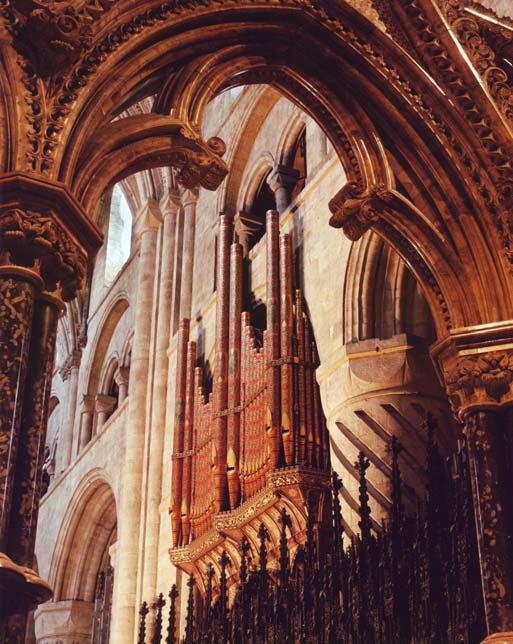
I love the deep low notes, very soft; I suppose I had thought that it would be fairly blurred, but anyway there are also the silences in the Sanctus, which are very much connected with Winchester and, I think, the Abbey. There is enough resonance to make the silences an integral part of the structure.
And silences also work beautifully in Thou mastering me God. My own test with that piece was keeping the choristers’ interest while they repeated the same note (G above Middle C) for 44 bars, although at times the G almost seems to change in relation to the
harmonies revolving around it. That’s very interesting.
...and then eventually those words, Over again I feel thy finger and find thee it’s as if you were using those words of Gerard Manley Hopkins in music to find ‘home’. Your suggestion for the words is a very beautiful one, and in the notion of being touched by God, the touching is very musically explicit, isn’t it?
There is at least one setting however, which is basically very simple –the Winchester Litany.

I have only heard it once, with you, but not since then.
There the words are intoned and heard very audibly, with just the minimum of harmonic change, until finally having that lovely flowering, when we reach the words: Holy God, holy and strong. (It’s published by OUP.)
Could you write something like that today?
Well, you see, that was really functional. At St. Michael’s I had sung the Litany every Friday morning. That came back to me, and I remember how we functioned, and how we sang these little phrases in procession, right round to the West End and back; they had to be simple and had to work when we were walking... All this was in my mind.
And it worked. This brings us to Bishop John Taylor (who had invited you to set the Litany), and without whom quite a few of the things at Winchester would never have happened. Yes.
The biggest of course was your church opera Passion and Resurrection. There’s nothing like that in the rest of your oeuvre, is there?
No. It was a culmination of the Winchester years, I think.
...and it’s exciting news that it’s going to be performed this year. Yes, The Portuguese are doing it and also the Austrians are doing eight performances with the Arnold Schönberg Choir in Ossiach.
Is it going to be staged?
Yes, I think there is going to be acting.
Good, because that’s what we have been really waiting for... Since the Winchester one...
when we were feeling our way. So well done...
...not least thanks to the participation of so many local people. It became a kind of Winchester ‘Oberammergau’, when, even though some of the parts were quite difficult, they were managed valiantly by the excellent local voluntary chorus, the Waynflete Singers... Yes, that was very inspiring...
...and it gave the whole thing a feeling that it was their work too. Local people gathered round in one way or another. Some made costumes, and it all began with the cast and backroom team attending a Holy Communion service in the Epiphany Chapel (in the Cathedral), celebrated by John Taylor.
There is a video of the BBC documentary. ...which has been seen by a lot of people,
...and it’s crying out for a performance in America. Is there anything looking back now which you would change? Would you leave it exactly as it is, after nearly 30 years?
I always said that the procession to Calvary was written at some length because of the very long Winchester nave, but it does not have to be that long, and I think one or two cuts for a concert version are in order.
It has an inevitability, which made me think of the Passacaglia in Britten’s Peter Grimes.
Interesting, or Death in Venice. That sense of inevitability was very much with me when I wrote it. I thought of it, as a ritualistic drama, as it must have been in medieval times; everybody knows the story… over many centuries, and one is just waiting for the inevitable to happen.
Its always said it’s easier to write music that produces an anguished mood; but yet you managed in the Resurrection to create a radiant orchestration, even though we were limited to the twenty players. You had the idea of the Three Marys from the libretto, but there is a sea-change in musical idiom, isn’t there?
Yes, this was a turning point for me.
You could not have written it while you were writing serially, could you?

Well, it is influenced by serialism, because it’s inversional. The whole piece is kind of ‘skewed serial’; the plainsong is one element, largely the pentatonic scale, and the series adds the remaining seven pitches as one unified Gestalt... The work is a kind of dialogue between the two: the anguished part is very serial –all the interludes in the first part. Then in the second part, the mirror inversion used in the Resurrection, I wanted to make very harmonious with triadic sonorities, but reflecting around the central axis, just as the axis of the world has changed at that moment –everything is different, a floating spiritual quality has occurred in some evolutionary jump…
Since you came back from Stanford, nine years ago, you have devoted yourself entirely to composition, and without having to do any other work. And it’s clearly been a fulfilment of what you have always wanted to do. Have you found it a godsend to have this freedom, or would you like to be able sometimes to have a little break from composition? (Laughter.)
I am forced to have a break, because my body demands it now, and I have to rest quite often.
Have you still time to write for the church?

St. John’s wants me to write something for their 500th in 2012, and Wells Cathedral have made me President of their New Music Wells Festival, and I have said that I will write them a little piece. I’m going over there to do a Round Table shortly.
When we look back at church music composed in the last quarter of the 20th century, it is absolutely clear that there are several of your works which are going to stand out: I love the Lord, Come, Holy Ghost, the Canticles and Missa brevis, commissioned by the Dean and Chapter of Westminster. (I am constantly thrilled by the opening of the Gloria and the beautiful augmented use of C major.)
Pentatonic again. I thought of God as pentatonic, and Jesus as tonal. In the Gloria there are two voices; the voice of and about God, and the voice of and about Jesus, and so I tried to juxtapose these contrasting elements.
You have also spoken about the ‘eternal feminine’; how do you think of the eternal feminine in music?

Well, that was something I became more and more interested in, in various ways, but it’s usually linked to the divine. Often Indian words are very explicit and Indian poetry. It’s such a mixture of the erotic and the divine. I have always thought that the ecstasies of the domain of love are very appropriate, just as some of the great mystics did –I have always found that connection very revealing.
Have you ever been tempted to set anything from the Song of Solomon?
I have used it, yes, but very early on, never I think since I was a student.
Well, it’s fascinating to think from those early days at Tenbury, when you were already beginning to explore sounds, that for the next sixty years you have literally continued to do that, incorporating all these extra techniques; and coupled with your imaginative use of texts, you have actually given to the church such a precious and sacred legacy, which I believe is being more and more appreciated. That’s very kind of you.
My colleagues and I look forward to many more things, but on behalf of us all, I should like to end by saying: “Congratulations, Happy Birthday and Thank you”.
Thank you, Martin. Without you, it would have not have happened. I say that quite categorically.
The programme for Martin Neary’s 70th birthday concert at St. John’s Smith Square on March 28, 2010, in aid of Music Therapy, includes the world premiere of Jonathan’s Song of June, composed fifty years ago, when they were both at Cambridge. [Ed]
Age: 37
Education details: Organ Scholarships at St Albans Abbey and Exeter College, Oxford.
Career details to date: Assistant Organist, Lichfield Cathedral 1994-2002; Director of Music, Truro Cathedral 2002-2008; Director of Music, York Minster 2008.

What did you enjoy most about working in a cathedral like Truro? The terrific Father Willis organ, the wonderful liturgy, the acoustic and the people.
What have been some of your highlights during your career?
The daily service is always a highlight especially when goals are attained. Also notable have been conducting some of the bigger choral and orchestral works in Truro Cathedral, performing for the Duke and Duchess of Cornwall and my first Christmas in York Minster.
Briefly tell us about a typical day at York. There is a rehearsal at 8.00 or 8.15 each weekday when I see the boys or girls of the Minster choir. I direct both and my assistant, David Pipe, helps me with the rehearsal by taking the group I am not seeing that morning. Often we swop halfway through. I then deal with emails and admin and attend various meetings until lunch. In the first part of the afternoon, I spend some time preparing music and sometimes do some organ practice too before collecting the choristers for their rehearsal before Evensong. The songmen then join us from 4.35-5.00 when there is a break. Evensong is 5.15 until just before six and then I often return to see my young children and wife or sometimes to make sure that the beer in the various hostelries frequented by the songmen is OK. I used to cook a lot and am trying to do more again.
Do you still play much, and if so, what organ pieces have you been inspired to take up recently and why?
I do play a lot, though much of my work is in recitals rather than in the Minster. I have been learning some Mendelssohn this year in honour of his anniversary and have recently started the Willan Introduction, Passacaglia and Fugue having been inspired by Francis Jackson’s account on the Minster organ.
Have you been listening to recordings of them, and if so, is it just one interpretation or many and which players?
I try to listen to as many recordings of works I’m learning as I have time for. I have enjoyed the recent Mendelssohn recordings on the superb Bernard Aubertin organ in St Louis in Paris.
What or whom made you take up the organ?
My father’s uncle was a well-known organist in my home city of Lincoln and I was also inspired by the organist at my parents’ church who was a very good player.
Which organists do you admire the most?
Simon Preston, Colin Walsh and Andrew Lumsden.
What was the last CD you bought?
One of the David Rees-Williams’ jazz trio’s albums of jazz workings of well-known choral and organ pieces.
What was the last recording you were working on?
A disc of popular Christmas music with the York choir.
What is your favourite organ to play? Truro Cathedral.
What is your favourite building? York Minster.
What is your favourite anthem? The one I’m conducting that night!
What is your favourite set of canticles?
As above, but I perhaps could addJackson in G and Blair’s epic setting in B minor.
What is your favourite psalm and accompanying chants? Psalm 90 to the marvellous F or G minor chant by F Hervey.
What is your favourite organ piece? The St Ann Fugue by Bach.
Who is your favourite composer? J S Bach.
What pieces are you including in an organ recital you are performing?
I’ve done several of Paul Spicer’s works recently and Tom Winpenny’s fiendish but rather brilliant transcription of the Spitfire Preludeand Fugue of Walton.
Any forthcoming appearances of note?
I’ve done quite a lot this year and next year at the time of writing I’m giving an organ prom in the Victoria Hall, Hanley, recitals in Beverley Minster and York Minster, Bridlington Priory and several smaller venues in the diocese.
Have you played for an event or recital that stands out as a great moment?
I enjoyed hugely playing at Liverpool Cathedral earlier this year and back in Lichfield days for six live broadcasts on television and radio in one month which was very memorable.
Has any particular recording inspired you?
I have learnt a lot from many of the well-known choral recordings from George Guest, Simon Preston, and Stanley Vann as well as more recent ones from Barry Rose, Christopher Robinson and David Hill.
How do you cope with nerves?
Careful preparation and really focussing on the moment rather than what is approaching.
What are your hobbies?
I love gadgets and technology and I’m interested in wine, cooking and interesting furniture and houses.
Do you play any other instruments?
I enjoy the odd bit of piano accompaniment from time to time.
What was the last book you read?
World Without End by Ken Follett.
What are your favourite radio and television programmes?
BBC Radio 4’s Today and Have I got news for you
Which Newspapers and magazines do you read?
The Times and occasional periodicals when I can.
What makes you laugh?
My choristers!
If you could have dinner with two people, one from the 21st century and the other from the past, who would you include?
The Archbishop of York and Winston Churchill.
What should be the role of the FCM in the 21st century?
To promote the best standards of music within the liturgy and support ways of maintaining it.
Many of this country’s most talented musicians have had the good fortune to benefit from an early musical education as a cathedral chorister. However, at the time of Henry Purcell’s birth in 1659, the possibility that he might gain such an opportunity must have seemed remote. Since the execution of King Charles I in 1649 and subsequent victory in the Civil War for the Parliamentarians, the people of England had been living under puritan rule. Charles’ son was in exile and the Church of England had been abolished. Religious music during this period amounted to little more than the unaccompanied singing of congregational psalms. Robed choirs had been disbanded, organs dismantled and entire libraries of musical scores destroyed.
Within months of Purcell’s birth, the situation changed dramatically. As a result of the political turmoil that followed the death of Oliver Cromwell, King Charles II was invited to return from exile and assume the throne. On 25 May 1660, Charles landed in Dover, entering London amid scenes of rejoicing on the thirtieth anniversary of his birthday. With the return of the monarch came the restoration of the Anglican Church and the re-establishment of choral foundations in chapels, churches and cathedrals throughout the realm. The task of re-building a tradition that had been denied to an entire generation was enormous and it is therefore unsurprising that musical standards around the country were not always consistently high during the months following the King’s return. Even the musicians at the Chapel Royal gave Pepys occasion to report in his diary on 14 October 1660: ‘an anthemne, ill sung, which made the King laugh’.
Henry Purcell probably entered the Chapel Royal as a chorister in 1668. By this time the standard of the choir under its renowned director, Captain Henry Cooke, must have improved greatly. During the 1660s, composers of choral music at the Chapel Royal were feverishly assimilating characteristics of continental music into their work. French culture was a particularly powerful influence and therefore the young Purcell must have become accustomed to performing new pieces by English composers that featured dance-like tripla sections, lilting dotted rhythms and bold
homophonic music, after the French style. He may also have been aware of an increasing tendency towards vocal writing in a more soloistic, declamatory style, facilitated by the general shift of emphasis during the seventeenth century from polyphonic music to music driven by harmonies deriving from the bass line. However, perhaps the most striking musical development at this time was the introduction of a string band of twenty-four players, evidently modelled directly on the famous vingt-quatre violons at Versailles. The King directed that they should regularly provide instrumental introductions,

interludes and accompaniment to the anthems sung in chapel. Therefore, as a chorister, Purcell would have heard some of the earlier attempts by composers at writing pieces in this entirely new genre of the English symphony anthem.
Purcell’s spell as a chorister in the Chapel Royal came to an end in 1673, when his voice broke at the unusually young age of fourteen (at this time choristers often continued to sing treble until they were sixteen or seventeen). He had almost certainly already begun to compose music by this stage, especially given the King’s tendency to encourage ‘some of the forwardest and brightest children of the chapel’, as we are informed by Thomas Tudway. Sadly however, the earliest known extant works by Purcell date from around 1677. Many of these early pieces reflect the mainstream traditions of post-restoration anthem composition without string symphonies. Of these, one of the better examples is Lord, who can tell, a verse anthem scored for SATB chorus and ATB soloists with continuo accompaniment. The work opens with a fully written out imitative organ introduction, not unlike those found in anthems written in the earlier part of the sixteenth century by composers such as Orlando Gibbons or Thomas Tomkins. However, this gives way to a figured bass line – which by now had become the standard way of notating instrumental accompaniment parts – at the entry of the bass soloist. The piece is in three sections with a concluding doxology. Although the first two are imitative in style, reflecting Purcell’s indebtedness to the older English polyphonic tradition, in the third section we find that Purcell employs a more fashionable homophonic approach. Furthermore, the second section is written in triple time, reflecting a popular trend in English sacred music through the Restoration period. Strikingly, the chorus is entirely subservient to the soloists, as is the case in many of these early verse anthems, and in fact only sings in the Gloria patri.
Often in these early verse anthems we also encounter musical features that point towards Purcell’s more mature, expressive style. For example, O Lord our governor – scored for the unusual combination of three treble soloists and two bass soloists with SATB chorus and continuo accompaniment –opens with a single bass vocal line written in a rather florid,

declamatory style that makes dramatic use of textual repetition, notably of the words ‘how excellent is thy name in all the world’. In the section that follows, Purcell exploits his unusual scoring with a charmingly colourful passage for three trebles, appropriately setting the words ‘Out of the mouths of very babes and sucklings has thou ordained strength’. Later in the work, Purcell demonstrates his continued concern with the rigours of counterpoint, writing a quasi-canonic passage for the two bass solo parts, lending the text ‘O Lord our governor, how excellent is thy name in all the world’ an air of solemnity.
Purcell continued to focus his attentions on writing for choir and continuo into his early twenties. A large number of such choral works that date from around 1677 to 1682 are extant in an important autograph manuscript that now resides at the Fitzwilliam Museum in Cambridge. Generally speaking, these pieces fall into two different categories that are defined by the nature of the role that the continuo part plays. On the one hand, there are those anthems that are composed with an independent basso continuo line (referred to here as ‘stile moderno’), while on the other there is a group of anthems where the bass doubles the lowest vocal part at any time throughout the piece (referred to here as ‘stile antico’).
Among the group of anthems written in ‘stile moderno’ is the wonderful Let mine eyes run down with tears. Typically of Purcell’s pieces in this manner, the text is penitential in nature and therefore the complex counterpoint of the musical setting seems appropriate. This work is characterised by the composer’s concentration on a very limited amount of thematic material as well as the use of what is commonly termed ‘dialogue’ technique. This can be illustrated perfectly by consideration of the opening section of the piece. It begins with a bass soloist’s entry, singing the words ‘Let mine eyes run down with tears night and day’, to which the second treble soloist replies ‘and let them not sleep’, set to contrasting musical material. These entries subsequently occur in dialogue between various combinations of different voice parts (the opening is scored for SSATB soloists). Dramatic tension is built up towards the end of the section by the gradual increase in the rate of the entries.
In addition to his own compositions, Purcell also copied works by English composers of the sixteenth and early seventeenth centuries into his music book (Fitzwilliam MS 88). Many of his own pieces in ‘stile antico’, which display a deep concern with rich polyphonic textures, are clearly modelled on music by pre-Civil War composers such as William Byrd and Orlando Gibbons. One example of such a piece is the famous anthem Hear my prayer, O Lord and let my crying come unto thee. It opens with an alto entry on the text ‘Hear my prayer, O Lord’, set to rather plaintive music based around two notes (a C natural that changes to an E flat on ‘O’ and back again to C on ‘Lord’). In contrast, the first treble responds with the words ‘and let my crying come unto thee’ set to a remarkable, chromatically expressive musical phrase with a melisma on ‘cry’, heightening the emotion of this word. The entire piece is based on the juxtaposition of these two simple ideas, which are frequently transformed by inversion and often adapted to fit the harmonic scheme of the piece, but nevertheless retain their essential characters. They are woven together to create an incredibly powerful eight-part polyphonic texture that builds to a wonderful climax, brought about by the eventual shift of emphasis to the words ‘and let my crying come unto thee’ during the final few bars of the piece. In fact, Hear my prayer is probably only the first section of a much longer work: in the autograph manuscript it appears without the customary flourish that Purcell inserted after the final barline of a piece and precedes a number of blank pages, seemingly left ready to receive the rest of the work.
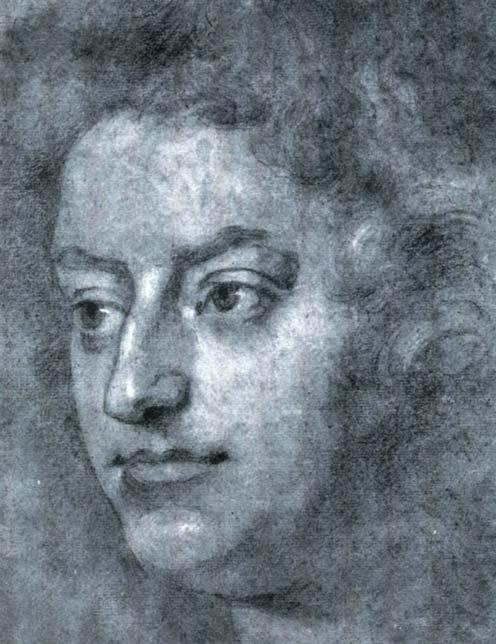
1682 marks a watershed point in Purcell’s career as a composer of church music, for it was in July of this year that he was appointed as one of the three organists at the Chapel Royal, succeeding Edward Lowe. Unsurprisingly, given the string forces available at Whitehall, it was at around this time that he turned his attentions wholeheartedly towards the composition of Symphony Anthems. Not that he hadn’t composed for the genre already: Purcell is known to have written at least four Symphony Anthems before 1680. These include Praise the Lord ye servants, If the Lord himself, Behold now, praise the Lord and My beloved spake. Of these, only the latter has
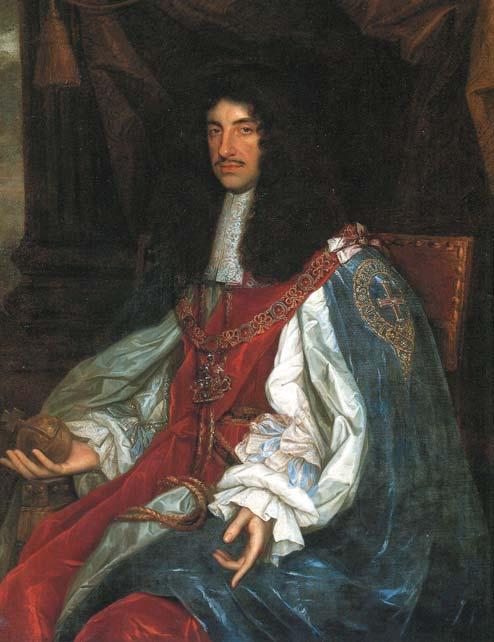
survived complete (in two separate versions) and it well deserves further discussion here.
The text for My beloved spake is taken from the Song of Solomon, II, 10-13/16 and is full of exotic and imaginative imagery to which the young Purcell responded by writing music that is at times extraordinarily picturesque and expressive. The piece opens with an instrumental symphony scored for two violins, a viola and a basso continuo section that would have consisted of a ‘cello, an organ and one or even two theorbos. This opening symphony presages the upbeat, joyful tone of the anthem: its dance-like music characterised with sprightly dotted rhythms in triple time is just the type that we can imagine would have delighted King Charles’ Francophile sensibilities. The remainder of the piece is additionally scored for SATB chorus and ATBB soloists, although the chorus plays very much a subsidiary part in proceedings, entering only briefly to join the soloists for the words ‘And the time of the singing of birds is come’, set to music in triple time, as well as at the final ‘Hallelujah’ section, again in triple time and characterised by an continuous string of dotted rhythms.
Throughout the piece there are delightful examples to be found of Purcell’s colourful musical setting of words and ideas, and of his ability to capture the mood of a text. For instance, the exhortation to the poet by his beloved to ‘rise’ is set to music that literally rises through the texture as the word is repeated in turn by the first bass, the tenor and the alto soloists. In the section that follows, Purcell sets the text ‘For lo, the winter is past, the rain is over and gone’ in a homophonic style, but maintains musical interest, as well as a keen sense of the dark, cold and rainy winter that has passed, through the intensely expressive use of suspensions and strange voice leading. The wonderful fourteen bar string interlude that follows immediately after this section is crammed with false relations, reminding us of Purcell’s indebtedness to the English tradition of polyphonic instrumental music. However, perhaps the most magnificent moment of the work is Purcell’s exotic setting of the text, ‘And the voice of the turtle is heard in our land’. Again writing in a homophonic style, he exploits experimental
harmonies and expressively chromatic voice leading that lends something of an otherworldly feeling to the moment.
Between 1680 and 1685 Purcell continued to write some two-dozen symphony anthems that all demonstrate, to a greater or lesser extent, the musical priorities audible in My beloved spake. A popular example that remains in the repertoire of many of our cathedral choirs today is Rejoice in the Lord alway. The piece is frequently referred to as ‘The Bell Anthem’, a reference to the splendid opening symphony that, with remarkable elegance, evokes the sounds of tolling bells through simple repetition of descending C major scales spanning an octave in the basso continuo. It is most effective when heard in its original scoring as, unfortunately, much is lost when this work is heard with all parts played on an organ, no matter how dexterous the player’s pedal technique!
Following the death of Charles II in 1685, his Roman Catholic brother James II ascended to the throne. For the occasion of James’ coronation at Westminster Abbey, Purcell wrote what might be considered to be his finest symphony anthem, My heart is inditing. Hitherto, the majority of his string anthems had been scored for SATB chorus with ATB soloists. There had of course been one or two exceptions, one of the most notable being Praise the Lord, O my soul, a landmark example of Purcell’s dramatic use of scoring, which requires two groups of soloists, divided SST TBB. However, in My heart is inditing, he seems to have relished the opportunity to compose for vocal forces provided on a grand scale (the choirs of the Chapel Royal and Westminster Abbey joined together for the occasion) and the work requires an eight part chorus as well as eight soloists. The piece conveys a general feeling of solidity and majesty previously unheard in his output for the Chapel Royal. After the opening symphony, it is the chorus that enters first, not the soloists as in his other anthems with strings. There is also a greater amount of thematic continuity between the various sections of the piece than has been previously seen. Additionally, the piece lacks the recitative like solo sections generally found in this type of piece and as a result seems more formally indebted to earlier anthems for chorus and soloists with continuo, though with a strikingly increased sense of grandeur and spaciousness.
During the reign of King James II, music at the Chapel Royal was almost entirely neglected. Increasingly, musicians began to seek additional employment opportunities outside the court and Henry Purcell was no exception. After 1685 it is clear that he dedicated more and more of his time to composing music for the theatre. He perhaps also became involved with the public concerts that were becoming a feature of London’s musical scene since their inception by John Bannister. Of the seventy or so anthems that he composed throughout his life, only around twenty date from 1685 onwards. In these later compositions, Purcell returned to writing continuo anthems, clearly reflecting the lack of resources now available at the Chapel Royal. However, these are generally not of the same quality as his earlier works and tend to employ tired, formulaic gestures that do not achieve the same intensity of expression.
The revival of the Chapel Royal during the joint reign of William and Mary, who were crowned in 1688, does not seem to have drawn Purcell back to composing sacred choral music on a regular basis. However, he contributed a small number of works that were evidently written for special occasions. Amongst these, the symphony anthem O sing unto the Lord is a spectacular example and shows how far Purcell had developed
the genre in a relatively short space of time. Perhaps the most obviously remarkable aspect of the writing is the way in which he combines his musical forces to greater dramatic affect than in any previous anthem. There is far less delineation between soloists, chorus and orchestra. For instance the chorus is employed in dramatic dialogue with the bass soloist, who sings the text ‘tell it out among the heathen that the Lord is king’ to which the chorus reply affirmatively ‘the Lord is king’. The sentiment of the text ‘Glory and worship are before him, power and honour are in his sanctuary’ is captured as chorus and strings alternate in quick succession, the instruments affirming the meaning in their short interludes. Perhaps most significantly in O sing unto the Lord, Purcell employs greater thematic continuity between the sections. While in My beloved spake, the opening symphony sets the tone of the entire anthem, in this later work the opening symphony presents material from which much of the thematic material is derived through the remainder of the piece.
Henry Purcell is rightly acknowledged as one of the finest composers this country has ever had and we are remarkably lucky that such a composer produced so many works for the church of such high quality. However, just as the decline in the provision of strings at the Chapel Royal led to a decrease in the rate of his output of symphony anthems, so we find that the inevitable lack of such resources in our Anglican foundations today limits our opportunities to hear many of these compositional gems put to their original devotional purpose. What is perhaps a cause of even greater sadness though is the widespread neglect of the large number of anthems by Purcell that require continuo accompaniment alone. It is to be hoped that on this, the three-hundred and fiftieth anniversary of the composer’s birth, we will begin to look beyond the handful of well know choral works by Purcell and discover some of the treasures that lie beyond.
Bibliography
Adams. M., Henry Purcell: The Origins and Development of his Musical Style.
Cambridge University Press, Cambridge, 1995.
Burden. M., (ed.), The Purcell Companion Faber and Faber, London, 1995.
Burden. M., (ed.), Purcell Remembered Faber and Faber, London, 1995.
Holman. P., Henry Purcell. Oxford University Press, Oxford, 1994.
Holst. I. (ed.), Henry Purcell 1659 – 1695: Essays on His Music.
Oxford University Press, London, 1959.
King, R., Henry Purcell. Thames and Hudson, London, 1994.
Mundy, S., Purcell Omnibus Press, London, 1995.
Spink. I., Restoration Cathedral Music 1660 – 1714. Clarendon Press, Oxford, 1995.
Zimmerman, Franklin B., Henry Purcell, 1659 – 1695: His Life and Times. University of Pennsylvania Press, Philadelphia, 1984.
In this new series we look back at well-known personalities who have been cathedral choristers. The first is Stephen Orton, Principal Cello with the Bournemouth Sinfonietta and the City of London Sinfonia.
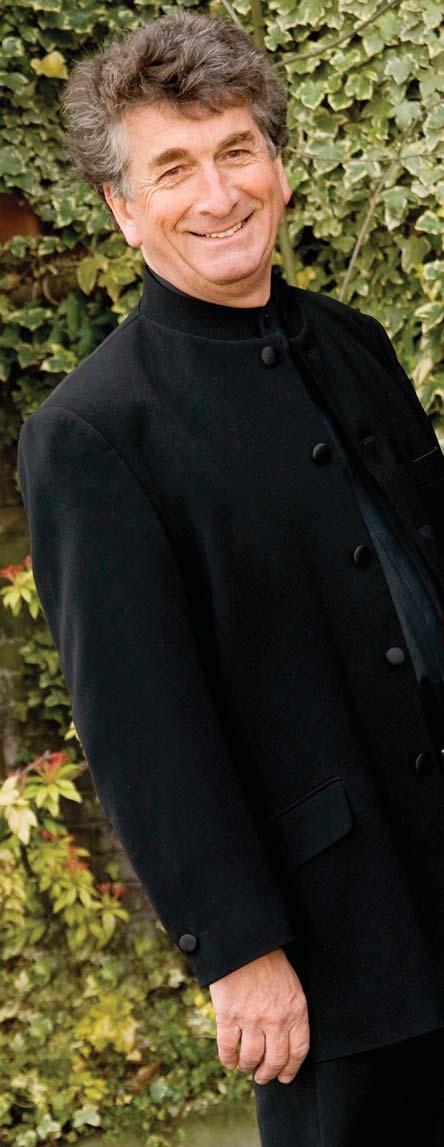
What are your career details and what are you now doing?
Stephen Orton was born in Ripon, where he was taught the cello by Pauline Dunn, before winning a scholarship to study with William Pleeth at the Guildhall School of Music and Drama. In 1985 I became First Cello with the Academy of St Martin in the Fields and played concertos with the orchestra. I often acted as Principal Cello with the London Symphony Orchestra and the Philharmonia and gained wide experience of chamber music performing with the Delmé Quartet for 10 years and the Schubert Quintet and Chilingirian Quartet and now play with the Academy Chamber Ensemble touring internationally and making numerous recordings. I have been involved with film music ie Harry Potter films, Gladiator, James Bond and many other TV series as well as Paul McCartney’s Ecce Cor Meum many times.
What cathedral were you a chorister at?
Ripon Cathedral.
When were you a chorister?
From 1957 to 1961.
Who was the organist? What was he like?
Lionel Dakers, briefly followed by Philip Marshall who seemed to be very eccentric and who accompanied me on the cello. He was a great train enthusiast and made exceptional models.
What other activities did you participate in?
Sport. I enjoy most sports today including cricket and play for my local team in Hertfordshire.
What is your abiding memory of your time as a chorister?
I was very excited when we were televised and I particularly remember coming out to 4ft drifts of snow one year.
What values did it teach you?
Marvellous discipline. And the singing in the choir taught me that as all musicians should, to approach music through a singing voice as it helps one think about the music breathing.
Did you board?
I believe I was one of the last local lads as the Choir School was just beginning.
Who is your favourite composer? Haydn and Beethoven.
FLYING THE FLAG
CATHEDRAL MUSIC Editorial Adviser, Matthew Owens, took to the skies earlier this year with a tandem skydive. On Saturday 23 May our intrepid organist jumped out of a plane at 15,000 feet and skydived at 120mph raising £2500 for Wells Cathedral Choir Tour Fund. There was only one problem, the organisers didn’t have a suit big enough for Matthew.


“It was great fun –thoroughly recommended!”, Matthew said. I am sure any retrospective donations can be made to the Wells Cathedral Fund [Ed].
The catalyst for this new venture was the arson attack on St John’s Church, Devizes, in September 2006 and the subsequent destruction of the choir’s copies of their own Psalter, edited by Jon Riding, Organist and Choirmaster. An unlikely silver lining other than huge sympathy and goodwill from all quarters was an opportunity to revise the lost edition, and The Wessex Psalter is the result. It is due for publication in November, with the RSCM handling distribution. The editors, Jon Riding and Nicholas Hale, have wide experience at cathedral, college, school and parish choir level. They hope that this new, accessible edition will encourage, and even re-introduce, the practice of psalm-singing to Anglican chant as part of regular worship.
The emphasis throughout has been on clarity, both in terms of page layout and in the pointing of the text. Chants chosen, a mixture of old and new, are ‘singer-friendly’ in avoiding high reciting notes and ironing out awkward passing notes. The psalms are arranged for the Daily Office as set out in the BCP, and there are Orders of Service for Morning and Evening Prayer, complete with Ferial Responses. A further feature is the provision of footnotes explaining the more bizarre of Coverdale’s translations, answering those questions which inquisitive choristers like to ask harassed choirmasters: “How am I become like a bottle in the smoke?”, “Why should I avoid the stool of wickedness?”, “What exactly is a Leviathan?” and “Where is the wilderness of Hades?”
The Wessex Psalter is a beautifully produced hardback volume. Further details, including sample pages, may be found at www.wessexpsalter.co.uk or by contacting Phoenix Press at phoenix@sjbnet.org.uk Orders, including discount arrangements and pre-publication offers, from www.rscm.com. The striking phoenix logo symbolises ‘an enduring tradition reborn’.
Ripon Cathedral Choir School has appointed, a new Headmaster, Chris McDade, who was Director of Music at St Edmund’s School, Canterbury and a new Director of Music, John Wright, who comes north from Westcliff High School for Boys, Essex.
PISTON CHANGES
Harrison & Harrison has announced that David Hirst has succeeded Mark Venning as Managing Director. Mark, who has held that position since 1975, will remain as Chairman.
David’s musical career started in Chichester Cathedral, where he was a chorister under John Birch. Later he was organ scholar at Emmanuel College, Cambridge, where he studied music and had organ lessons with Nicolas Kynaston. Between 1985 and 2002 he worked for major companies in Japan, the United States and London. He has studied the organ with Thomas Trotter, and recently graduated with a diploma in organ performance from the Royal Academy of Music, where his organ professor was Lionel Rogg. He joined H&H in September 2008. Katherine Venning retired after 20 years as Administrator of Harrison & Harrison. Her successor is Naomi Hirst.
An extensive survey of churches in part of southern England has revealed that music still plays a key part in worship, but that there’s room for further growth. The survey, carried out by the RSCM in the area covered by the Guildford Anglican Diocese, gives a contemporary snapshot of the strength of church music, including the number of choirs and music groups, and the type of instruments used.
Almost 90% (188) of the Anglican churches in the Diocese were surveyed. Of these, the proportion of traditional organ/piano accompaniment (as opposed to organ and/or music group) is more or less evenly balanced at 48% and 44% per cent respectively. 118 churches (63%) have a choir that sings regularly, while 97 (52%) make use of a music group, playing anything from flute and guitar to a rock band, with 14 churches (7.5%) using a music group or band exclusively for their worship. When it comes to younger people, the provision and support is not so strong; whilst a number attend junior church sessions (3676), only 53 churches (28%) as yet run junior choirs, with a total of 422 young singers. Commenting on this aspect of the survey, Lindsay Gray, the RSCM’s Director, says: “I am intrigued that while there are good numbers attending junior church, we do not maximise that potential in terms of involving them in choirs and music groups.”
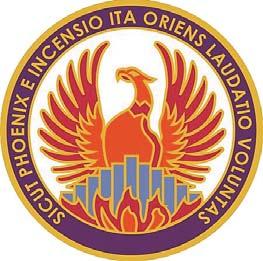
The survey also reveals interesting statistics about the number of singers and the average size of choirs. There are nearly 1,900 choir singers and 850 musicians in music groups and worship bands. The average size of an adult choir is a dozen singers, and 8 for junior choirs. 15 churches (8%) possess choirs with fewer than six singers, while 24 (13%) have no choir or music group. “The results of this survey give us plenty of food for thought about the training needs of churches in the area,” says Ian Church, a member of the RSCM Council and survey author. “We have an excellent programme of events and workshops; this survey will help us to do the job better for those churches that join us.”
About half of the Anglican churches in the area are affiliated to the RSCM. Churches were also asked to draw up a ‘wish list’. Responses included an accessible list of deputy organists, more singers, more choir trainers, organists willing to take on a permanent position, and musical training for clergy. There were also requests for the RSCM to run local workshops on a range of topics including how to run a junior choir, and how to recruit young organists.
“If what is happening in the Guildford area is replicated in other areas around the country, then there is much here that is encouraging, but quite clearly there is potential for further growth,” says Lindsay Gray. “I am also very keen to address the serious need for musical training of clergy. Our training programmes such as Voice for Life, Sacred Music Studies and our brand new Church Music Skills are all helping individuals, schools and churches to produce engaging and exciting musical results in church.”
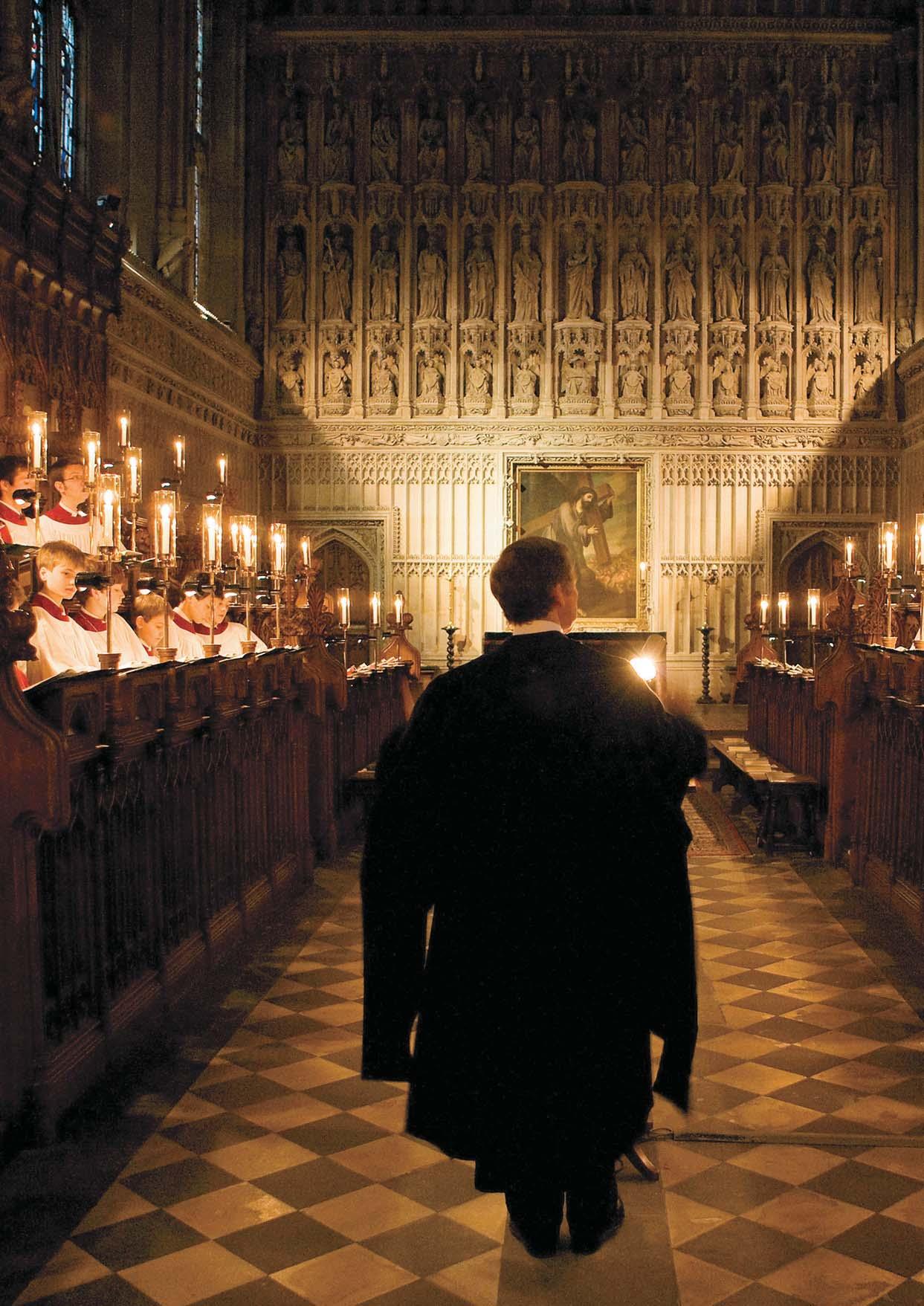
Bill. Tell the readers of CATHEDRAL MUSIC why you feel it’s time to move on from your position as Informator Choristarum at Magdalen College, Oxford –especially when things seem to be going so well?
I feel it’s time for me to concentrate on other musical things –at least give myself the opportunity to do so. For the past 18 years my college commitments at Magdalen have demanded 100% attention – it’s pretty much a one-man band. And it’s been going well in the past few years, but there’s a lot to be said for leaving at the top of your game!
In recent years I have found the teaching side of things less challenging – and a number of my colleagues in other departments say exactly the same. A thorough knowledge of harmony and counterpoint is fundamental to the study of music (and, to me, endlessly fascinating), but, sadly, it is now an option in the second and third year course at Oxford. So in the final examination a student need not sit a harmony paper – which is rather like doing medicine without having to study anatomy. I think this has been brought about by current GCSE requirements, meaning that the serious music student – unless lucky enough to attend an enlightened school – doesn’t begin to study harmony until A level – which in turn has had a knock-on effect on the university syllabus. It’s a great shame – and we’re all the poorer as a result.
As far as my work with the choir is concerned, of course some issues have got more complicated – child protection, constant supervision of the boys, etc. This makes life much more demanding.
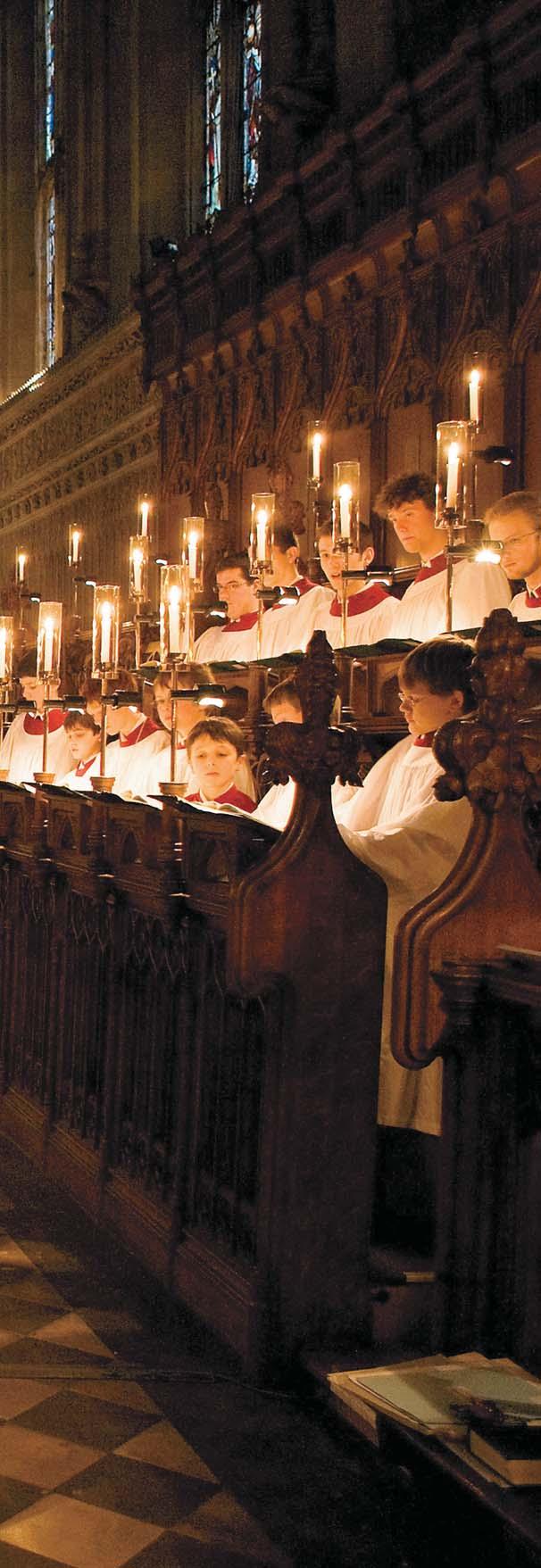
Do you feel it detracts from the music-making?
Yes it does – and one’s relationship with the children is put on a different footing. But it’s the same for everyone these days.
Tell me about recruitment for the college choir.
We’re very lucky as regards recruitment. The choristers attend Magdalen College School which is highly respected – recently Sunday Times Independent School of the Year and in the top 10 of this summer’s league tables – it has a great reputation within the city. Lots of Oxford parents want their sons to go to MCS – so we have internal recruitment for choristers as well as external. We also hold open afternoons for parents of potential choristers, and open days at the school.
I think I’m right in saying that Oxford is the only city in the country with two day-boy choirs (as opposed to boarding). Magdalen College School and New College School both
closed their doors to boarders in the early 1990s. In a way, boarding is much more preferable for choristers – the boys are more focused, there’s less daily travel and they’re generally less tired and distracted. When I was a chorister at Ely I saw my parents perhaps two or three times a term. My junior and senior houses were a stone’s throw from the cathedral, so commuting was a doddle!
When I first arrived, Michael Howard was the Organist: a brilliant maverick! Then Arthur Wills took over and it was his playing of the French organ masters, especially Vierne and Messiaen, that drew me into music: a combination of the sound of the choir, the organ and the building – such a potent mix. But what I most remember of my time as a chorister were the psalms. Arthur was a masterful accompanist of the psalms, using a huge palette of colour – brilliant effects, yet very subtle, beautifully reflecting the magnificent imagery and majesty of the words.
At school I struggled with exams and yet the Director of Music wanted me to try for a choral scholarship at Cambridge. I thought this a bit of a hoot, but in those days you could sit an entrance exam – thank goodness! I got through it and was given a Choral Exhibition at Selwyn. I remember standing in King’s Chapel (where the auditions were held) singing The Call by Vaughan Williams, accompanied by Andrew (now Sir Andrew) Davies, who was then the King’s organ scholar. Then on to a huge, long room in King’s for the sight-reading, the tutors ranged around an enormous table –some smoking, some reading the paper. They thrust a Byrd motet into my hands, I was given a note and asked to sight-read it – without accompaniment!
While I was at Selwyn Philip Radcliffe was my tutor. I went to George Guest for aural tests, which was fun – he had a very whimsical, laid-back approach which I very much appreciated. Stephen Cleobury was in the same class and would always appear in collar and tie (the rest of us in regulation 1960s student garb) –and he could name all the notes of any complex discord without any difficulty. Mind you, I think he has perfect pitch!
I passed my exams and opted to do a teaching diploma. Teaching practice was at Cranleigh School and while I was there I saw an advert for a tenor lay clerk in Guilford Cathedral Choir. I met Barry Rose, did the audition and he
offered me a place: £18 per month – pre tax! I needed something else to boost my income and found a job at Reed’s School, Cobham, a boys’ boarding school not far from Guildford. The Head was very accommodating about my wanting to sing at Guildford Cathedral, so every day at teatime I drove down the A3 to sing the daily office. My five years at Guildford were marvellous in so many ways, not only because of the lovely people I met there and the tremendously high standard of the music-making, but also because Barry encouraged me to write new pieces for the choir. As any composer will tell you, hearing what one has written is invaluable, and I’ve always remained immensely grateful to Barry for giving me so many opportunities over the years.
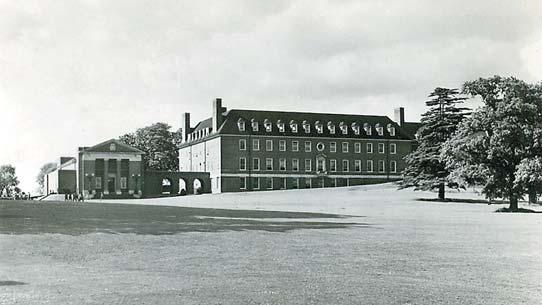
How did you come to join The King’s Singers?
In 1977 I moved to a teaching job in Chichester and decided to give daily choral singing a rest. But I did join a close harmony group and, unknown to me, the director of that group was a good friend of two of the King’s Singers. Just at that time they were casting about for someone to replace their tenor, Alastair Thompson, who had decided to leave the group. My name cropped up, they sent me some music, I did several auditions (over a period of six months) and eventually got the job. It was only afterwards that they admitted they’d been concerned about my height – or lack of it – as all the others were tall, beefy chaps, and on stage I looked rather vertically challenged!
My first KS concert was at Sherborne School, Dorset on 8 May 1978. Suddenly I found myself a high profile professional singer – slightly scary, especially as I’d only ever been a
cathedral singer since I was a lad. Not quite the same as singing to packed houses all over the world. Fortunately it was fine and I sang for seven years. Then a curious thing happened. I was going through a divorce and the effect it had was that I lost my singing voice – gradually at first, then completely. It started to happen in May 1985 at a concert in Brighton. I’d never had a problem floating between the tenor and alto range (my regular KS tessitura), but without warning, notes began to crack and the range quickly became restricted and unreliable. I’d never had singing lessons and so when things started going wrong vocally I didn’t know what to do. The other members of the group were very understanding and suggested I have six months’ rest and then try again. But it wasn’t to be. The medical profession said there was nothing wrong with the vocal folds and put the problem down to emotional stress. So I had to leave the KS and look for something else to do.
How did you go about it?
It all looked a bit bleak – but I decided to put together a brochure advertising my wares (composing, arranging, workshops, etc) and sent it to everyone I could possibly think of – including John Harper, then Informator Choristarum at Magdalen. I knew him from my Selwyn days where he’d been the organ scholar, and also from the Edington Festival where I directed the Nave Choir in the early 1970s. He offered me a day’s teaching at Oxford – and I used to travel all the way from Kent just to do six hours’ teaching. The pay just about covered the cost of petrol!
So that’s how you first arrived in Oxford?
That’s right. When it was announced that John Harper had been appointed Professor of Music at Bangor, University of Wales, much discussion arose as to who would succeed him at Magdalen. Each week my students would fill me in on the latest developments –who’d been short-listed, the date of the interviews, etc. But Magdalen didn’t make an appointment –so a vacuum arose and they needed someone to step in and

hold the fort until a permanent appointment could be made. That’s how I began my time at Magdalen! It was not easy at first – adjusting to the academic environment, learning to work with the Choir on a daily basis, coping with the managerial parts of the job. It really took ten years before I felt confident in the job. Oxford is a hothouse environment, everyone rushing around, constantly striving. I got caught up in it and felt that I had to live up to the high expectation demanded of the choir. A road to nowhere! However, as we all know, what really matters is that the young people in one’s care are nurtured and taught the art of music and thus the meaning of what is true and lovely.
What have been the highlights of this job for you?
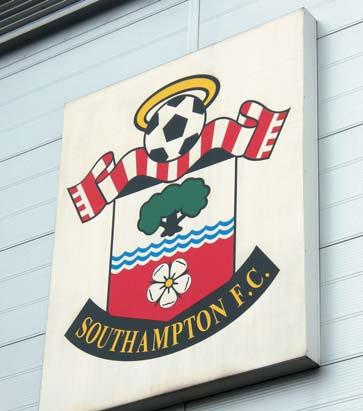
Making music in a serenely beautiful building with a group of intelligent young people. I always enjoy working with the boys in the morning, and love the one-to-one tutorials with the students. I’ve relished the chance to pass on my enthusiasm for music – and it’s a challenge keeping it fresh. I have found that if you talk about the things that interest you, the choir will respond. We talk a lot about the text; at Ely we used to sing large amounts of music in Latin and I don’t recall always knowing what it meant. A few moments talking about the text can transform the way the singers approach a piece. And it’s always interesting to talk about what the composer is doing, and why –drawing the singers’ thoughts away from that terrible mindset of ‘making mistakes’. We all make mistakes – and after all, that’s how we learn. But a climate of apprehension creates tension, which can manifest in a tight vocal quality. The trick is to keep the outfit disciplined, focused and highly professional, but not through an atmosphere of fear.
Other highlights?
Going twice to Japan (1995 and 1998); appearing in Richard Attenborough’s film, Shadowlands, which was presented as a Royal Film première attended by the Prince of Wales in the Odeon, Leicester Square. The score was composed by George
Fenton – a wonderful, highly gifted man, with whom we’ve worked on many projects since: we ‘ooh-ed’ and ‘ah-ed’ on the score for Blue Planet for example!
Working with Paul McCartney was also a huge thrill. Magdalen’s President at the time, Anthony Smith, had the crazy idea of asking PM to write something for the Choir. By chance, at the time PM was looking for something a bit different to do, so he and Linda visited the College (in 1995, I think) and came to Evensong. I met him after the service and he remembered that in my King’s Singers days I’d been part of the Frog Chorus on his hit single, We all stand together. A year or two later he came up to Oxford again with an early draft of the piece – Ecce Cor Meum – and we spent about an hour together looking through it, he – one of the greatest song writers of the twentieth century – asking me what I thought, in a rather apologetic way! It was truly a surreal moment. The recording of the piece went on to win a Classical Brit Award.
Another highlight was the Grammy nomination for our Gibbons disc, With a Merry Noyse. I thought ‘this isn’t going to happen again in my lifetime’ so my wife, Janette, and I went to Los Angeles for the ceremony. A true showbiz event –a vast arena in Staples Centre –our thoughtful hosts providing us with industrial earplugs for the rock concert that followed the awards.
Unusually, we have no organ scholars at the moment. No one suitable has come forward over the past two years. But we do have an Assistant Organist (a two-year post) and an excellent graduate student as Associate Organist –both of whom play for services.
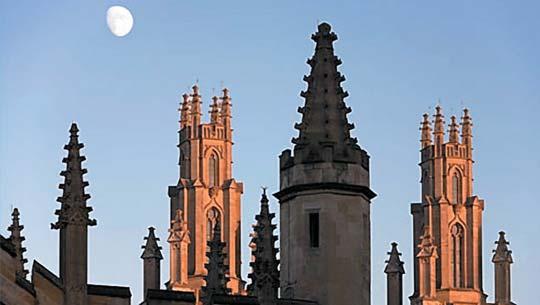
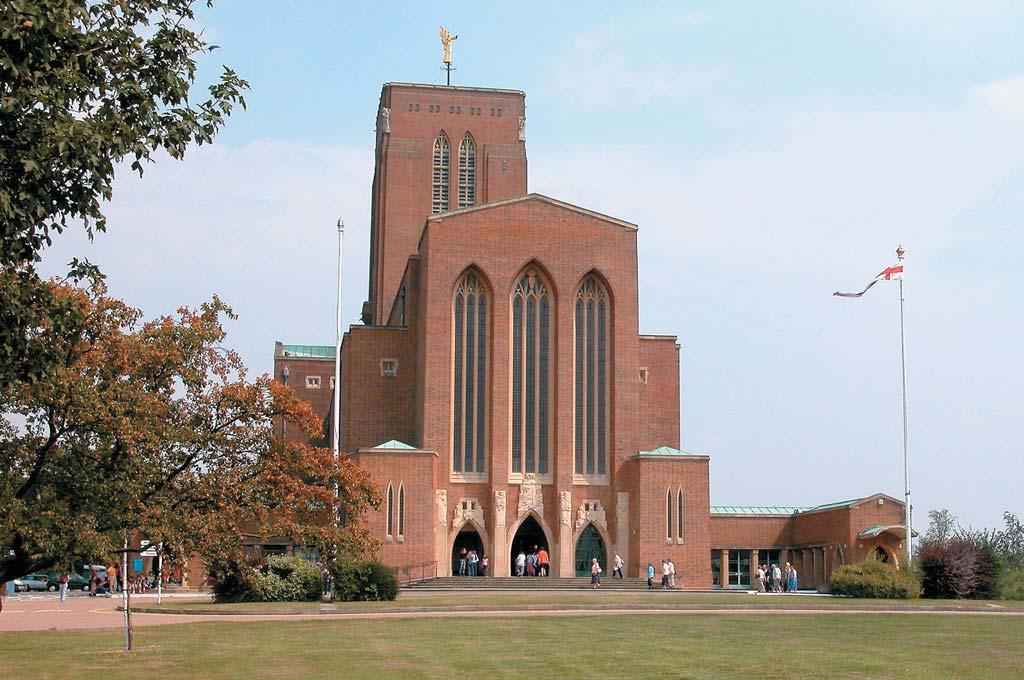
Andrew Swait; treble
Alexander Ffinch; organist
Trinity College of Music Chamber
Choir; Stephen Jackson, conductor
Including music by, Stanford, Britten, Mendelssohn, Rutti, Berkley, Ireland, Leighton, Head,Warlock & Maconchy
Applications for Academical Clerks [the altos, tenors and basses], have been very good over the years. We’ve not always been able to fill all the spaces with undergraduates –the academic requirements are 3As at A level and there’s no leeway on that. An added challenge is that an increasing number of smaller colleges are now looking for their own choral scholars. And of course, Magdalen is in competition with all the other colleges –and Cambridge.
Is there any pressure to start a girls’ choir at Magdalen?
Not at the moment; funding would be an enormous issue. But Magdalen College School is about to begin taking girls in the Sixth Form, so who knows what might happen in the future?
Tell me about your work as a composer.
A Garland for Our Lady Choir of the London Oratory
Director: Patrick Russill
Organ: John McGreal
Sponsored by Aid to the Church in Need
Including music by, Victoria, Elgar, Bruckner, Palestrina, Handl, Guerrero & Howells


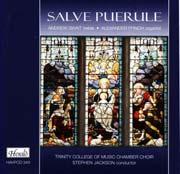
Chichester Cathedral Choir
Director: Sarah Baldock
Organ: Mark Wardell
Popular Carols including, In the Bleak midwinter, The little road to Bethlehem, Away in a manger, Sussex carol, Hark the herald

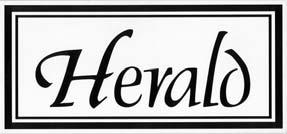
Large-scale anthems from the Victorian Era
Exeter Cathedral Choir
Directed by: Andrew Millington and Stephen Tanner
Organ : Paul Morgan
Includes: The Wilderness, I saw the Lord, It came to Pass, If the Lord himself
Ever since I was a chorister at Ely I’ve been writing music –almost all of it for voices and organ. At Cambridge there was no composer on the university staff at that time, so I wrote to Richard Rodney Bennett who agreed to give me some lessons. He was a great inspiration and it was very exciting to visit the home of a real-life working composer. As I said earlier, Barry Rose played a central role in encouraging me to write for the Guildford Choir. I also composed some introits for the BBC Daily Service, thanks to Barry.
Through the King’s Singers I came into contact with many highly gifted arrangers, including Gordon Langford, Peter Knight (director of music for Morecambe and Wise) and Daryl Runswick. It was a huge privilege to be able to study their scores – and I learnt a tremendous amount.
Over the years at Magdalen, most of the music I’ve written has served to plug gaps in the repertoire. Some of these have made their way into the repertoire of other choirs, which is very pleasing. My biggest project to date is a Requiem written last year and commissioned by Magdalen to mark the College’s 550th anniversary. I also like to write for the RSCM – works which will be accessible to parish church choirs –tuneful and interesting, but with a bit of a challenge. All composers want their music to be used and I always try to produce something serviceable that can be rehearsed quickly, such as the Missa Brevis. Quite a few have been published over the years, but many pieces are available via my website: graystonives.com. I’ve got a number of commissions on the go at the moment – and am always open to offers!
After Magdalen, I want to focus more on composition and type-set some of the pieces that I’ve already written. I’ve loved working with the choir, but it will be grand to have more time for my own work. I won’t miss sitting on committees or the tremendous amount of paperwork that organists’ jobs generate these days. I will relish taking up any new opportunities that come my way.
What will you do in your spare time, if you have any?
I’m not a great one for hobbies, but I’ll go and watch Southampton Football Club when I can –a connection from my Chichester days. I’d also like to do more cooking – we have an Aga at home –and perhaps attend some cookery courses. I’ve always wanted to keep chickens, although we have a lot of foxes prowling around our house –and even a family of mink –such vicious little creatures. I’m really looking forward to living in the country and being near the sea again –on the Kent/East Sussex border. And we’re going to get rid of our TV (so invasive and noisy) so that we can spend our time reading and listening to music.
Over 150 people returned to a choir gathering at Hereford Cathedral when former choristers, lay clerks, organists and others involved with the choir came together to celebrate this year’s Three Choirs Festival. Lindsey Lafford, the oldest choir member present, is in his 97th year and is one of the few remaining choristers to have sung under the baton of Sir Edward Elgar. ‘It was wonderful to have such a group come together and, while all had the common thread of having been in the cathedral choir, the stories and experiences that they were swapping obviously showed how choir life had changed,’ said Robert Rogers, Chairman of Hereford Cathedral Perpetual Trust. Others who attended the gathering included Michael Burlton, who was an assistant organist in the late 1950s, the Revd Denis Parry, who was a lay clerk from around the same time and a number of choristers who helped keep services happening during the second world war. If as a former chorister you would like to receive invitations to future events please contact Hereford Cathedral Perpetual Trust (01432 374261: perpetual.trust@herefordcathedral.org).
This year is the 80th anniversary of Leighton’s birth, and there have been many concerts to mark the year and still more are to come. A list of these can be seen on the Edinburgh University Website at www.music.ed.ac.uk/Resources/leighton The untimely death of Richard Hickox in December 2008 was a great blow for British Music, of which he was an outstanding champion. He will be sorely missed. He was due to record Leighton’s 1st Symphony as well as the 3rd Piano Concerto (with Howard Shelley) for Chandos in December of this year. The recording will go ahead as planned and we are very pleased to hear that Martyn Brabbins will be conducting. Mr. Brabbins is familiar with the 1st Symphony, having performed it with the BBCSSO.
The Royal School of Church Music (RSCM) marked the 30th anniversary of the death of one of its most distinguished directors, at a special service held in Bristol. After working for many years with Sir Sydney Nicholson, founder of the RSCM, Dr Gerald Knight CBE was appointed as the second director in 1952, and held the post for 20 years. The celebration of Dr Knight’s life and work was marked by a service of Choral Evensong in St Mary Redcliffe, Bristol, on September 19th and was sung by the RSCM Midlands and South West Cathedral Singers. The music included compositions and arrangements by Dr Knight, including O Saviour of the world, a previously unpublished anthem which was discovered in the RSCM Archives by the Honorary Librarian, Dr John Henderson. “Gerald Knight was a key figure in the development of the RSCM’s work in supporting organists and choristers,” said Dr Henderson. “He was the second most important person in the organisation’s history, after the RSCM’s founder, Sir Sydney Nicholson.”

The choir was director by Bryan Anderson a former RSCM South West Director and the address given by Dr Henderson.



The Royal School of Church
Music has appointed a new Head of Development, with specific responsibility for fundraising. Catherine Clark brings thirty years’ experience of fund-raising for charitable organisations both in Britain and the United States. Catherine Clark’s primary responsibility will be in fundraising and in leading the Communications, Marketing and Development team. One of her first projects will be to develop a substantial annual fund to support RSCM programmes, including a choir for singers aged over 23 to complement the RSCM’s flagship Millennium Youth Choir. “We are delighted to have Catherine on board,” says Lindsay Gray, Director of the RSCM. “The bulk of the funding that enables us to support and promote sacred music comes from subscriptions, but the need for our work around the world is expanding. So we need to find extra income; hence Catherine Clark’s appointment as Head of Development.” Before joining the RSCM, Catherine Clark was based in the United States, where previous appointments included Director of Institutional Advancement at the YWCA Boston and Interim Director of Development at the Jewish Women’s Archive. In 2007, she co founded the American Friends of The Boston Stump, raising £1 million toward the restoration of St Botolph’s Parish Church in Boston, Lincolnshire, which is celebrating its 700th anniversary this year. “As a musician, a naturalised British citizen, and a development professional, I feel that I have found the perfect place to work. The RSCM mission, its staff, and the extraordinarily high calibre of its programmes and publications make it a leader in promoting and preserving the best in church music and in helping people reach their highest spiritual aspirations. Truly, sacred music, well performed, is our gift to God, and God’s gift to humankind.” Catherine’s leisure interests are musical; before moving to the UK to take up the position with the RSCM, she sang in her church choir and a chamber chorus. She is also a violinist.
Age: 25
Education details: Downing College, Cambridge; Royal Academy of Music
Career details to date: Organ Scholar, Southwark Cathedral (2005-2007); Temporary Assistant Organist, Guildford Cathedral (Michaelmas 2007); Assistant to the Director of Music, York Minster (2008-)


What do you enjoy most about working in a cathedral like York Minster?
There is always a great variety of services and events that take place in the Minster. As a Metropolitical cathedral, we are fortunate to hold some large-scale events, such as consecrations.
Briefly tell us about the organ work at York?
I assist John Scott Whiteley, the Minster Organist, with day-to-day playing. As well as the statutory Evensongs and Eucharists, this can include many special services; I recently played for the funeral of a twenty-three-year-old soldier killed in Afghanistan.
What college were you in at Cambridge and what did the work involve?
Downing College. I was in charge of recruiting and training the choir, as well as playing the organ. I also had to oversee the organisation of tours and concerts, which included trips to the USA and Scandinavia.
At which cathedral would you most like to be the Director of Music?
I’ve always liked Ely Cathedral, though I also like the idea of heading back to London at some point.
What organ pieces have you been inspired to take up recently and why?
I recently performed Giles Swayne’s Riff-Raff. I was interested by its original use of the instrument, and by its unashamed nod towards pop music! I also learnt Jean Guillou’s arrangement of Liszt’s Fantasia & Fugue on BACH – having heard John Scott’s terrific performance of this in the Royal Albert Hall, I was keen to have a go myself.
Have you been listening to recordings of them and, if so, is it just one interpretation or many, and which players?
Kevin Bowyer’s recording of Riff-Raff is compelling and wonderfully imaginative. Guillou’s own recording of BACH, taken from his opening recital at St-Eustache, is typically virtuosic!
What or whom made you take up the organ?
There are two people to whom I owe a great deal. I went to a choir school in Reigate where the then Director of Music, Simon Dinsdale, was a fantastic organist and an inspirational music teacher. My family church, the local URC, had an organist named Robert Wadey who was very helpful and encouraging to me.
Which organists do you admire the most?
Olivier Latry, John Scott, David Titterington, Susan Landale, Peter Wright.
What was the last CD you bought?
Pink Floyd’s Dark Side of the Moon.
What was the last recording you were working on?
Quite a while back now, but I recorded Alfred Hollins’s Concert Overture in C minor for a CD of organs in South London, promoted by the Royal Academy of Music.
What is your favourite organ to play? Southwark Cathedral’s.
What is your favourite building?
Neresheim Abbey, in southern Germany.
What is your favourite anthem?
Faire is the Heaven.
What is your favourite set of canticles? Blair in B minor.
What is your favourite psalm and accompanying chants? Psalm 130 to the Purcell chant.

What is your favourite organ piece?
Reubke’s Sonata on the 94th Psalm
Who is your favourite composer? J S Bach.
What pieces are you including in an organ recital you are performing?
Bach’s Prelude & Fugue in E minor and Demessieux’s Te Deum.
Any forthcoming appearances of note?
Poulenc’s Organ Concerto next January with Sheffield Symphony Orchestra.
Have you played for an event or recital that stands out as a great moment?
A Royal Academy of Music chamber choir concert in Neresheim Abbey, south Germany; we performed parts of the Langlais Messe Solennelle
Has any particular recording inspired you?
Pierre Cochereau’s recording of Liszt’s Ad nos
How do you cope with nerves? Try to remember to breathe.
What are your hobbies?
Running, cinema and skiing. Do you play any other instruments?
I used to play the violin and guitar, though would no longer wish either on anyone!
What was the last book you read?
David Mitchell’s Cloud Atlas
What are your favourite radio and television programmes?
I’m sorry, I haven’t a clue; Have I got news for you.
What Newspapers and magazines do you read?
Independent newspaper and Top Gear magazine.
What makes you laugh?
People who point out humour in the obvious.
If you could have dinner with two people, one from the 21st century and the other from the past, who would you include?
Brian May and Winston Churchill.
What should be the role of the FCM in the 21st century? Promoting the importance of cathedral music, supporting those who work in it, and encouraging more people to become involved.
Salisbury
This is a concise and simple organ story without complications. The President of the college, Sir Michael Scholar, visited with his friend, Dr Richard Marlow, my new organ (2004 – III/P 27 stops) in King’s Chapel of the University of Aberdeen. Subsequently I was invited to visit St John’s College to tender for a new organ. The programme was simple: we desire a beautiful organ, appealing and interesting with the only request: some stops in a swellbox and for the rest, carte blanche.
Iwent to Oxford and the third day before my return to France, I presented the President with a sketch outlining my ideas and a first draft of a project. I invited him to programme a tour to visit different Aubertin organs in France. After visiting a dozen of my organs as well as my workshop by a sub-committee composed of the President, Sir Michael Scholar and his wife, Lady Scholar, Nigel Allcoat (Burbage), Dr Richard Marlow (Cambridge) and Dr David Flood (Canterbury). The conclusions were presented to the Committee and finally to the governing body, who chose my proposal.
This new organ, the first French organ in Oxford since Adam and Eve, can be qualified as generally ‘baroque’. In fact, it is conceived basically as a musical instrument and is not to be considered as a copy of an existing antique organ. It is not part of a fashionable mode and must be considered as a creation within a given spirit without any pretext or nostalgic desire for resurrecting an alleged past golden age.
This organ was conceived and constructed within a three-fold tradition:
• The SPIRIT: i.e. the spiritual and
symbolic architecture. The design of the organ is done in the spirit of radiating within the proportions and the prevailing tone of the chapel.
• The SOUL: i.e. the tonal architecture: the organ must be compatible with the acoustics of the building and the required musical repertoires.
• The BODY: i.e. the visual architecture: bearing in mind the existing requirements, height, shape of the gallery, available space; this stage is the consequence of the two preceding ones. This is only the manifestation of the Royal Art i.e. the reciprocal harmonisation between the whole and its parts.
Much to my surprise I realised during visiting and observing the chapel that its elevation was traced in accordance with the golden section. This elevation corresponded exactly to the tracing of a rectangle whose ratio is 1-1, 618. It is the Fibonacci series: 1 1 2 3 5 8 13 21 34. These numbers and their anthropomorphic denominations (cubit, foot, span, palm, inch…) express eternal truths (verities) and universal principles ruling the world of the Live.
The solid oak cases are constructed in
a gothic style according to the chapel with one aim: elegance. All the decorations, sun, stars, planets, are the representation of our expected afterlife environment.
Equipped with 33 stops on three manuals (56 notes) and a pedal board (30 notes). The organ is divided into five independent musical sections:
• The first manual activates the Choir organ split into two 4’ cases
• The second: the Great with its 8’ Principal
• The third commands the Récit divided into two sections, located on the top of the Great:
• Four free standing stops behind the top crown
• Four stops enclosed in a swellbox
This conception allows many registrations. The four free stops retain their tonal colours and freshness. Nothing can obscure their savours. Musicians will find unexpected musical combinations for themselves.
And finally a pedal section divided into two 8’ towers located near the Positive cases. The two 16’ are installed behind the main case.
The variety of 8’ and 4’ stops allows for numerous possibilities of dynamics and colours. This is also the case with
the reeds. The pipes are voiced in such a way that the organ retains a natural sound without forcing in order to compensate for the relatively dry acoustics of the chapel.


This musical instrument with its characteristics, visual aspects, proportions and the magic of its form will enhance the music, not only within the interior of St John’s College, but also outside its walls.

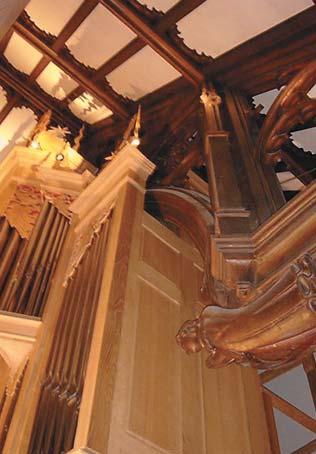
Finally, I would say that this organ exceeds the simple assembly of elements. These materials, Fruits of the Earth extracted from Darkness and brought to Light by the work of Man, serve only as a vehicle for the Spirit of Music. Music ignores the temporal, linguistic and mental boundaries and draws individuals towards the total Communion. As is the case with all genuine works of art, this organ will remain a source of renowned benevolence reaching the Hearts of Man.
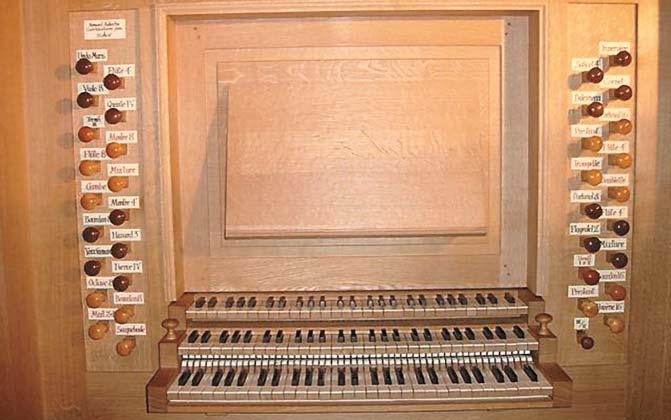
I POSITIF
Portunal8’
Bourdon8’
Montre4’
Flûte à cheminée4’
Nazard3’
Flageolet2’
Tierce1 3/5’
MixtureIII
Voix humaine8’
III RECIT 2 sections
Flûte traversière8’
Flûte4’
Quinte1 1/3’
CornetIII
En boîte
Viole8’
Unda maris8’ TC
Dulcimeau8’
Salicet4’
II GREAT Portunal16’
Montre8’
Gambe8’
Flûte à cheminée8’
Prestant4’
Flûte4’
Doublette2’
MixtureIV
Trompette8’
PEDALE
Bourdon16’
Octave8’
Bourdon8’
Prestant4’
Mixture2’+ III
Buzène16’
Sacqueboute8’
St
2007
3 manuals & Pedal 33 stops with a unique double département Récit
Grapes are blended to produce the Grand cru.
Materials and Spirit are also blended in the age-old way to produce the Grand Orgue for the discerning palate.

Organs of world-wide distinction handcrafted without compromise by Bernard Aubertin
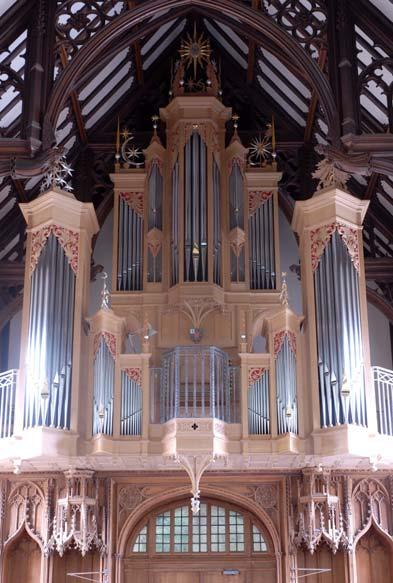
Chevalier, Legion d’Honneur & Maître d’Art
Manufacture d’orgues Aubertin
L’Ancien Prieuré
F -39700 (Jura)
COURTEFONTAINE
France
Tel + 33 3 84 81 32 66
Fax + 33 3 84 71 19 42
orgues.aubertin@wanadoo.fr
Recent times have seen a number of changes to the structure of the music department at Rochester Cathedral. For the first time, three choral scholars make up a key part of the back row and sing alongside lay clerks carefully ‘hand-picked’ for each service by the Director of Music, Scott Farrell, and his able assistant Dan Soper, making their selections from a pool of experienced singers.
Scott took over the helm in August 2008 from Roger Sayer, who stepped into the role of Cathedral Organist, and Dan has continued to direct the Cathedral Girls’ Choir. For good measure we have also received a new Canon Precentor, seen our first female organ scholar, appointed a Director of the newly-formed Cathedral Voluntary Choir and launched an exciting Chorister Outreach Project. Through
the project, our Choral Animateur, Suzzie Vango, has already inspired hundreds of children from 12 local primary schools to find their voices and join us singing in the cathedral.
Fortunately, whilst all of this has been going on, one establishment we have all come to depend upon has remained unchanged. Just a stone’s throw from the cathedral stands ‘The Cooper’s Arms’, the cathedral ‘pub’ for as long as anyone can remember. Traditionally a cooper made, amongst other things, casks and barrels. ‘The Cooper’s Arms’ in Rochester is renowned for keeping and serving the very best of traditional ales, notably those brewed at the Nelson Brewery situated at nearby Chatham Dockyard. We are also offered the best Sunday Lunch in Rochester!

After each choral service, the lay clerks and choral scholars are called, by
Scott and Dan, to a meeting at ‘The Coopers’ to discuss what went well and agree any learning points. After a couple of pints, few of us have much recollection of the Service, but always agree that it must have gone well. ‘The Cooper’s Arms’ is one of many traditional public houses taking its name from trades and professions. Pub signs were introduced mainly because those frequenting such establishments were unable to read, but Scott and Dan are happy to confirm that our cathedral musicians can read perfectly well, most of the time!
Whilst change is inevitable at Rochester Cathedral, we know that ‘The Coopers’ will maintain its traditions and welcome us just as it has done for numerous lay clerks and organists over the centuries. Cheers!
David SandonThere has been much written, performed and recorded about Mendelssohn’s organ works in England during 2009 in celebration of 200 years since his birth. We know of his regular visits to England and of his friendship with Thomas Attwood who was organist at St. Paul’s Cathedral and where Mendelssohn was often invited to play the organ after services. In 1842, when invited to Buckingham Palace, he played the organ for Queen Victoria and Prince Albert, performing How lovely are thy messengers from his oratorio St. Paul. So whilst a German composer, Mendelssohn’s English connections were clearly very important to the development of his organ repertoire which remains with us today. As one would expect, the focus of much of this year’s celebrations has been on the six Sonatas (op. 65) and the three Preludes and Fugues (op. 37). This is no surprise considering their quality and the fact that Mendelssohn himself rated them as good compositions. No small honour considering Mendelssohn was rather a self-critical composer revising and improving compositions various times before considering them worthy of performance or publication. But what of his other organ works?
Mendelssohn’s earliest surviving organ piece is his Präludium (1820) followed by four pieces written in 1823: Andante , Ostinato, Fantasia and the Choral mit Variationen “Wie Groß ist des Allmächt’gen Güte”. The Präludium is not a great work by any standards, but considering Mendelssohn was but eleven years old, it is not justified to criticise too heavily. Of the other works of these early years the Andante is a simple, yet beautiful little miniature with well-shaped melodic lines and a final cadence not entirely dissimilar to
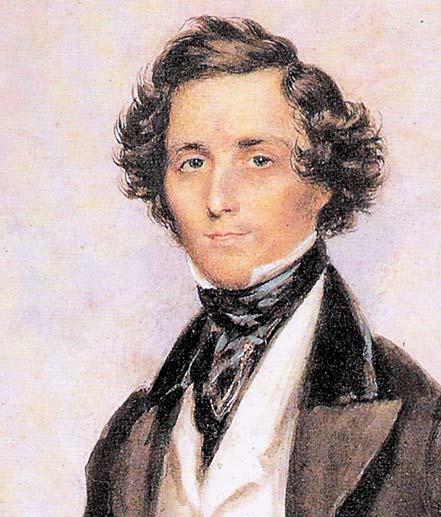
the end of the Andante tranquillo of the 3rd Sonata. Aside from serving as a quiet pre-service voluntary, it is an excellent piece for beginner organists. Of the other 1823 compositions, the Fantasia in G minor stands out. A dramatic work clearly influenced by Bach’s monumental work of the same key, it is unfortunately followed by an incomplete fugue consisting only of an exposition. The Bärenreiter edition has an editorial completion of this fugue with a rather clever augmentation of the subject in the bass towards the end, although there are also some harmonic twists more reminiscent of the second half of the 19th century.
In 1831, Mendelssohn completed the Nachspiel, which was later reworked as the Allegro maestoso e vivace of the 2nd Sonata. A jubilant work in D major (marked Organo Pleno) the Nachspiel has a triple-time opening section eliding straight into a fugue. This piece works very well for festive occasions, is no more technically demanding than the later version in the 2nd Sonata and it could be argued that the conclusion of the Nachspiel fugue is more exciting than the closing section of the fugue in the 2nd Sonata.
In 1839, Mendelssohn composed three more fugues, one of which (in a revised version) became the Fuga of the 2nd Sonata. The other two, in E and F minors, demonstrate Mendelssohn’s contrapuntal skills to great effect in rather contrasting moods. The busy E minor fugue, with a wonderfully relentless and forward-driving subject, is a good learn for those with a desire to develop their pedal skills(!), whilst the F minor fugue, with its beautifully crafted melodic lines, is sombre and reflective in character. This 5-part F minor fugue works very well on warm 8s and would
no doubt sound divine if played by an actual string quintet. 1840 saw the composition of the Choral und Variation ‘Herzlich tut mich verlangen’ and in 1841 there appeared a short reflective Präludium. The 1840 composition, reminiscent of the opening section of the 6th Sonata, was unfortunately not completed. The Präludium, with its dark, sinuous chromatic lines, serves well as pre-service repertoire and as a work for novice organists, much like the Andante of 1823.
As well as the six sonatas, Mendelssohn also wrote a number of other organ pieces in 1844-45, and this short period was his most prolific for the organ. The Trio (or Andante in F), Thema mit variationen and the Allegro in D minor (or Allegro, ChoraleandFugue) were all written between 21 and 25 July 1844 and were not included in any of the sonatas which were written in the subsequent months. The Trio works well for fluent pianist-organists who do not wish to have an overly-taxing pedal part, as the vast majority of the musical activity is in the hands. The Thema mit variationen is Mendelssohn at his best for the organ: a blend of beautifully crafted melodic lines, effortless variation technique and contrapuntal mastery. The more dramatic Mendelssohn comes to the fore with the Allegro in D minor. It is also known as the Allegro, Chorale and Fugue as these are the composite sections of this through-composed work. Like the Thema mit variationen, the Allegro demonstrates masterly contrapuntal writing but now alongside staid chorale writing. This piece works very effectively as concert repertoire with exciting pianistic passages in much of the opening section.
The Allegro in Bb (1844-45), a possible contender for inclusion in the 4th
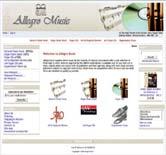


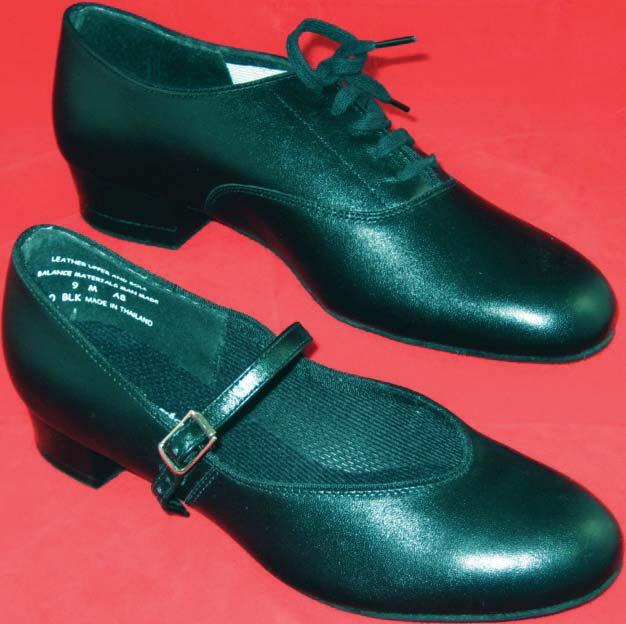




Sonata, is not as musically rewarding as other works of this era and is probably more effectively performed one-in-a-bar rather than adhering to the relatively turgid C-time signature. The Andante alla Marcia (1845) is a slightly earlier version of the Andante religioso of the 4th Sonata. It is interesting to consider Mendelssohn’s rationale in the change of Marcia to religioso with its contrast in mood from a strident march to a more reflective religioso movement as it appears in the 4th Sonata. As the sonatas’ original publishers (Coventry and Hollier) were English, this change
may well reflect Mendelssohn’s understanding of the English organist’s needs for liturgical repertoire as much as concert repertoire.
The Fugue in Bb and the Allegro moderato maestoso (both 1845) were Mendelssohn’s final works for organ not included as part of the Sonatas. The Fugue is an earlier version of the fugal section of the Allegro maestoso e vivace of the 4th Sonata (with a fugal subject which does not lie as readily under the feet!) and they both share the same exultant character and effortless contrapuntal writing. The Allegro moderato

maestoso is a simple, yet effective march and may be extended or improvised upon without too much difficulty. Mendelssohn’s organ compositions were probably the most significant for the instrument of the mid-19th century and his music has rightly remained a key part of the majority of organists’ repertoire. There are many gems beyond the six sonatas and the three Preludes and Fugues which serve liturgical, concert and didactic purposes, and they would please both performer and organist alike if they were heard more frequently.

Many of us will have first encountered Sidney Campbell in the Royal School of Church Music’s Choir Book Number Nine, as the composer (more accurately, arranger) of Praise to God in the highest, a Russian melody in the old Oxford Book of Carols. Seldom has so much been made of so little, for the original theme is only seven bars long, repeated with another seven bars of descant by Martin Shaw; from this somewhat meagre material Campbell succeeded in fashioning a completely satisfying and effective festal anthem. His name would have been familiar to the immediate post-World War II generation of choirmasters as Sub-Warden of the RSCM, or as the author of an excellent little book on choir-training1: organists may remember that he helped to design the organs at Coventry Cathedral and St George’s Chapel, Windsor; and his recording of Britten’s Ceremony of Carols and Vaughan Williams’s Mass in G minor with the choir of Canterbury Cathedral led the field for many years.
He came close to equalling S S Wesley’s record (four cathedrals and a major parish church) in the number of important posts he held; Campbell managed three cathedrals, a royal chapel and as many as six parish churches. He could be almost as temperamental as Wesley! This can only be a brief biographical sketch, nor is it especially original. I have drawn on three excellent autobiographies, by David Gedge2, Frederic Hodgson3 and Arthur Wills4, freely and without specific reference; and there is also some material in ‘Windsor Organists’5, originally compiled in 1937 by Edmund H. Fellowes, brought up to date by an unknown author and reissued in 1974.
Sidney Scholfield Campbell was born in Leyton, East London on 7 June 1909, his middle name presumably being that of a distant relative but having no apparent connection with his parents or grandparents. His grandfather was a pianotuner, the only clue to the origin of Sidney’s musical ability; his

father is described in the 1911 census as a ‘scholar’, living in Richmond Road, Leytonstone, a street of pleasant terraced houses near the present-day A12. It is a walk of about a mile to St Margaret’s Church, a great Anglo-Catholic barn, of which Sidney became organist at the age of eighteen. Two years later he moved to the Parish Church in Chigwell, then but a small village, and two years after that to West Ham Parish Church, an ancient building in a heavily populated area of London’s East End. In that same year (1931) and apparently without any formal tuition he gained his FRCO; in 1937, his last year at West Ham, he added to it the RCO Choirmaster’s diploma.
During these years he was earning his living either as a bank clerk or by working for the local council; one malicious but unverifiable version alleges that his duties included emptying the penny-in-the-slot machines on the cubicle doors in public lavatories. Against the advice of Sir Ernest Bullock6 he now resigned his employment and moved south of the Thames to St Peter’s, Croydon, where one may guess that he was better
paid and could afford the time to study for his external Bachelor of Music degree from Durham University. By 1939 his studies were sufficiently advanced to allow him time to take an appointment as the first Music Master at the new Grammar School for boys in Buckhurst Hill, Essex; he taught here until 1942, commuting from Croydon, and the school song he composed remained in use for many years. The BMus was duly conferred in 1940; his exercise, a string quartet, was criticized by Sir Edward Bairstow7 for a certain monotony of rhythm but obviously passed muster.
In 1943 his next move took him to the industrial Midlands. The Collegiate Church of St Peter, Wolverhampton dates in part from 1200, though it was extensively re-modelled in 1860; the famous Arthur Henry Mann8 had briefly been organist in the early 1870s. Sidney Campbell’s immediate predecessor was well regarded but had been in post since before the Great War, so things had become a little old-fashioned; Sidney burnt most of the music library and re-fashioned the repertoire on the simpler and more up-to-date principles favoured by the SECM9. As his successor some forty years later, the writer remembers conducting from copies marked with the initials SSC; among the basses was a splendid old gentleman who had been in the choir since the 1930s, but sadly all he remembered of SSC was that they ‘called him Steam Ship and taught him all he knew.’

In 1945 he became ‘Dr’ Campbell, the Wolverhampton post having afforded sufficient leisure for him to complete his Durham doctorate with the help of a correspondence course10, the usual method of studying for external degrees in those days. His exercise was certified as original by the Rector of Wolverhampton (a fearsome man!) and by the Reverend Frank Rust, music master at the town’s Grammar School and honorary curate of St Peter’s, who thirty years later would recall playing piano duets with SSC; it has the melancholy distinction of being the last to be marked by Sir Edward Bairstow, who gave his wholehearted approval to Campbell’s setting of Pange lingua for soloists, double chorus and full orchestra and his Concert Overture in D. There was now time for Wolverhampton’s Doctor of Music to involve himself in directing RSCM choir festivals, not only locally but also in such places as Liverpool and Wigan. He was appointed a Special Commissioner and member of the RSCM Musical Advisory Board in April 1947.
The death of the RSCM’s founder, Sir Sydney Nicholson, only a month later11 caused a major crisis in the School’s affairs, for not only was Nicholson its founder, director and prime mover, but he had also subsidised its running costs. Its headquarters, including the residential College of St Nicholas, were by now at Canterbury, so the Cathedral Organist Gerald Knight was appointed part-time Warden and the Directorship was divided between the organists of St Paul’s Cathedral and Westminster Abbey12. At Nicholson’s funeral Knight asked Sidney to move to Canterbury as full-time Sub-Warden of the College of St Nicholas, a move that would lead to his first appointment as a cathedral organist.
We seem to have spent a long time on his early career, but no apology is made for that. There was then a flourishing ‘second division’ of parish church appointments attracting good musicians and paying them a salary sufficient to be the nucleus of a reasonable living. The College of St Nicholas had been established in 1929 by Nicholson in a large mansion at Chislehurst, Kent (complete with a small group of resident boy choristers) to provide a thorough training in all branches of
Anglican church music; it was closed at the outbreak of war, but was re-founded in 1946 in the precincts of Canterbury Cathedral, though now minus the resident choristers, a parttime choir of boys from the city being recruited instead. Students had to sing in the College choir; they were instructed in singing, choir training and the liturgy and could try out their playing and conducting skills in the College’s daily services. Michael Fleming13 and Arthur Wills are perhaps the best known of Sidney’s students, Wills having been given the Society of the Faith Scholarship for 1948-9 on his recommendation.
Sidney’s unusually varied experience of parish music made him ideally suited to the demands of his new post, and in fact he also undertook yet another parish appointment, at Sandwich; for good measure, he was licensed as a Lay Reader. However, though the College was most emphatically not primarily concerned with cathedral music there were annual cathedral courses to be conducted, and Sidney’s direction of one of these so impressed the Dean and Chapter of Ely that they appointed him the cathedral’s Organist and Master of the Choristers on Marmaduke Conway’s retirement in 1949. He took Arthur Wills14 with him as Assistant Organist and Tenor Lay Clerk; he also undertook the duties of Music Master at the King’s School, where the choristers would in future be
boarders, the previous small choir school of day boys having just been closed. This choir developed well, even if the vocal ability of the lay clerks was somewhat varied; Sidney’s answer to this problem was to place the best voices on the same side of the choir and try to ensure that the other side never had any verses or solos. He revelled in the cathedral’s vintage Harrison organ.
In 1953, and all too soon, he was on the move once more, much to his choristers’ regret and perhaps his own, for there is some evidence that he was reluctant to leave Ely15. London’s Southwark Cathedral hardly seemed a step up from Ely Cathedral, and just as odd is the statement that he wished to undertake private study in London because he ‘had become disturbed by the then-current suggestions that English organists played the works of J. S. Bach and other composers in the wrong way upon the wrong kind of instruments.’ 16 After its recent and unfortunate rebuild by Willis, Southwark’s Lewis organ was no more suitable for Bach than Ely’s Harrison! Almost certainly the real reason is that the RSCM, with its residential college, was leaving Canterbury for much larger premises at Addington Palace near Croydon, easily accessible from Southwark by car or train; Gerald Knight was now to be its full-time Director and had invited Sidney to be its Director of Studies at the College of St Nicholas.
Southwark was not a success. His late and greatly revered predecessor, Dr Edgar Tom Cook, had developed a somewhat old-fashioned but highly successful system of teaching his choristers to read music with great efficiency and to sing with a head-voice production which enabled them to continue as trebles well into their late teens. The story of a nineteen-year-old head chorister asking for time off because he was getting married may or may not be apocryphal, but it makes the point. Sidney had a great time with this choir at first, but perhaps the extent of his commitments at Addington led him to neglect the basic training of the next generation of choristers, so that as Dr Cook’s choristers retired the trebles’ efficiency gradually declined. By 1956 ‘musical performances were either brilliant or awful. We in the choir fully expected him to be dismissed, so it is easy to imagine our amazement and pleasure for him when we heard that he had been appointed Organist and Master of the Choristers at Canterbury Cathedral.’17
Fortunately, Canterbury was to be the high point of his career. It had at that time a school solely for the choristers, sixty in all, who sang in rotation to provide choral services for all but five days of the year. One of the Residentiary Canons was an old friend from his time at Ely. There were special events such as the 1958 Lambeth Conference and finally

Archbishop Michael Ramsey’s Enthronement, for which he composed Responses, Fanfares and a Te Deum. As mentioned above, the choir was good enough to record for the prestigious Argo label. Though the Canterbury organ was not an especially distinguished Father Willis he enjoyed ‘playing to the building’ and was notable for his pioneering advocacy of Messiaen’s organ works. The call to St George’s Chapel Windsor in 1961 to succeed Sir William Harris18 was not especially welcome; it was ‘perhaps unexpected but nevertheless warmly received, although with regrets for Canterbury at losing someone who has raised the music there to a very high peak.’19
‘Dr Campbell faced his work at Windsor with some trepidation.’20 Well he might! The organ had been subjected to an eccentric rebuild in the 1930s to the design of Sir Henry Walford Davies21 and was now in a bad state; the choir had not enjoyed a good reputation in recent years and still suffered from the presence of a number of elderly lay clerks who retained their freehold, could not be compelled to retire, and exhibited a brand of cantankerousness which sadly was typical of Windsor in those days. Mattins was still sung on several weekdays, with a resulting pressure on rehearsal time. While Sidney ‘worked wonders with the choirboys there was little he could do with the choirmen,’22 though once again he reformed the repertoire by burning a sizeable proportion of the music library. He came to detest the place so much that before the start of term he would take refuge with his old friend and pupil Arthur Wills at Ely to build up enough courage to return to Windsor. He was dreading his imminent retirement, but was found dead in bed on 4 June 1974, just before his sixty-fifth birthday.
How should one sum him up? He was certainly conscious of having risen to the top of his profession by his own talents and a great deal of hard work, and this fed a somewhat intolerant streak in his nature; he did not suffer fools gladly, and there are numerous well-attested incidents of hymn-books being hurled from the organ loft at any unfortunate cleric or verger who annoyed him. He was something of a showman in his playing and conducting, making his pleasure in a good performance obvious; but on more than one occasion when an unaccompanied anthem had come to grief he very obviously tore up his copy and stormed off. He was a capable composer; I was glad to add Sing we merrily and Fanfare for Michaelmas Day to the repertoire of his old church in Wolverhampton, following it with his earliest (and possibly best) anthem O God of truth, which had the misfortune to be published by the Year Book Press, a sort of musical Bermuda Triangle into which many a promising work disappeared without trace until good old Banks Music Publications got hold of its archive.
He was sufficiently well-regarded to have been one of the examiners for Durham doctorates in the 1950s, and he was one of the finest organists of his day. His links with the RSCM became less close as time went on, but he played the organ at some of the organisation’s great Festival Services in the Royal Albert Hall. He was a capable choir-trainer by then-current standards; his trebles were noted for the extreme, even exaggerated clarity of their enunciation (‘And-er-to the Son’ etc)23 which may have been the influence of Ely or the RSCM or both. ‘His methods of choir training were highly individual. His practices could, according to mood, range from the hilarious to the tensely edgy and uncomfortable.’24 His choristers adored him; both James Bowman and John Pryer25 described being his choristers at Ely as ‘tremendous fun’, and
Dr and Mrs Francis Jackson’s sons Edward and William ‘thought the world of him’ at Windsor.
He was unmarried, ‘something of a loner, highly strung and very nervous... He was a flamboyant character, tall and thin, with a whimsical, puckish face. The way in which he dressed gave further insight into his personality. I shall always picture him wearing a beret, bow-tie and long ‘camel’ coat.’26 He would go out of his way to help a promising student, as both Arthur Wills and David Gedge bear witness; the latter is surely right in describing him, with all his faults and eccentricities, as ‘a brilliant and lovable man’.27 His chief legacy to Windsor is the organ, rebuilt by Harrisons in 1965 to his imaginative and highly successful specification; but there is also a weekly reminder of him in the Litany of Peace at the Choral Eucharist, most beautifully sung by the Windsor choir on his hundredth birthday along with his Jubilate in B flat and Sing we merrily as a gracious and fitting tribute to one of the Chapel’s most distinguished and colourful servants.
1 Music in the Church, London, Dennis Dobson Ltd, 1951
2 A country Cathedral Organist looks back, Darlingon, Serendipity 2005
3 Choirs and Cloisters, London, Thames Publishing, 1995
4 Full with Wills, Brighton, Pen Press, 2006
5 London, SPCK
6 1890-1979; Organist of Westminster Abbey 1928-41
7 1874-1946; Organist of York Minster 1913-46 and Professor at Durham from 1929
8 1850-1929; Organist of King’s College, Cambridge 1876-1929
9 The School of English Church Music, founded by Sir Sydney Nicholson; Royal School of Church Music after 1945
10 Dr Wood of Blackpool Parish Church taught SSC
11 30 May 1947
12 Sir John Dykes Bower and Sir William McKie
13 1928-2006. Organist of All Saints, Margaret Street and St Alban’s, Holborn; sometime Warden of the RSCM
14 A fateful move for Wills who in due course became his successor-but-one as Cathedral Organist
15 Gedge op. cit. 63
16 Fellowes and others, op. cit. 107
17 Gedge op. cit. 68, 69
18 1883-1973; Organist of New College, Oxford 1919-28, Christ Church, Oxford 1928-33, St George’s, Windsor 1933-61
19 RSCM English Church Music June 1961, 51
20 Fellowes and others, op. cit. 108
21 1869-1941. Organist of the Temple Church, London 1898-1918; Professor of Music, University of Wales 1919-27; Organist of St George’s Chapel, Windsor Castle 1927-33
22 Gedge op. cit. 70
23 Information supplied by Mr Philip Moore
24 Hodgson op cit 85, 84
25 Organist of Alexandra Palace and the Birmingham Oratory
26 Hodgson op cit 85
27 Gedge op cit 70
Jubilate Deo (one by John Rutter and one by James MacMillan) to celebrate the 1100th anniversary of the founding of the Diocese of Bath & Wells, and of the choral foundation at Wells Cathedral. The festival coincided with the conference of the Cathedral Organists’ Association, which had commissioned a new Missa Brevis by composer Jonathan Dove.
New music wells also featured a composition masterclass with James MacMillan, and three concerts, including a showcase of the composition students of Wells Cathedral School, one of the four specialist music schools in England.
The following first performances were given by Wells Cathedral Choir:


• John Rutter Wells Jubilate

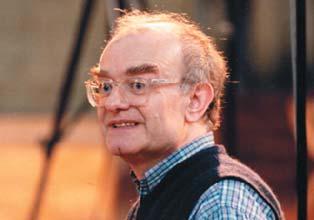
• Rupert Enticknap Te Deum & Jubilate Deo


‘The Wells Service’
• Caspar Green In manus tuas
• Jonathan Dove Missa Brevis
(commissioned by the Cathedral Organists’ Association)
• Gabriel Jackson Justorum animae
(commissioned by Cathedral Commissions)
• Iain Quinn Te lucis ante terminum
• James MacMillan Jubilate Deo (commissioned by Cathedral Commissions) and Jonathan Vaughn gave the first performance of a new work for solo organ:
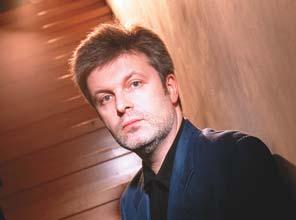
• Katie Honey Forest of the Cedars of God
they must have enchanted their village audiences, with their vivid sexual imagery and their intense feeling. ‘Love is strong as death, passion cruel as the grave. It blazes up like a blazing fire, fiercer than any flame.’ It is to an equivalent, if more inward, intensity of passion that John urges the Christians of Laodicea in the seventh of his letters to the seven churches in Asia Minor. ‘How I wish that you were either cold or hot. Since you are neither one nor the other, but just lukewarm, I will spit you out of my mouth.’
There has certainly been nothing lukewarm about the music-making in the cathedral during the past week. New music wells 69-09 has provided us with a feast of contemporary compositions. Many of them have been written in the past ten years. Seven pieces have received their first performance, including James Macmillan’s Jubilate Deo this afternoon. These eight days have given us a glimpse of the rich variety of creative talent at work today. At the services and recitals I have been able to attend, I have been struck by the commitment and energy with which the music has been sung and played. The Cathedral Commissions scheme is to be congratulated for its adventurous spirit, the composers for responding with such imaginative generosity, and the organists and choir for their hard work in learning so much new repertoire, and for making music of such quality, vitality and depth.
New music matters to the life of the church, as it does to
cultural life in general. Yes, we love the old and familiar, the melodies and harmonies that echo in the memory and reawaken feelings and experiences of the past. It is important to cherish the long tradition of church music, from plainsong to Byrd and Victoria, from Bach and Handel to Haydn and Mozart and on to the classics of the nineteenth and early twentieth centuries. But of course they were once new music, sometimes no less challenging to their contemporaries than modern compositions are to us. Still today a performance of a familiar work from the past can startle us into hearing it as if for the first time, as happened to me a couple of weeks ago with Bach’s Magnificat. But alongside this re-freshment of the old we also need the surprise, the challenge, even the shock of the new to awaken us to different ways of listening, fresh sound worlds, melodies and harmonies that resonate in new ways with our inner lives.
There is, I think, something of vital significance in the act of listening to new music, as I expect there is in its composition and performance. We are forced to attend to what is happening here and now; these new sounds, this unfolding line, this sudden loudness, this silence. And it is precisely in this attention to the present moment that we are drawn into The Presence, into the song and the silence of that mystery we call God. On Monday evening we listened to Arvo Pärt’s Sarah was ninety years old, –minimalistic music at its most minimal: four minutes of pianissimo drum beats in groups of four, four minutes of two interweaving tenor voices echoing from the Lady Chapel, four minutes of more piano drum beats, four minutes of slightly louder tenor voices, another passage of drum beats growing ever louder, quiet organ chords, a solo soprano voice reaching a piercing, symbolically climactic top C. But we listened, and listened, and listened, holding onto patterns, hearing new timbres, catching the echoes, physical, emotional, historical, spiritual. And by the end we knew that we had been on the most tremendous journey into God.
And into the glimpsed reality of God in today’s world. Because new music is contemporary it sings out of the world as it is for us now, with its complexities, its wonders and its terrors. The composer, the musicians and we, the listeners, all belong to the same universe. So the music can express, however fleetingly, the ways we meet God at the beginning of the twentyfirst century. What I sense has been happening all this week has been a series of momentary incarnations of the singing word of God as it echoes through the pain and joy of living today. Pain and joy; those are certainly two of the emotions that I have heard again and again. This new music is, in the most theological sense, passionate, cross and resurrection music. By setting the traditional texts of the church, the music we have heard during these eight days could hardly fail to resonate with the darkness and the light of the story of Christ’s birth and life,
dying and rising. But because it is today’s music it sings with agony at the global traumas we are part of and with our ecstasy at the wonders of this most amazing universe.
As it spans the pain and joy of God with us, new music draws on a wide range of voices. There has been an extraordinary variety of composition on display this week. It is not all the same. Though its sonorities are modern, it draws on the riches of the past, whether medieval plainsong or baroque counterpoint or full-blown romanticism. There are echoes of jazz, of folk music, of rock. Some contemporary composers draw inspiration from the musical traditions of the Middle East, India, Japan. Messiaen famously drew inspiration from birdsong, and other composers have followed in his footsteps in weaving the sounds of the natural world into their music. It is as if, in the global village we all inhabit today, we are learning to really listen to one another and to share each other’s treasures. There is here, I believe, a glimpse of the way the Spirit of God is seeking to draw and lure the human family together, to overcome divisive boundaries, to challenge the conviction that ours is the only true or right way of doing things. That lure of the Spirit is something the church, as much as any institution, needs to respond to. The eclectic imagination of new music invites us to respond, to sing and dance to all the variety of rhythms, melodies and harmonies of God’s world.
As we do so we discover that our earthly music-making is part of something vaster that we had ever imagined. It is part of the music-making of all creation, in time and in eternity. In the words of a prayer for those who, whether as composers or performers, make music in churches and cathedrals:
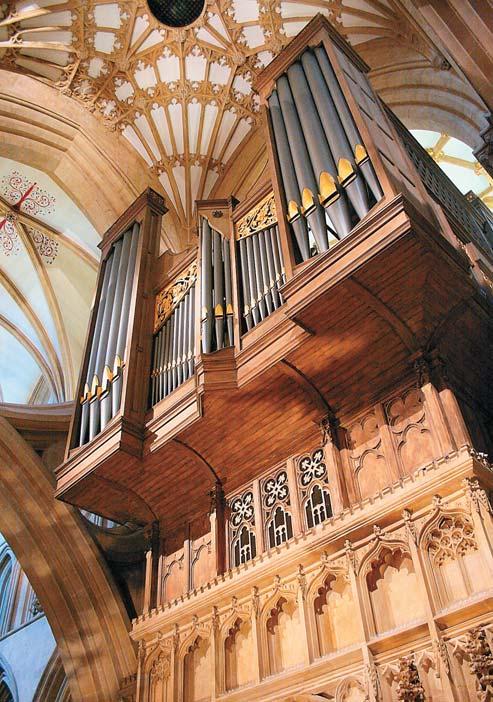
O God, the hosts of angels ceaselessly worship you in heaven. Yet you condescend to hear our songs on earth. Help us so to perfect our praises, that we may catch some glimpse of the beauty of heaven, and become like him whom we adore, even Jesus Christ our Lord. Amen.”
David Wilcox, Priest Vicar, Wells CathedralNew music wells 70-10 will take place in Wells Cathedral from Monday 7 – Sunday 13 June, 2010 and will feature new works by Judith Bingham, Timothy Noon and Gary Davison.
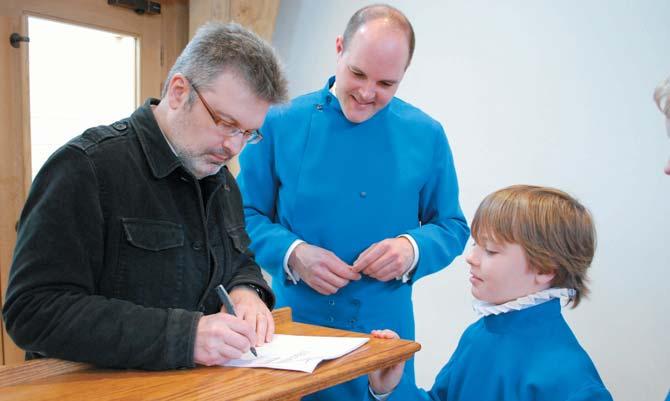
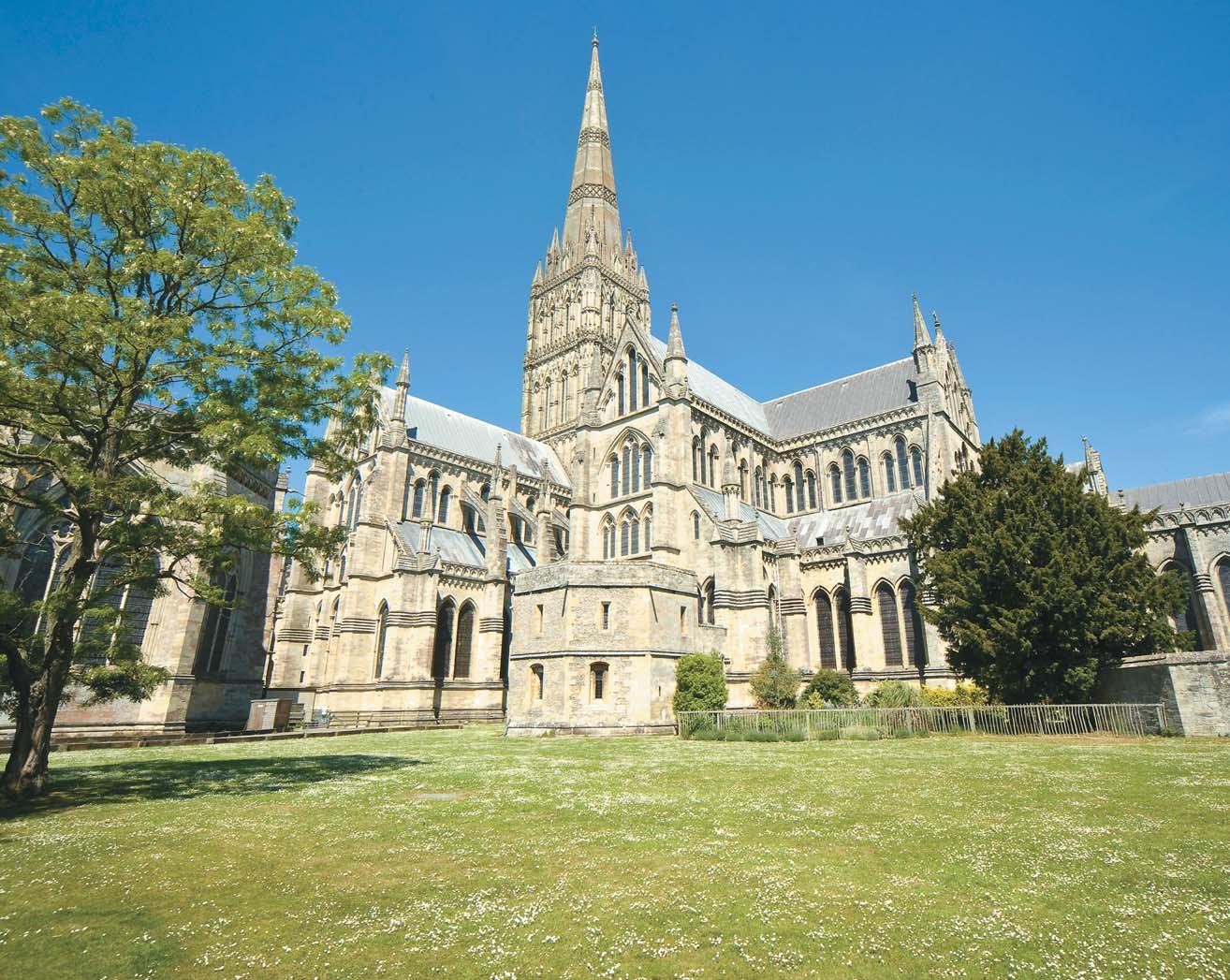
The Organ Scholarship here in Salisbury offers a unique opportunity for someone looking to fill a gap or postgraduate year following university to gain experience in the field of church music. It is by no means a ‘page-turning, coffee making’ scholarship and provides Stephen Moore plenty of chances to play the organ and direct both the boys and girls of the cathedral choir.
Prior to coming to Salisbury I attended Trinity College of Music in Greenwich, graduating in 2008 with First Class Honours and winning prizes for Keyboard music and conducting. There I was fortunate to work in the inspiring surroundings of the Old Royal Naval College, where I was also organ scholar for two years. During my final two years at Trinity, I was organ scholar at The Royal Hospital, Chelsea, another Wren building. However, I feel neither of these places can compare to Salisbury Cathedral, which is one of the most iconic buildings in the country. It is famous for so many things: the tallest spire and largest Close in the country; the first British cathedral to establish a girls’ choir in 1991. The renowned ‘Father’ Willis organ of 1876 is a pleasure to play and offers unlimited scope for accompaniment of the cathedral choirs. There is an important place for the organ scholar in the
music department. You will find yourself playing the organ for at least three services most weeks as well as playing voluntaries before and after services. There is a lot of repertoire to get through, including psalms for the day. I have been lucky to play some of my favourite works such as the Walton Chichester Service as well as hear many others; Howells’s Gloucester Service at Christmas Day Evensong being a particular memory. There is also a multitude of extra services such as weddings and funerals for which the scholar is invited to play, and of course, there is a very busy period leading up to Christmas. Unlike many other scholarships, there is the chance to conduct on a regular basis and the organ scholar is seen in front of the choir at two of the most high profile events of the year, the famous ‘Darkness to Light’ Advent carol services and the Christmas carol services. I personally have enjoyed the chance to work with such inspiring groups of children whom you quite regularly forget are all under the age of 13! Other highlights of the year include the Jenkinson Organ Recital – given by the scholar – which makes up part of the Cathedral’s prestigious organ recital series, concerts in the diocese and abroad as well as the chance to be involved in CD recordings and broadcasts.
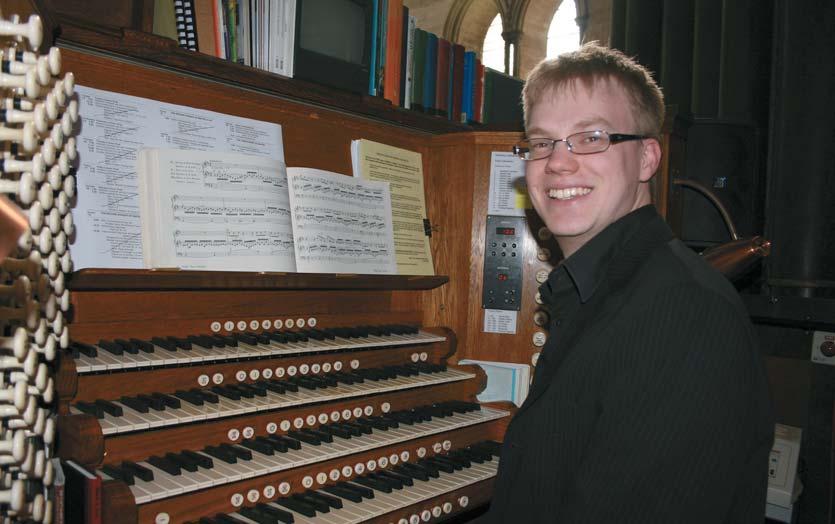
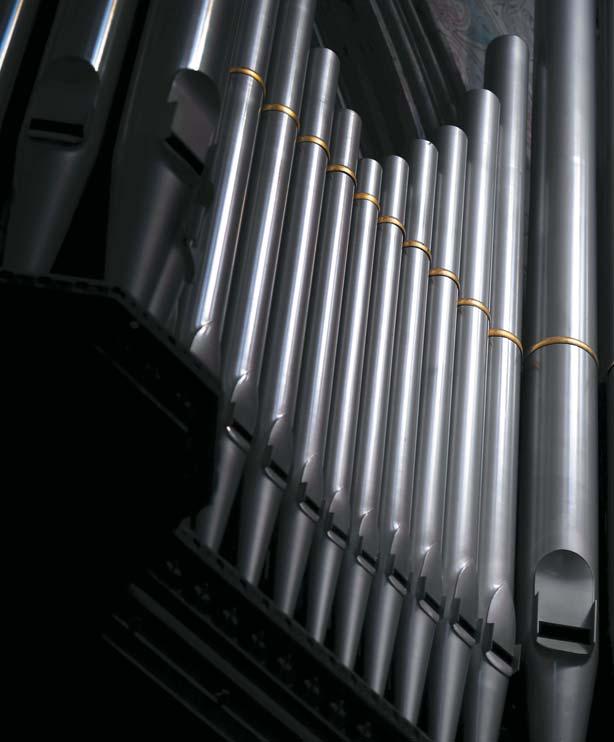
I was lucky enough to be here when the Southern Cathedrals Festival (SCF) came to Salisbury, as it does every three years. I was heavily involved in the planning and performance of much of the music for this and took part in many of the events – not to mention the rigorous rehearsal schedule leading up to the Festival. The choristers rehearsed for six hours for each of the two days leading up to the beginning of the SCF and this involved copious amounts of notes to get through, as well as strains placed on the Cathedral School who had to occupy them during the times when they weren’t singing! The school also played host to the choristers from the other two cathedrals and provided meals for the combined choirs and their supporters – a busy time indeed. I was lucky enough to perform in the Festival playing in three of the concerts and being present for everything else that happened.
Salisbury Cathedral has a boys’ and a girls’ choir, both singing the same amount of services and concerts throughout the year. The choirs, along with the six Lay Vicars, sing nine
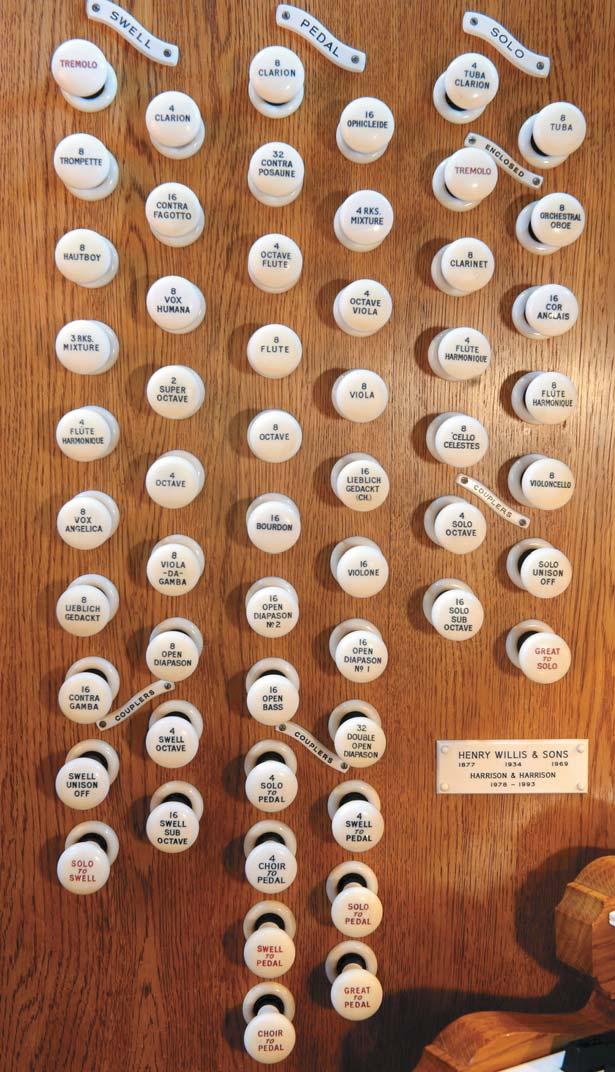
services a week and the workload of music is considerable. The organ scholar takes at least one morning rehearsal a week and benefits from the experience of working with children in this pressured atmosphere. The scholar also takes the probationer choristers on two mornings a week, helping to train them to become fully-fledged choristers over the course of the year.

The organ scholar’s duties are not exclusive to the Cathedral and extend to the busy life within the Cathedral School. Here the scholar supervises instrumental practice three times a day, takes chorister theory sessions and participates in various other areas of music-making in the school. There are opportunities to accompany children in concert performances as well assisting with Associated Board exams. The work in the school provides a great environment for gaining more experience in working with children in a different atmosphere to the Cathedral, which is an integral part of any church musician’s career. There is a lot of fun to be had at the Cathedral School and the scholar is encouraged to take part in as many things as possible. I found myself in concert with various ensembles over the year as well as conducting one or two. I also played for a ‘Come and Sing’ performance of Oliver! where the Precentor made a memorable Fagin!
The organ scholar has the chance to work as part of a great team. Each department, be it music, education or the highly dedicated verger team, has its part to play in the public face of the Cathedral. In the music department itself the scholar is a highly valued member of the team. His/her ability is tested to the fullest extent in a variety of tasks, musical and nonmusical. However, this is through shared responsibility and


encouragement. The chance to work in close proximity with David Halls, Director of Music, and Daniel Cook, Assistant Director of Music, is something which should be valued to the maximum. Organ scholars are encouraged from day one to push themselves in pursuit of the highest levels of performance and this is hugely rewarding. There is a lot of fun to be had in working at the Cathedral and I have enjoyed my year here immensely. I have had a lot of fun and made some wonderful friends, but most importantly, I have spent a year working and making music in one of the most famous cathedrals in Britain.
Scholar at Stephen MooreOrgan
Salisbury Cathedral 2008-2009
I personally have enjoyed the chance to work with such inspiring groups of children whom you quite regularly forget are all under the age of 13!
Sir: I was sorry to read of the death of Harrison Oxley. We were contemporaries in a few ways, both born in 1933 and both serving our National Service at Catterick Garrison in 1956-57 as bandsmen and organists. I was in the Royal Tank Regiment and after the six weeks’ basic training found myself in the Cambrai Staff Band as their pianist and also occasional organist at the northern Garrison Church. However, I also played the viola and this led me into contact with the Royal Corps of Signals Band under the command of Major Judd. He was an excellent musician, determined to recruit all the best people to his band. Many graduates from the London Schools of Music served their time there, including Fred (as we called him even in those days) Oxley. His abilities were soon recognised and he became the organist at the southern Garrison Church. The Signals Band also had an excellent light orchestra. Fred and an ex-Cambridge Choral Scholar managed to recruit a good choir from amongst the local people to produce a performance of Messiah with Fred doing the organ continuo part. To play in that performance was one of the memorable points of my National Service and I still have an old vinyl record of it. To maintain my own organ practice, I managed to come to an arrangement with Richmond Parish Church in North Yorkshire to play for their Sunday School in return for an hour’s practice on their Harrison & Harrison organ. Although I am a United Reformed Church organist I still play occasionally in the Anglican Church. I was persuaded by a member of FCM to join them by a friend I met on a Philip Carter organ tour to Italy. I find CATHEDRAL MUSIC a very readable magazine and read it from cover to cover.
All general points and comments welcomed. Please send letters by 5 February 2010 to: The Editor, 21 Belle Vue Terrace, RIPON, North Yorkshire HG4 2QS ajpalmer@lineone.net Letters may be shortened for publication.
14 days which includes most of Holy Week, they have played four choral works by John Rutter; nothing by Byrd, Tallis or Gibbons; nothing by Herbert Howells; and nothing by contemporary Cathedral Composers Philip Moore or Philip Stopford. It is possible to feed back views from ‘consumers’ and perhaps those of us who are Friends of Cathedral Music might use this opportunity. Go to classicfm.co.uk –click on ‘Music’ at the top of the homepage; go to – ‘About us’ at the bottom of the Music page; click on ‘Consumer Panel’ in the tiny writing and send in your views.
Festival Organist since 2007, takes over next year. Book your accommodation now. The Edington Festival really is a glimpse of heaven.
David Martin, York
It is disappointing that Classic FM plays so little of our rich heritage of English cathedral music. According to the playlist on the Classic FM website, during the last
Sir: May I take the opportunity, via these columns, of describing the glories of the recent Edington Festival so that readers can put next year’s dates in their diaries (Sun. 22nd to Sun. 29th August 2010). This year’s theme was Te Deum laudamus, allowing exploration, in music, readings and preaching, of daily themes ranging from Sin and Judgement to Angels, Redemption and Majesty. Old favourites such as Palestrina Missa ‘Aeterna Christi munera’ and S S Wesley’s Wash me throughly to rarities like the Tallis Latin Mag & Nunc and the Howells Requiem settings sung liturgically. Exquisite performances, and doubly so in context. Equally moving, but in a different way, candlelit Compline with plainsong. The main services were full, some to standing room only (the Church of England in decline?). Broadcast Choral Evensong –what a pity that a Prom prevented its Sunday repeat –introduced this year’s Festival commission, Most glorious Lord of Lyfe, by the evergreen Francis Jackson; some gritty harmony, but a serene ending to Spencer’s final line ‘Love is the lesson which the Lord has taught’. Perhaps some enterprising cathedral can rush out a recording before Christmas. Everything seemed to run perfectly, which is a tribute to meticulous planning and work by a large team of experts and helpers. Masterminding this year’s Festival was its Director Julian Thomas. This was his sixth and last: congratulations and thanks to him for his inspiration. Ashley Grote,
I have been set thinking by the excellent article, Clergy, organists and other disharmonies in the spring, 1988 issue of CATHEDRAL MUSIC. Although the article only deals with clergy and organists in cathedrals, the same problematical relationships are found in parish churches throughout the world. I have seen at close hand three break-ups between clergy and organists, as well as reading of others in this country and abroad. Such break-ups are traumatic for all concerned. As a church organist myself, I have thought about what it takes to avoid such break-ups. In the break-ups I observed, neither organist nor vicar were interested in each other but went their own separate ways. Neither tried to maintain lines of communication with the other. The result was that when they fell out, neither was able to communicate with the other. Compromise was impossible, and the disagreements escalated out of control. Now, I am not saying that clergy and organists ought to be friends. But it is in their mutual interest to build and maintain a bridge between each other.
The organists I observed also failed to keep in touch with the parish and parishioners they served. They appeared to see their parish church councils as nothing more than necessary sources of funds for the church’s music. So when organist and vicar fell out, the vicar persuaded his PCC to agree with his sacking of the organist; and because the organist had no friends or voice on the PCC, he had no come back.
In a sense, organists need to be slightly paranoid. They need to remember that PCCs and Chapters have more power than they do. They need to remember that they are there to serve congregations, as well as the higher cause of church music. They need to build bridges, and keep them good and strong.
It is pleasing to report an increase in attendance at cathedral festivals, despite the continuing rise in ticket prices. Performance standards are higher than ever and this is probably the key factor that guarantees demand for seats.
St Albans International Organ Festival July 9-18, which falls on the odd-numbered years, was founded in 1963 by the Cathedral’s then Master of the Music, Peter Hurford.
The first three festivals were annual so that this year it reached its 25th, the first for its new Artistic Director, David Titterington, who is Head of Organ at the RAM. Unlike the Three Choirs and Southern Cathedrals festivals, there isn’t an automatic linkage between the directorship of the IOF and that of the music at the Cathedral, although from 1999 - 2007 Andrew Lucas, the current Master of the Music, also directed the IOF.
Because of the clash with the Southern Cathedrals Festival later in the week, I was only able to attend two concerts. The Opening Concert by the St Albans Bach Choir on the Saturday was a very meaty programme: Poulenc’s vigorous Gloria, then his riveting Organ Concerto, with John Scott dazzling us with the solo part: dramatic and reflective by turns. The fiery reeds of the rebuilt Harrison organ contrasted with the now more audibly delicate upperwork of the Choir division. It all sounded very French, as it should and provided a nice foil for Brahms’s Ein Deutsches Requiem, with its heavy Teutonic idiom. Julie Kennard gave a radiantly powerful, securely pitched performance, ably matched by Michael George and the Choir, whose clear diction was a testament to the care of their director, Andrew Lucas, who also drew superb playing from the Sinfonia Verdi.
I also attended the Three Choirs Concert on Monday given by King’s College, Cambridge, Westminster Abbey and St Albans choirs. This most popular of IOF events has changed over the years. I used to enjoy the peripatetic performances, with three different stages which meant that most seats were near to a choir. This overcame the problem of the long narrow nave where only the front rows have a good ear and eye view. But the mid-point stage and the west end one were always wrong for the organ and instrumentalists, they were also costly to erect and cut the total seating. End of story! This year’s magnificent opener, Strauss’s unfamiliar Feierliches Einzug, used all three choirs plus the RAM’s excellent Brass Ensemble. Stephen Cleobury evoked the sense of unfolding mystery within the work and drew great gravitas from the brass, followed by Walton’s very festive Jubilate in B flat. Distinctive music at the start, thereafter sequences from each choir of works by Purcell and Mendelssohn, who also each provided an organ interlude, nicely played by Tom Winpenny. All forces combined for Walton’s stirring Coronation Te Deum, directed with great élan by
James O’Donnell. The final sequence was of works by Vaughan Williams; the first, was the Te Deum in G, then the rarely heard A Vision of Aeroplanes, a powerful choral piece with a virtuoso organ part, followed by Silence and Music, both directed by Stephen Cleobury. The Old Hundredth, directed by James O’Donnell, provided a stirring and fitting finale to a wonderful concert. David Titterington’s first festival programme was strong and full of delights, it also achieved high ticket sales, and the competitions high standards. The Russian Konstantin Volostnov won the Interpretation Prize (£6000) and a Frenchman, Jean-Baptiste Dupont, the Improvisation Prize (£6000). Sadly I missed all the excitement of the Finals, because I had to drive to Salisbury for the start of the SCF.
Southern Cathedrals Festival at Salisbury July 15th-19th Salisbury is a wonderful setting for this festival, with both the largest close and the tallest spire in Britain. It provides wonderful space for the performances.
An innovation this year was Candlelit Bach at 9.15pm on three evenings, not always in the same spot but with the rest of the cathedral in darkness, hugely atmospheric: 30 mins of preludes and fugues from the ‘48’ played on the piano by five of the Cathedrals’ musicians, with the audience gathered round; for me an uplifting experience. David Halls repeated his 2006 innovation of Youth in Music on three days: a piano recital by former Bishop’s Chorister Joseph Wicks; a violin recital by former Precentor’s chorister, Pippa Goodall; and an oboe recital by Charlotte Ashley, in the latter two, John Reid was the brilliant accompanist. It was well worth the dash over to the Cathedral School after Evensong to hear such delightful playing. Earlier there was an inspiring concert by the combined boy choristers and lay clerks of music by Mendelssohn, Purcell and Howells. Later the big spot for the famous Willis organ was in the hands of James Lancelot from Durham Cathedral: a substantial choice of Bach, Haydn, Mendelssohn, Whitlock, Parry, Dubois, Langlais and Vierne, with James’s impeccable playing there for all to see on the giant screen. In the next morning’s Festival Eucharist French music was again to the fore: the main setting was Poulenc’s Mass in G with two anthems by Duruflé and there had been French organ music beforehand. That evening there was Praise the Lord a celebration of the Psalms in words and music, compiled by the Precentor, Jeremy Davies and sung by the combined girl choristers and lay vicars.
I always look forward to this presentation, which began with Allegri’s Miserere, followed by Monteverdi’s Beatus Vir, then settings by Francis Jackson and Will Todd (the SCF commission), ending with Gabriele’s setting of the Jubilate. On
Saturday there was an Outreach concert by the mixed Salisbury Cathedral Junior Choir, now 75-strong.
The final concert was given by the combined boy choristers and lay vicars of the three cathedrals singing settings by Handel and Purcell, then Mozart’s Mass in C minor, which had the finest rendering I have heard for many years, with Olivia Robinson’s sublime Et incarnatus est reminding me of the great Erna Berger. This last work set the seal on an outstanding and uplifting festival.
Three Choirs Festival at Hereford August 8th-15th



It is impossible to do justice to 51 events in eight days, I can only pick highlights.
Day 1 –Opening Service: settings by Francis Jackson, Mendelssohn, Stanford and Vaughan Williams (Festival Chorus, Cathedral Choir, Philharmonia Brass, dir. Geraint Bowen) Evening: Elgar’s The Dream of Gerontius A strirring rendering, full of torment, given by the Festival Chorus and the Philharmonia Orchestra under Geraint Bowen, with Catherine Wyn-Rogers, Neal Davies and Adrian Thompson as Gerontius.
Day 2 –Festival Eucharist: setting Haydn Heiligmesse (Cathedral Choir, Philharmonia with soloists Lucy Bowen, Jeanette Ager, Stephen Challenger, Jeremy Crowhurst, Duncan Wilkins, dir. Geraint Bowen. This was bright and inspiring. In the evening: Mendelssohn Violin Concerto (Jennifer Pike) and Stravinsky The Rite of Spring (Philharmonia dir. Sokhiev).
Day 3 –Evening: Haydn Te Deum in C, Finzi Clarinet Concerto (Emma Johnson – superb, Philharmoniadir. Adrian Lucas.)
Late night: PhilharmoniaBrass play Gabrieli, Rautavaara, Tim Jackson and Michael Praetorius – great gravitas and sonority!
Day 4 –Morning: National Youth Orch of Wales dir. Owain Arwel Hughes play Mahler Symphony No 1 in D –played better in 2006. Evening: Haydn The Seasons (Festival Chorus, Philharmoniadir. Bowen) A very fine, spacious reading.
Day 5 –Evening: Handel Israel in Egypt (Three Cathedral Choirs, Music for Awhile Orch. and six soloists dir.Layton) The choirs carry the bulk of the work and the boy trebles really shone out brilliantly. In the late night concert at All Saints’ Hereford Cathedral School Chamber Choir had a top line of female voices in a very enjoyable programme, sung in Latin, English and French.
Day 6 –Main concert: Poulenc, McCabe (Festival Commission) and Richard Strauss. (Chorus, Philharmonia and five soloists dir. Adrian Partington. – another outstanding event).
Late night, Bach works for solo violin played by Rachel Podger, standing magnificently alone on the large west end stage. Memorably full tone.
Day 7 –Final concert: Mendelssohn’s Elijah with soloists Catherine Wyn-Rogers, Nicholas Mulroy, Mathew Brook, Festival Chorus, Philharmoniadir. Bowen. A glowing reading, shaped with such care, doing full justice to the richly melodic fabric of the composer’s final major, possibly greatest work. A fitting finale to the rich mix offered by Hereford 2009.
Liturgically speaking, the highlights for many were the five Choral Evensongs, one broadcast on BBC R3, powerfully sung by the three cathedral choirs. There was also one extra day, the Gathering Wave, the very successful Three Choirs Outreach Day, coordinated by The Music Pool, the county’s community music charity.

By
Jenny SetchellISBN 978-0-473-14286-5 £14.90
265pp Pipeline Press, 2009
Jenny Setchell is adequately qualified to write this wonderful little book which is described as a ‘unique and absorbing collection of stories’ as she is an organist and a former senior journalist with the Christchurch Press, New Zealand. I have a couple of similar books based on church life, but none detailing the trials and tribulations of organists. There’s plenty of material from organists such as Sir David Willcocks and Christopher Herrick and Setchell peeks behind the facades of some of the most famous venues and churches around the world. There’s the story told by Gillian Weir about the perils of having a camera set up at the console and the poor man who was seen removing his false teeth and placing them on the console. The antics of blowing a circuit at a Welsh cathedral during a sermon. The chapters are on Giving Concerts; In church sub-headed ‘How to survive a sermon without waking others’; Organs behaving badly. Kerry Beaumont, Organist of Coventry Cathedral, tells a tale of playing at a funeral when the piece he thought he was to play was different on the service sheet. His Mr Bean-like tale is highly amusing, showing ingenious behaviour. The book is wonderful and would make an ideal Christmas or birthday present. Before you even get into the body of the book, Gillian Weir sets the scene for what is about to follow with some wonderful anecdotes in an entertaining foreword. Jenny Setchell in the preface writes: ‘So when reading these pages, look not for the jokes, although many anecdotes will make you smile or even laugh; look, rather, through these windows of words to understand better what it costs these gifted musicians to bring the magical sounds of the organ to our lives’ Hear, hear to that wonderful sentiment! A beautifully produced book with illustration by Terence Dobson. Don’t put it off, buy it NOW!
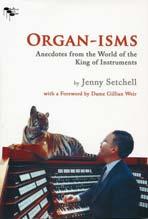 Andrew Palmer
Andrew Palmer
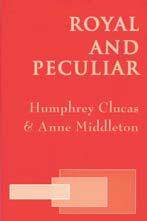
ISBN 978-0-9550470-2-2 £7.50 (inclusive of p&p) Cheques made out to ‘Humphrey Clucas’ and sent to The Lewin Press, 19 Norman Road Sutton SM1 2TB. Humphrey Clucas has written a short story based around Westminster Abbey. An interesting little tale it is too. He draws on his knowledge of being a Lay Vicar of Westminster Abbey. Clucas creates a detective in Peter Malcolm, a chaplain at the Abbey, who solves the mystery of the disappearing Purcell manuscript, a murder whilst the victim is in the Abbey listening to a recording of Verdi’s Requiem and then a camera goes missing. There is a lot of explanation about Abbey matters to educate the reader that sometimes gets in the way, but it is a delightful story and I would like Peter Malcolm, who it turns out is leaving at Easter, to turn up at another cathedral to solve other crimes. Cathedral musicians will love the description of the Lay Vicars which Clucas has so carefully created. The book also contains 11 poems written by Anne Middleton, a wife of a canon, who lived at the Abbey for seven years. The collection is titled Westminster Women. The first poem The Queen Mother’s Funeral is interspersed with sentences from the Funeral Service and Guide us O thou great redeemer cleverly written into the poem. A delightful and enjoyable book.
Andrew Palmer178 pages ISBN 978-0-9562190-1-5
Price £20 (incl p&p)
See advertisement on page 67.
There is no doubt that John Sanders was one of the most universally admired and well-loved cathedral organists of the 20th century. Alan Charters was headmaster of the King’s School Gloucester, where the choristers are educated, for some of the Sanders years and so was working alongside him in the management of the boys and able to observe his special talents for training and directing the cathedral choir at close hand. He draws a vivid portrait of the man who directed eight Three Choirs Festivals, and commissioned a revolutionary rebuild of the Gloucester organ, which required courage to see through because of opposition from organ luminaries. His design consultant, Ralph Downes, wanted to resign but John was determined to realise his dream, and persuaded him to stay with it. The result was Gloucester acquired a uniquely distinctive instrument, with thrilling tonal qualities. There is a compact appendix on it giving the new specification, followed by one listing Sanders’ 78 compositions, many of which remain unpublished. These deservedly have a whole chapter to themselves.

The third appendix covers the aims of the Sanders Society: to promote his music, support choral liturgy and to help young composers in the field. There is a section about the CTCC of which John was President for the last few years of his life, reflecting his concern about the survival of the all-male choral tradition. Yet he had been Director of Music at Cheltenham Ladies’ college, where he trained girls to sing, so was able to compare the voices of both sexes and appreciate the virtues of each. Most interesting are the many anecdotes and personal memories of Sanders at work with choral groups, choir tours to the US, a whole chapter on his three years as Organist at Chester Cathedral and chapters on his schooldays at Felsted, studies at the RCM and Cambridge and spell in the army. Written in an engaging style, the book is very well produced in a generously large print, with a small selection of photographs. The footnotes are collated into a separate appendix, which then itself provides a useful kind of synopsis.
Plainsong Rorate caeli; Votive Mass of the Blessed Virgin Mary in Advent; Victoria Descendit Angelus Domini; Byrd Ave Maria; Ecce virgo concipiet; Martin Adam lay ybounden; Malcolm Missa Ad praesepe; Monteverdi Messa a 4 da cappella; Bevan Magnificat; Wood Nunc dimittis in B flat. Organ Improvisation Marche des Rois mages. The Choir of Westminster Cathedral. Director: Martin Baker.

Organ: Matthew Martin.
HYPERION CDA677017 TT 77:55


Nearly 78 minutes of utter bliss. We should be grateful for the existence for a ‘tiresome highbrow’ a ‘feather-brained crank’. R R Terry was a musical pioneer whose work at Westminster Cathedral between 1902 and 1924 is legendary. The procession of the liturgical year is, naturally central to the worship at Westminster Cathedral. We begin with Advent Sunday and pass through Christmas to the Epiphany and Presentation. Along the way we
 Roger Tucker
Roger Tucker
have exquisite Plainsong that transports you to the heart of this Catholic institution. Matthew Martin’s Adam lay ybounden is one of the loveliest compositions to these words I have heard; the resonant basses fill the recording and the tension of the a cappella music is irresistible the full choir moments and the intensity of dynamics are beautiful and as the ending fades away the choir sings George Malcom’s simple and lovely lilting Missa Ad Praesepe. The Gloria with improvised organ strepitus is exciting as organ subsides into some fine boys’ voices followed by the superb back row. Maurice Bevan’s Magnificat with mode 8 chant and improvised organ versets should be heard more often. Martin Baker’s evocative improvisation ends one of the best CDs I have heard this year. I was immediately taken by this CD. It is a joy to listen to, full of excellent singing, superb organ playing and some of the finest repertoire around. This recording will be accompanying me in the car, on my iPod, and my CD player for a long time to come. Without hesitation recommended!
Andrew PalmerThe Lamentations of Jeremiah by Tallis, Alfonso Ferrabosco the Younger, Byrd, Parsley, & Mundy. Lay Clerks of St George’s Chapel, Windsor Castle. Director: Timothy Bryam-Wigfield.

DELPHIAN DCD34068 TT 62:02.
The 16th-century English tradition of Lamentation settings is in the first instance associated with the plight of Catholics in the political and religious upheaval of Elizabethan England, the texts’ powerful imagery and imploration for Jerusalem to ‘turn to the Lord your God’ all too specific for the changing religious landscape. Tallis and Byrd embodied the contradictions of this period – Catholics writing English church music in the service of Elizabeth, but continuing to provide Latin church music for their fellow recusant Catholics, who often were worshipping in secret. How much the other settings on this disc were part of a more musical tradition, drawing on Tallis’s and Byrd’s settings and continental models, were intended for the liturgy, or were religious statements of protest is open to conjecture. Osbert Parsley was a ‘singing man’ at Norwich Cathedral during the 1530s - 80s, during the to-and-fro of the Marian and Elizabethan settlements, and like many Englishmen would have pragmatically gone with the prevailing wind. Ferrabosco the Younger and John Mundy were both nurtured in the Elizabethan church, and it may be that their Lamentations were to show they could excel at the genres mastered by their predecessors, and these lesser-known settings do not disappoint. Much of this music was uncovered and edited in the early 20th century by Windsor Precentor Edmund Fellowes, and it is good to see this tradition continued with the Mundy (also a Windsor man), with the score used for this recording edited by alto Jeremy Filsell. The Gentlemen of St George’s Chapel provide a full-bodied tone, aided by the ample resonance of the Albert Memorial Chapel, with the lower tessitura bringing a real sense of depth and loss. It is a sensitive interpretation, with varied tempos and dynamics responding to the dramatic imagery of the text. Not to be missed!
Paul Gameson
To Morning; Song (I gaze upon you); Cecilia Virgo; Orbis patrator optime; Ave Maria; Hymn to the Trinity; Not no faceless Angel; O sacrum convivium; Lux mortuorum; Salve regina; Salve regina 2. Polyphony.
Director: Stephen Layton.
HYPERION CDA67708 TT 75:58
In his programme note to Polyphony’s latest exploration of contemporary choral music, Stephan Johnson reminds the listener that one of the ‘crucial functions of music and words when they work as one: [is to] help us find meaning in those big life events that leave our emotions stunned and our rational understanding baffled.’ Not no faceless Angel, a collection of works by Gabriel Jackson, certainly is music to contemplate life to. Although mostly settings of religious texts, Jackson coins Vaughan Williams’s selfclassification as ‘the Christian Agnostic’ when questioned about his own faith; preferring instead to talk about the transcendental feeling often evoked in quiet moments while experiencing music. And transcend it does;
life, love, loss, music even. This is achieved partly through his selective use of a combination of ancient techniques applied to his own harmonic language, and his instinctive knowledge of the sonorities created by combined voices in a large cathedral space which he attributes to his admiration of the music of Howells. The incredible sonority of Polyphony in particular allows this music to take flight. Even a critical listener cannot help but be transported past listening to the performance and on to experiencing the spirituality of the music. The ensemble is faultless. The music is allowed to speak for itself. Stephen Layton never allows any aspect of the performance to become over indulgent or obviously over emphasised. The listener gets the impression that they are listening to what is printed on the score rather than a slushy interpretation. The sensitivity with which the singers approach this music is breathtaking. Listening to this recording will definitely enhance your life. Listen to it in the car, on the train, as you go to bed; this music transcends life as we know it. The rewards are infinite.
Christopher O’Gorman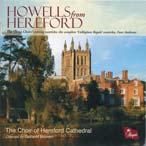
Te Deum & Jubilate (Collegium Regale) O pray for the peace of Jerusalem; Evening Services: Hereford, Gloucester, Worcester, Collegium Regale; Like as the hart; We have heard with our ears. Hereford Cathedral Choir.
Director: Geraint Bowen.
Organ: Peter Dyke.
REGENT REGCD316 TT 74:12
The title of this latest recording from Geraint Bowen’s Hereford Cathedral Choir leaves little to the imagination, but delivers much to the senses. Fans of the twentieth century’s biggest contributor to Anglican church music will likely to appreciate the three sets of evening canticles written for the cathedrals of the Three Choirs Festival, together with the complete canticles written for King’s College, Cambridge (Collegium Regale) and the set of Four Anthems which includes Howells’s popular choral work Like as the hart. In addition to the oft-present Collegium Regale Magnificat and Nunc Dimittis canticles, the lesser performed musical triptych of Hereford, Worcester and Gloucester Services make refreshing listening and illustrate the development of Howells’s style in the post-war era. They are also firm testament to his affinity with these three fine institutions and the importance they held in his life and the development of his career. The Four Anthems, in contrast, were composed in 1941 in an almost frenzied period of composition whilst Howells found refuge in Cheltenham following the bombing of the family’s London home. It is a rare delight to hear them performed together. Bowen’s choir is delightfully balanced and this repertoire delivers an opportunity to reveal component voice parts of genuine colour. Within this, Hereford Cathedral’s trebles represent the highlight of this excellent CD. Gary Cole’s recording on his label Regent Records is thus impressive, accurately capturing the detailed acoustic of the cathedral and balancing the grand Willis organ against soaring voices. Accompanying notes written by renowned Howells’ scholar Paul Spicer provide an incisive backdrop to these works and the life of their composer.
Stuart Deacon
I was glad; The Great Service; Songs of Farewell; Hear my words; Judith: Long since in Egypt’s plenteous land; Jerusalem.
Manchester Cathedral Choir.
Director: Christopher Stokes.
Organ: Jeffrey Makinson.
Baritone: Mark Rowlinson.
NAXOS 8.572104 TT 66:25



Christopher Stokes knows that it’s difficult to resist a Parry sacred choral collection that sets off with the glorious processional Coronation anthem I was glad when they said unto me. Even harder this becomes when the closing destination is Jerusalem. But en route this musical signposting leads the listener along roads less travelled and to the title of this new collection from Naxos. The Songs of Farewell is a group of six motets written (and revised) by Parry in the latter years of his life. Set to a series of English poems and verse,

the set culminates in the double choir prayer, Lord let me know mine end set to Psalm XXXIX and is a poignant testament to Parry’s distinguished career as a composer of the Victorian and Edwardian eras. The pieces demonstrate great maturity and mystery in his writing and in places are simply stunning works that are growing in recognition and performance. The Songs particularly provide ample opportunity to demonstrate the clarity and rich tones of Stokes’ Manchester Cathedral Choir in the unaccompanied singing in this excellent recording. Compare and contrast the tonality of this cathedral choir to Hereford’s (see review ‘Howells from Hereford’) to enjoy the diversity of choral output in English sacred music today. Finally, listen out for some other Parry gems in this recording, including the anthem Hear My Words, Ye People and the sweet treble melody of oratorio extract Judith: Long since in Egypt’s plenteous land better known as hymn tune Repton (Dear Lord and Father of Mankind). Cover notes by Keith Anderson are sufficient and convey the significance of this composer in English choral music.
Stuart Deacon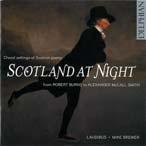
Skempton Address to Edinburgh; arr Powell Dream Angus; Cunningham Scotland at night; The Painter’s Eye; Pärt My Heart’s in the Highlands; MacMillan So Deep; The Gallant Weaver; Stevenson A Medieval Scottish Triptych; arr Brewer Ye Banks and Braes; Hearne The Seagull. Laudibus.
Director: Mike Brewer.
DELPHIAN DCD34060 TT 64:18




And now for something completely different. Composer and conductor, Tom Cunningham, collaborates with novelist Alexander McCall Smith (of The Ladies Number One Detective Agency series) to produce new choral works from the writings of a living poet. Both artists originate from Edinburgh and the resultant six-movement work, Scotland at Night is recorded here for the first time in their home city. Conductor Mike Brewer completes the programme with a selection of short pieces by other composers using settings of Scottish poetry or folk songs. This collaborative output of Scotland at Night and The Painter’s Eye is at one level sombre, almost mystical in nature. At another, it is the music of a lively Scottish Ceilidh, performed with muster and enthusiasm to match. The accompaniment of the CD sleeve provides insight into diverse texts behind these songs. The remainder of the CD contains further surprises, including works of Macmillan and Pärt. The latter’s My Heart is in the Highlands contains an excellent solo performance by Beth Mackay. Brewer’s group Laudibus, is an elite chamber choir auditioned from the National Youth Choir of Great Britain. Their powerful voices are predominantly unaccompanied, save for one simple organ accompaniment and the eponymous Seagulls of the final track. In each of these 20 young voices aspires a budding future soloist, yet the resultant blend of sound is unselfishly rich and appealing under Brewer’s leadership. This astonishing choral recording is my pick of my three reviews in this edition and will live on as a firm iPod playlist favourite.
Stuart Deacon
Hadley My beloved spake; Brahms How lovely are thy dwellings; Geistliches Lied; Mendelssohn If with all your heart; Elgar Light out of darkness; Vaughan Williams O taste and see; Ireland Greater love hath no man; Byrd Ave veru; MacMillan A New Song ; Plumstead A grateful heart; Howells Like as the hart; Walker I will lift up mine eyes; Sumsion They that go down to the seas; Rheinberger Abendlied; Balfour Gardiner Evening Hymn.
Winchester College Chapel Choir.
Director: Malcolm Archer.
Organ: Paul Provost.
REGENT REGCD 290 TT 66:35

Malcolm Archer is to be congratulated on his first disc with Winchester College Chapel Choir since becoming the Master of Chapel Music in 2007. Its varied and well-chosen programme recorded last June shows off this
excellent choir and, in particular, the boys with their luminous ringing tone that, in almost every track, makes for impressive and repeated listening. Archer’s shaping of these anthems is equally impressive where he brings fresh insight into such standard repertoire as Greater love hath no man and Balfour Gardiner’s Evening Hymn. This last is given especially memorable piano singing at ‘Et noctium phantasmata’. Paul Provost too, provides glorious organ support and the opening My Beloved Spake is a shining example of singing with total conviction.
David TrusloveFrescobaldi Toccata Avanti la Messa; Recercar: Sancta Maria; Victoria Missa Gaudeamus.
Lay Clerks of Westminster Cathedral.
Director: Matthew Martin.
Organ: Thomas Wilson.
HYPERION CDA67748 TT 73:20
Hyperion’s strong association with Westminster Cathedral and 16thcentury Spanish polyphony stretches back to the days of James O’Donnell, so this is a welcome return. The focus of this recording is a reconstruction of Mass for the Feast of the Assumption, using Victorias Missa Gaudeamus and motet Vidi speciosum. Victoria’s Mass, scored for a six-voice men’s choir, is based on a motet by Morales, and both make use of the opening phrase of the introit chant ‘Gaudeamus omnes’ which opens the Service. The performance of the polyphony is, as we have been accustomed to except, of the highest standard, and the control of pace and dynamics is very well judged. Service reconstructions of this kind may not be everyone’s cup of tea, but the liner notes provide ample information for those less familiar with the liturgical context. Organ music by Frescobaldi is ably played by Thomas Wilson.
 Paul Gameson
Paul Gameson
68 pp
ISBN 978 0 95504702 2
Humphrey Clucas's trilogy of crime stories set in Westminster Abbey includes a stolen Purcell manuscript and a visiting soloist murdered in the nave. Anne Middleton's Abbey poems range from the Queen Mother's funeral (which she attended) to a witty resurrection scene involving figures from the tombs.
To order send a cheque for £7.50 (including p&p) made out to Humphrey Clucas at the Lewin Press 19 Norman Road, SUTTON Surrey SM1 2TB


Jackson To Morning; Tavener As one who has slept; Lauridsen Ave dulcissima Maria; Thompson Alleluia; Villette O Sacrum convivium; Tormis Iutus; Burgon The Corpus Christi carol; Pitts Adore te; Pärt Magnificat; Dubra Stetit Angelus; Macmillan
A Child’s Prayer; Chilcott The Shepherd’s Carol; Maw Balulalow; Lukaszewski Nunc Dimittis; Byrchmore Various artists.
HYPERION HYP41 TT 71:55




As the booklet so eloquently puts it: ‘In a little more than an hour this disc seeks to give a flavour of the contemporary choral music recorded by Hyperion over the last decade.
And here we do have the finest Gabriel Jackson, Tavener through to Villette, Burgon, Macmillan and more. The choirs from Stephen Layton’s Polyphony, the Holst Singers, Westminster Cathedral and Abbey Choirs; Trinity College Cambridge, Schola Cantorum of Oxford, Wells Cathedral Choir; Tonus Peregrinus, Royal Holloway do full justice to the music. Once heard, I am sure you will want to go on a journey of discovery. Full marks to Hyperion for putting this compilation together.
Patrick Mayhew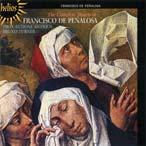
Inter vestibulum et altare; Tribularer, si nescirem; Ne reminiscaris Domine; Versa est in luctum; Domine, secundum actum meum; Adoro te Domine Jesu Christie; Ave verum corpus; Nigra sum, sed Formosa; Sancta Maria; Unica est columbaa mea; Ave, vera caro Christi; Ave vere sanguis Domini; In passione positus; Precor te, Domine Jesu Christe; Paster noster; Ave Regina caeloruum; Sancta mater istud agas; O Domine sanctissima; Emendemus in melius; Deus, qui manus tuas; Domine Jesu Christie qui neminem; Transeunte Domino Jesu.
Pro Cantione Antiqua.
Director: Bruno Turner.
Countertenors: Michael Chance, Timothy Penrose.
Tenors: James Griffett, Ian Partridge.
Baritone: Stephen Roberts.
Basses: Michael George, Adrian Peacock. HELIOS CDH55357 TT 67:53
The music of Francisco de Peñalosa may not be familiar to most listeners and this disc illustrates what a shame that is. A late fifteenth-century Spanish composer whose music was strongly influenced by the Flemish style, particularly Josquin, he spent extended periods of his working life in Rome. None of his music survives in Roman manuscripts however, and those preserved in Spanish and Portuguese manuscripts have often been misattributed. This recording provides an anthology of twenty-two motets which are almost certainly by Peñalosa’s hand. The recording has no chronological ordering, but rather is constructed so as to provide contrast between the three, four and five voiced motets as well as the Penitential, Eucharistic, devotional, Marian and Passion texts which provide their basis. Turner himself points out that this is not a disc to be listened to from beginning to end, but should rather be treated as a sampler of the delights which are on offer.
As you would expect from a group consisting of some of early music’s bighitters, the performance here is stunning. The recording is intimate with performers sounding very close with little acoustic to hide behind. Their approach too is intimate. There is never any need to over-sing. The listener gets the impression that this music is being sung for the performers themselves rather than being projected to an audience in a large space. We are merely overhearing or eavesdropping on a private music-making session. This too carries over to the ensemble performance. The music is not only shaped intuitively, but also coloured by the individuality of each voice involved in its performance.
The highlight is definitely the setting of the familiar funerary text as set by Lobo and Victoria amongst others; Versa est in luctum. The heartfelt cries of the music, matched by the cries of the singers, are enough to bring a tear to any listener’s eye. This music should definitely be considered on a par with those that followed him.
Christopher O’Gorman
My song shall be always; Let God arise; O praise the Lord with one consent.
The Choir of Trinity College, Cambridge. Academy of Ancient Music.
Director: Stephen Layton.
Soloists: Emma Kirkby, Iestyn Davies, James Gilchrist, Neal Davies.
HYPERION CDA67737 TT 66:09
Handel’s large scale oratorios are considered the composer’s most important legacy to English choral music, but they are not his only contribution. Not long after his arrival in London in 1712, Handel had written impressive settings of the Te Deum and Jubilate (Utrecht), but was too busy producing Italian operas to permit much collaboration with the Chapel Royal. It wasn’t until 1717 when he entered the service of James Brydges, the Earl of Carnavon, that the composer concentrated on sacred choral works, and the 11 works known as Chandos anthems were written during 1717-18 for Brydge’s own establishment of resident musicians on his estate at Cannons (Brydges later acquired the title of Duke of Chandos). The structure of the anthems follows that of Handel’s previous Latin psalm settings, with movements for solo voices and choruses. Their texts are taken from the psalms, either the King James Version or the metrical versions of Tate and Brady (1696). Trinity College ably perform three of the anthems, the most familiar being O praise the Lord with one consent, with the opening melody resembling the first phrase of the tune ‘St Anne’. As expected with Handel, there is a high level of self-borrowing, so watch out for moments from his vocal and instrumental music! This is a polished and committed performance, the only minor cavil being highly-intrusive consonants from the choir. The choir is well-served by the soloists and Academy of Ancient Music and provides an exciting alternative to other recordings (The Sixteen recorded all 11 in the late 1980s).
Paul Gameson
Surrexit Pastor bonus; Missa Jäger (Missa Venatorum); Taedet animam meam; Veni Creator Spiritus; Tristis est anima mea; In pace in idipsum; Quare tristis es, anima mea?; Alleluia: vidimus stellam cius; Timor et tremor; Magnificat Septimi toni; Surgens Jesus.
The Girl Choristers and Gentlemen of York Minster Choir.
Director: John Scott Whiteley.
REGENT REGCD297 TT 61:46
One always feels that to listen to the music of Orlando Lassus a large, resonant space is required in order to allow those inevitably thick, polyphonic sounds to wash over one. How clever, therefore, for the Choir of York Minster to choose to record this magical disc in the stunning space of the Minster`s magnificent octagonal Chapter House where the acoustic makes singing almost easy! This is in no way to belittle the performance brought out of the girls and gentlemen of the Minster Choir by John Scott Whiteley, for there is an hour’s –worth of sustained a cappella singing of real quality demonstrated here, but it may have been somewhat less effective had it been recorded in your average BBC recording studio! This programme provides but a snap shot of the vast wealth of composition left to us by this 16th-century Flemish contemporary of Tallis (England), Palestrina (Italy) and Victoria (Spain), but contains some gems. Who can fail to be transfixed by the serenity of Tristis est anima mea or excited by the exuberance of Lassus’s youthful Surgens Jesus or Surrexit Pastor bonus? A posthumously published eight-part Magnificat Septi toni also provides further proof of his inventiveness and easy facility with complex polyphonic writing. John Scott Whiteley supplies erudite and informative ‘sleeve’ notes together with words and translations, though mysteriously the numbering of the latter does not tally with the actual running order; there is, strangely, no number 13! (Superstitious, or what?) ‘Orlando magnifique’ Lassus was once reported to have signed himself, a self-appraisal which one can hardly quibble with, and its also a pretty ‘magnifique’ performance from the York Minster Choir too!
Simon Deller

Visit

Simon Hall
Where the Moon Daisies Wave
An evocative rendition of Victorian parlour songs and sacred music
Peter Auty
Down the River of Years
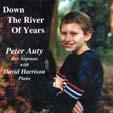
Peter was Senior chorister at St Paul’s Cathedral in the early 1980s. His was the original voice behind Walking in the Air from The Snowman
Richard Bonsall
Encore

A collection of classical and traditional songs
One of the finest recorded treble voices
Lorin Wey
Hey Ho, the Wind and the Rain

Twelve Shakespeare songs, with music from Morley and Arne to Britten and Tippett

Harry Sever
Die Schöne Müllerin
Schubert with Nadanai Laohakunakorn
“I had never expected to be won over by a boy soprano singing this music but I found it completely captivating.” John Rutter
Robert Stephen
Drop, Drop, Slow Tears with Stewart McCoy (lute)

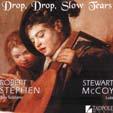
A recital of Elizabethan and Jacobean music by Dowland, Gibbons and contemporaries
Max Riebl
Little Sir William
Including fine accounts of songs by Schubert, Mozart and Britten

Richard Birchall
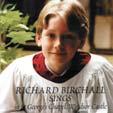
In St George’s Chapel, Windsor Castle
A delightful and atmospheric recording
All CDs £12.50 including UK postage
To order visit our website www.tadpolemusic.com or by post, making cheques payable to Tadpole Music at 37 Kirk Close, Oxford OX2 8JL
The only specialist Choir School in the UK
James O’Donnell Organist and Master of the Choristers
Jonathan Milton Headmaster

All boys receive a substantial Choral Scholarship
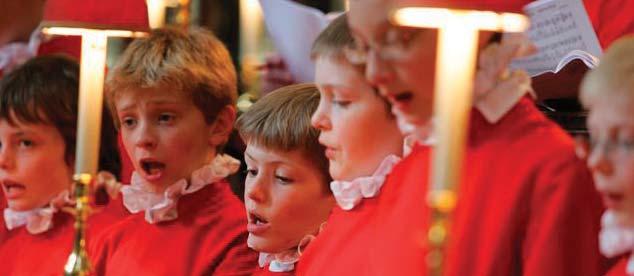
Why not come for an informal audition?
(Boys aged 7 or 8)
Details from:
Westminster Abbey Choir School
Dean’s Yard, London SW1P 3NY
Telephone: 020 7222 6151
Email: headmaster@westminster-abbey.org
www.westminster-abbey.org George

Let the people praise thee, O God; Jesus College Service; A Babe is Born; In excelsis Gloria; Missa brevis; Ave verum corpus; All wisdom is from the Lord; Lift up your heads, O ye gates; O nata lux; Festival Te Deum; Jubilate Deo; Organ solos: Processional; Carillon Wells Cathedral Choir. Director: Matthew Owens. Organ: Jonathan Vaughn. HYPERION CDA67740 TT 75:3266:09
With recordings dedicated to both Herbert Howells and Kenneth Leighton already under their belt it is no surprise that the Wells Cathedral Choir should turn their attention to another of the great twentieth century British (Welsh!) choral composers, William Mathias. Inevitably with Mathias one thinks of bright, rhythmic compositions sparkling with light and energy and with pieces like A Babe is Born, Lift up your heads and the Jesus College Service on offer, sung by a choir on the top of its form, one is not going to be disappointed. It is easy, though, to pigeon hole Mathias as just a ‘one-trick pony’ and there is clear evidence of a deeper, more thoughtful side on this disc in, for example, O nata lux, with its interesting note clusters, and the ethereal All wisdom is from the Lord There is some fine organ playing, too, from Jonathan Vaughan for Mathias takes no prisoners when writing his accompaniments, and the two contrasting organ solos make for a welcome interlude. The core of this disc, however, is the Missa Brevis of 1973, written, as so many ‘contemporary’ commissions of the time, for the Rev. Walter Hussey and St Matthew’s, Northampton. It is an extensive work given full justice by the Wells Cathedral Choir and Matthew Owens. Even if you are not a particular Mathias fan, and I know of some(!), the disc is worth its purchase price for the fine singing alone.
Simon DellerPurcell Jehova quam multi sunt hostes mei; Miserere mei; Remember not, Lord, our offences; Beati omnes qui timent Dominum; Let mine eyes run down with tears; O dive custos; Funeral Sentences (First Set); James MacMillan O bone Jesu; A Child’s Prayer; Sedebit Dominus Rex.
The Sixteen.
Director: Harry Christophers. CORO COR 16069 TT 66:10.
It is no small measure of a contemporary composer’s reputation that he can be partnered on a CD with Henry Purcell – one of the greatest English composers of all time. Such is the case with this new disc (recorded live in Guildford Cathedral) from The Sixteen whose superb performances of gems from Purcell and James MacMillan make compelling listening. Purcell’s arresting harmonies and vocal lines are rendered with matchless singing that’s always wonderfully expressive, most notably in Remember not, Lord, our offences and the less familiar but effective Beati omnes qui timent Dominum, a work deserving to be better known. Purcell’s ability to create maximum impact with music of modest length is mirrored in MacMillan’s brief but telling A Child’s Prayer where vocal arabesques are now a recognisable trademark. These ornamental flourishes (heard also in the lush harmonies of O bone Jesu) continue in Sedebit Dominus Rex, a motet that fails to sustain the same level of inspiration. That said, these fine performances under Harry Christophers make a convincing case for this imaginative coupling.
 David Truslove
David Truslove
MacMillan Padre Pio’s Prayer; The Lamb has come for us from the House of David; On the Annunciation of the Blessed Virgin; A New Song; Todd Among Angels; Stay with me; Panufnik Prayer Stay with me
The Sixteen.
Director: Harry Christophers. CORO COR 16071 TT 63:38.
The three contemporary figures of James MacMillan, Roxanna Panufnik and Will Todd might seem, at first glance, to be strange bedfellows in this new CD from The Sixteen. Linked by three newly commissioned settings of Stay with me by Padre Pio – the Italian Saint St Pius of Pietrelcina canonised

in 2002 – each is given distinctively different treatment. MacMillan’s music always leaves a deep impression and his atmospheric setting is given a convincing performance here, beautifully sung with sensitive (and periodic) organ accompaniment. Where MacMillan’s setting needs no further advocacy, Panufnik’s version doesn’t quite persuade, despite its extra dimension of double choir with soprano and tenor soloists and an ardent performance. For me Will Todd’s version (with piano accompaniment) is the most immediately appealing, even if its cloying harmonies are somewhat dated. His more demanding triptych Among Angels (for two harps and choir), however confirms that this young composer is one to follow.
 David Truslove
David Truslove
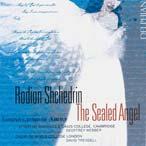
Choir of Gonville & Caius College, Cambridge.
Director: Geoffrey Webber.
Choir of King’s College, London.
Director: David Trendell.
Oboe: Clare Wills.
DELPHIAN DCD34067 TT 54:42
Those unfamiliar with the Rodion Shchedrin will be delighted with this disc of mostly unaccompanied choral singing in a work that combines Russian liturgical tradition (exemplified by Rachmaninov and Tchaikovsky) with Russian folk tradition (derived from Nikolay Leskov’s novella of 1873 about peasant craftsmen illegally preserving an ancient icon). Reminiscent of Rachmaninov’s Vespers, The Sealed Angel was completed in 1988 and forms the crowning achievement of a series of works written in association with the millennium celebrations of Russia’s conversion to Christianity. Although there is no direct relationship with Leskov’s tale, both concern the preservation of beauty and tradition. Not surprisingly we hear traditional Russian chants embedded into a richly varied score with solo roles for soprano and alto, solo oboe interludes and, not least, extreme vocal demands which the combined Cambridge and London choirs dispatch with aplomb. In short, this enterprising recording project combines powerful music sung with distinction.
David TrusloveG Jackson Sanctum est verum lumen; Wylkynson Jesus autem transiens/Credo in Deum; Guerrero Duo Seraphim; Des Prez Qui habitat; Victoria Magnificat sexti toni; O’Regan I sleep but my heart waketh; Anerio Stabat Mater; Ockeghem Deo gratia a 36; Holten In nomine; Tallis Spem in alium. National Youth Choir of Great Britain. Director: Mike Brewer.
DELPHIAN DCD36045 TT 70:21





When I was a student (very many years ago!), I took part in a performance of Tallis’s Spem in alium. I was the tenor in choir 7, and the eight five-part choirs were arranged in a semicircle, and it was riveting to hear the sound move round the semicircle, and build up to the climaxes of the piece. Unfortunately, it is difficult to capture this effect on a stereo recording. (I lost the place during the performance, but fortunately the alto standing next to me didn’t, so I was saved from embarrassment.) Although Tallis was not the first to compose a forty-part piece – that honour goes to Alassandro Striggio who visited London in 1567, and brought Ecce beatem lucem with him. The hypothesis is that the Queen expected Tallis to produce a motet of even greater splendour, and she is reputed to have paid him £1 per part. (Tallis’s salary was around £50 per year!) The booklet gives details of all the music here, including an explanation of the numerology associated with Spem in alium, and of the Gabriel Jackson motet which was written in homage to Tallis in the latter’s quincentenary year. The National Youth choir is very large, and all the performances have an air of robustness. Perhaps the most successful performance is that of Jackson’s Sanctum est verum lumen, where the large forces produce an appropriately dense texture. If you prefer your Tallis with what you might regard as a more appropriate sound, try a recording by one of the groups which specialise in Renaissance choral music, such as the Tallis Scholars (there are at least a dozen recordings currently available. Robert Wylkynson’s music from the Eton Choir Book is featured on the discs by The Sixteen, directed by Harry Christophers, and you may regard his performance as being more in keeping with the early Renaissance style.
David Knight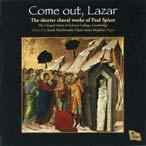

Love is beautiful indeed; His Heart’s desire; Glory be to God for Dappled things; Stars, I have seen them fall; There is no rose of such Virtue; In a field as I lay; This Child of God; Prayer of St Cuthbert; Come out; Lazar; A Grace; Let the Mount Sion rejoice; How love bleeds; Alive; Drop, Drop Slow Tears; Michael; the Great Prince, shall Arise.
The Chapel Choir of Selwyn College, Cambridge.
Director: Sarah MacDonald.
Organ: Chris Innes-Hopkins.
REGENT REGCD280 TT 63:59.
Paul Spicer continues to tread the diverse musical career path that many musicians aspire to. Educated as a New College chorister and later a student at the Royal College of Music, he has since become widely known as an organist, conductor, writer, producer, educator, music festival director and, of course, composer. This diversity of musical activity is reflected in his output as portrayed by this anthology of shorter choral works spanning his career thus far. While firmly rooted in the English choral tradition as exemplified by his teacher Howells and other 20th-century greats through to Walton, Spicer is no pastiche. He explains that while he admires the harmonic beauty of his predecessors, his inspiration comes from their examples in linear writing. Listening to this disc, one is often surprised by the unexpected paths down which Spicer suddenly leads you. This is almost always driven by his evident passion and understanding of the text he is setting. The Choir of Selwyn College, Cambridge, produces a clear, coherent and often very exciting sound under the direction of Sarah MacDonald. Their unison and homophonic singing shows their assuredness as an ensemble. The beautifully balanced and compassionate In a field as I lay is a definite highlight. Unfortunately this sensitivity as an ensemble is not sustained throughout the recording. There are times when the listener is not convinced by musical gestures because of the seeming confusion within the ensemble unit. This is especially noticeable when the harmony becomes less ‘familiar’ when Spicer has taken listener and performer a long way from the home. At the opposite end of the performing spectrum, some pieces seem to lack the rhythmic incisiveness which would really add a sparkle to this exciting music. That said, this is still a very pleasing recording to listen to. For those who do not know the work of Paul Spicer, it is a great introduction while for those who do, it provides an extensive overview of his work to date.
Christopher O’Gorman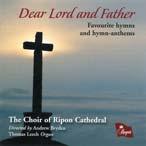
Parry Dear Lord and Father of mankind; arr Bairstow
The King of Love; Harris O what their joy; Cadden Praise be to this congregation; Holst Psalm CXLVIII; Gibbons
Jesu, grant me this I pray; Vulpius The Strife is O’er; Horsley There is a green hill; arr Nixon Love’s redeeming work is done arranged by Stanford Let us, with a gladsome mind; Purest and Highest; In thee is gladness; Pray that Jerusalem may have peace; Praise to the Lord; Oh! For a closer walk; Bevan There’s a wideness in God’s mercy; arr Vaughan Williams The Old Hundreth. The Choir of Ripon Cathedral.
Director: Andrew Bryden.
Organ: Thomas Leech.
REGENT REGCD298 TT 60:39
Ripon Cathedral Choir acquits itself with distinction in a well-chosen programme of seventeen hymns and hymn-anthems. There are some old favourites Lord who hast made us by Holst, Henry Ley’s The Strife is o’er and William Harris’s O what their joy, for example. There are also some less familiar pieces such as H A Chambers’ arrangement of the original aria from which Parry’s famous tune for Dear Lord and Father of mankind is taken. Stanford’s Six Hymns, Op 113 are presented as a group and arrangements of There is a green hill and Love’s redeeming work is done by June Nixon are given traditional treatment but with a modern twist. It is good to hear the Ripon Choir in such fine form under Andrew Bryden. The blend of eight boy and seven girl choristers provides a warm, clear-toned top line and excellent support is given by the former Assistant Organist, Thomas Leech.
Alan Spedding
Stanford Magnificat in G; Vaughan Williams He that is down; Maconchy This day; Mendelssohn Hear my prayer; Leighton Lully, lulla; Britten Te Deum in C; Charpentier Salve puerule; Warlock The first mercy; Berkeley The Lord is my shepherd; Britten In the bleak mid-winter; Ireland Ex ore innocentium; Head The little road to Bethlehem; Rütti Magnificat. Trinity College of Music Chamber Choir.
Director: Stephen Jackson.
Organ: Alexander Finch.
Treble: Andrew Swait.
HERALD HAVPCD 349 TT 58:44
This is one of those occasional recordings made not for a particular audience, nor for a group of musicians anxious, from time to time, to demonstrate their prowess to a wider public, nor to celebrate the music of a favourite composer, but in order to capture a voice in its pomp before it loses its lustre. All voices deteriorate with age but only the boy treble must suffer the indignity of terminal fracture. It is a natural phenomenon and for most, even ‘professional’ cathedral choristers, it is accepted as an inevitability and as an opening door to a new stage in life. Sometimes, however, choristers will emerge with an exceptional instrument (most cathedral choirs will have experienced them and gratefully utilised them) and Andrew Swait is a prime example. Having come through the choir at The Abbey School, Tewkesbury, before its sad closure in 2006, Andrew has moved on to Cheltenham College where he has continued singing in the College Chapel and Chamber Choirs. This recording unashamedly captures the last rays of a glorious voice with a galaxy of old favourites from the solo treble repertoire. Andrew demonstrates mature musicianship of his own but is fortunate to have the sensitive and controlled direction of the vastly experienced Stephen Jackson to guide him through together with organist Andrew Finch and the choir of Trinity College of Music to accompany him. Interestingly the disc was recorded in two sessions almost a year apart (May 2007 and March 2008) and it is a diverting (if somewhat sterile) exercise to surmise which tracks were recorded when; though it is not impossible to detect the more mature voice of the later session. The disc opens with that most iconic of solos in the cathedral choir repertoire, Stanford in G It’s a ‘rite of passage’ for any aspiring treble soloist and here represents a slightly intonally shaky start (I suspect a product of the earlier session!) but which thereafter settles into a seemingly effortless rendition. Amongst the other tracks, I enjoyed the eponymous Salve Puerule by Charpentier and Mendelssohn’s Hear my prayer, that other cathedral repertoire war-horse, where Swait does a commendably unvibrato’d Ernest Lough impression! Carl Rütti’s Magnificat for solo treble certainly challenges the singer and makes a fitting conclusion. This is a thoroughly enjoyable showcase recording; the last opportunity to capture a remarkable voice. Who knows, it may not be too long before we have the first opportunity to hear a recording of the young up and coming tenor (baritone/counter tenor) Andrew Swait!
Simon Deller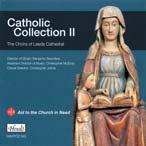
Haydn Insanae et vanae curae; Perosi Laudate Dominum; Rheinberger Qui sedes Domine; de Cristo Osanna filio David;Almaredemptoris mater; Regina caeli; Lécot Holy Virgin; Perosi Ave Maria; Mawby Magnificat primi toni; Andriessen Tantum ergo; Charpentier Panis angelicus; Palestrina Sicut cervus; Terry Lord, for tomorrow and its needs; Pergolesi God of mercy. The Choirs of Leeds Cathedral.
Director: Ben Saunders.
Assistant Director: Christopher McElroy.
Choral Director: Christopher Johns.
HERALD HAVPCD 345 TT 58:47



I approached this with the likely expectation that it would be a worthy and sincere offering of music used for worship and liturgy during the year of a thriving and busy Roman Catholic Cathedral and in this I was not disappointed. What I had not expected, much to my shame, was a wholly professional and harmonious performance with affinity not only with the music but the words. Not that this disc is likely to have universal appeal but having the support of Aid to the Church in Need, a Catholic charity ‘helping the faithful wherever they are persecuted, oppressed or in pastoral need’, it is clear to which audience this disc is aimed. There are 20 tracks, 14 of which

are less than three minutes in length, being hymns, short motets and fragments of Gregorian chant, but they are each approached with sincerity and dignity. Of the more substantial offerings the Magnificat primi toni by Colin Mawby, former Master of the Music at Westminster Cathedral, is by far the most extended. It was commissioned by Leeds Cathedral for their reopening following the cathedral’s restoration in 2006 and is performed here with considerable authority aided, as with the whole disc, by the splendid acoustic of the neo-Gothic, early 20th-century building. Haydn’s Insanae et vanae curae is also given an enthusiastic airing and of the rest, three motets by the Portuguese composer Pedro de Cristo are worthy of note. There are three separate groups of singers: a boys’ choir, a girls’ choir and an adult, four-part choir. There is no indication as to which entity is singing which item though it is fun to try and identify which group (or groups) is (are) singing the top line! All I can say is that Leeds Cathedral is clearly spoilt for choice in its daily worship! A disc to enjoy in one of those reflective moments when a naughty world means a spiritual uplift is required.
Simon Deller
GRIFFIN GCCD 4065
This CD contains 28 tracks, each originally recorded between 1964 and 1989 by Harry Mudd for Abbey/Alpha Records, the company he founded for the purpose of recording the Anglican church repertoire. There are recordings here of 12 boy trebles – 10 soloists and two duettists.

The booklet contains a fascinating history of the recording of the Treble Soloist, called, before the Second World War, the ‘Boy Soprano’, and whose name was always prefaced by ‘Master’. The craze for boy sopranos was at its height during the 1920s, and the most famous recording was that of Master Ernest Lough singing ‘Hear my Prayer’ – this sold a million copies, and has been available continuously since its first issue in 1926. All 12 trebles show considerable musicality in their performances – diction is remarkably clear, and intonation is almost always secure. Remastering has produced recordings of generally clean quality –an occasional track has a slight hiss. It is, perhaps, invidious to pick out particular soloists, but I was interested to hear the tracks by Dara Carroll, who issued two solo LPs during his treble career, and those by Paul Dutton, who was a well-known oratorio soloist as a treble. I particularly enjoyed the A A Milne/H. Fraser-Simpson songs performed by Andrew Wicks, but I thought the high-spot of the CD was the performance of ‘The Call’, from Vaughan Williams’s ‘Five Mystical Songs’, by Robin Blaze, who is now, of course, an internationally known counter tenor. (I was also intrigued to note that accompaniments were provided by some eminent English organists, including John Birch, Harry Bramma, Edward Higginbottom, Donald Hunt, and David Lumsden.) The booklet also includes interesting biographical detail about the soloists, although there are a couple of spelling errors, and a few tracks of unaccompanied singing are credited with an accompanist.
David KnightMissa Ego flos campi; Antevenis virides; Ecce apparebit Dominus; Magnificat octave tone; Miserere mei, Deus; Filiae Jerusalem; Spiritus Domini; Musica Dei donum; Salve Regina; Clemens non Papa Ego flos campi Cinquecento Renaissance Vocal Terry Wey.
Counter tenor: Jakob Huppmann.
Tenors: Tore Tom Denys, Thomas Künne .
Baritone: Tim Scott Whiteley.
Bass: Ulfried Staber.
HYPERION CDA 67733 TT 75:21
Jacobus Vaet (c.1529 - 1567) was a chorister at Notre Dame, Courtrai and a scholar of Louvain University, subsequently becoming Kapellmeister to the Archduke Maximilian of Austria, nephew of the Emperor Charles V. He served Maximilian loyally for the rest of his short life, even sympathising with the Archduke’s inclinations towards Protestantism, which had to be suppressed. Maximilian in turn was generous to Vaet and he enjoyed the esteem of many of the great musicians of his day. Several prominent composers wrote elegies in honour of Vaet when he died and Maximilian recorded his own regrets in his diary. In his compositions Vaet followed the customs of his time by using previously composed material by himself or other composers. Indeed, his nine surviving Masses are all parody compositions.
Possibly the greatest influence on him was exerted by his friend Clemens non Papa whose motet Ego flos campi (the last track on the CD) was the inspiration for Vaet’s Mass which is also performed here. In addition to these two pieces the programme includes seven superb motets and one of Vaet’s Magnificat settings in stylishly satisfying performances by the excellent soloists of Cinquecento. The presentation, recording and informative programme notes are well up to Hyperion’s high standards and we are in their debt for the opportunity of enjoying this music so well performed.
 Alan Spedding
Alan Spedding

Sechs Lieder und Romanzen; Drei Quartette; Fünf Gesänge; Zigeunerlieder; Dem Dunkeln Schoss Der Heil’gen Erde. Consortium.
Director: Andrew-John Smith.
Piano: Christopher Glynn. HYPERION CDA67775 TT 66:33




Brahms is probably best known to the general musical public as the composer of large-scale symphonic works. It is easy to overlook his intense interest and involvement with the music of previous ages. He studied the music of Gabrieli and Bach and even founded a Heinrich Schütz Society. He conducted his first choir while still in his teens and kept an interest in choral music throughout his life. His choral writing was informed by his studies in earlier music and he employed many choral devices used by earlier composers. For Brahms’s generation the rediscovery of a cappella music in particular became an expression of forward-looking modernity. In his youth Brahms also encountered gypsy music –a fascination which also remained with him. Brahms was an intensely private person, but he harboured passionate feelings for a number of women, although he never married. Perhaps it is no surprise that by far the greatest number of poems he chooses to set express a deep yearning, even in the fiery Zigeunerlieder. Andrew-John Smith draws some ravishing performances from the singers of Consortium, ably assisted by the sympathetic piano accompaniments of Christopher Glynn. The use of an 1872 Bösendorfer piano gives the finishing touch of period colour. Another Hyperion triumph!
Alan SpeddingElgar Psalm 100; Give unto the Lord; Stanford Jubilate Deo in B flat; Turle/Hanforth Psalm 81; Byrd Sing joyfully; Marshall Psalm23; L Berkeley Psalm23 (v 14); Goss/Bairstow Psalm 55; Mendelssohn Hear my prayer; Goss Psalm 116; Harvey I love the Lord; C H Lloyd Psalm 137; Palestrina Super Flumina Babylonis; Schütz An den Wassern, zu Babel, saßen wir; Garrett Psalm 29 Lincoln Cathedral Choir.
Director: Aric Prentice.
Organ: Charles Harrison.
GUILD GMCD 7325 TT 71:10
There has evolved a special tradition of psalm singing at Lincoln, culminating in the Lincoln Psalter in 2006, which incorporates chants and pointing specific to this cathedral. The sound of the choir has developed hugely under the direction of Aric Prentice and Charles Harrison, who now obtain a notably vibrant choral tone. I noticed it when they sang for R3’s Choral Evensong recently. It is a unique style; very bright and forward, with a mixed top line (50/50), which is well blended and the diction is clear and the ensemble excellent. This programme presents psalms sung to some fine chants, with linkage within the nicely planned sequence: eg. Philip Marshall’s setting of the complete 23rd Psalm, followed by Lennox Berkeley’s haunting setting of the first four verses, in which Christopher Mitchell is the able treble soloist. The longest track, Mendelssohn’s Hear My Prayer, has a nice soprano soloist, Avalon Summerfield. There is a fine Palestrina setting, followed by Schutz’s An den Wassern with a chamber organ, harpsichord and ‘cello accompaniment. We get a very full sound in the Elgar settings at the start and end. A really superb recording, with the choir standing in the crossing area for maximum resonance.
The organ, the last voiced entirely by ‘Father’ Willis himself, sounds magnificent.
Roger Tucker
Polyphony. Britten Sinfonia.
Countertenor: Iestyn Davies.
Tenor: Allan Clayton.
Baritone: Andrew Foster-Williams.
Narrator: Roger Allam.
Director: Stephen Layton.
HYPERION CDA67724 TT 55:24
In view of the number of artists and sculptures who have been inspired by the sequence of the Fourteen Stations of the Cross, it is surprising that so few composers have been similarly engaged. There are, after all, many musical versions of the Passion narrative from simple plainchant to the towering masterpieces of J S Bach. The whole notion of a musical journey along the Via Crucis suggests so many opportunities of conveying drama and religious devotion in equal measure. Lukaszewski’s significant and monumental work is a deeply moving evocation of this journey. Each station is announced by massive orchestral chords denoting the number of the scene (one chord for Station I, two for II and so on). The format for each scene is a sequence of recurring refrains and mottos. The narrative proceeds by means of spoken declamation, solo countertenor, tenor or baritone voices and the chorus, used as a crowd or in contemplation of the action. Movement between the Stations is conveyed by an orchestral promenade in the manner of Moussorgsky’s Pictures at an Exhibition, but is here based on a Polish folk tune. The whole work has strong Polish resonances. The composer himself grew up near the Jasna Góra monastery, the home of Poland’s holiest relic, the Black Madonna icon. The monastery is also the resting place of the ashes of Father Popieluszko, martyr of the Solidarity movement. Via Crucis, with its final extra Resurrection Station (XV), could be interpreted as a reflection of the struggle of Polish Catholicism to defeat the Communist régime. Stephen Layton draws a compelling performance from the combined forces of his choir, Polyphony, the Britten Sinfonia and the excellent soloists and narrator. Again, we are indebted to Hyperion for their championship of music which deserves a wide hearing. Highly recommended.
Alan SpeddingJones Resonet in Laudibus; Anon Resonet in Laudibus; Britten A Boy was born; Walton All this time; Wood I Hail! Blessed virgin Mary; Redner O little town; Burrell Resonet in Laudibus; Cooke O men from the fields; ‘CB’ (Madan, 1769) Hark! The herald; Murray Away in a manger; Walford Davies O little town; Trad This is the truth sent from above.
The Plaxtol Scholars.

Director: Marius Carbnoni.
TT 46:48 020011011 via www.uhrlabel.com





This is a Christmas Carol record with a twist in as much as there are familiar titles but in many cases with unfamiliar, or less frequently performed, tunes and arrangements. The title carol, Resonet in Laudibus, for example, appears in three guises; once in its anonymous 14th-century form and twice in specially composed and modern incarnations, by Elfyn Jones and Howard Burrell, which are ‘premiered’ on this disc. There are three Away in a mangers, two O little towns and a couple, also, of Hark the heralds where even the Mendelssohn isn’t quite as you might expect it! So an interesting piece of programming from the Plaxtol Scholars, a well-established group based in the south-east, who clearly enjoy their music-making. For my taste the ambience is a bit pedestrian with tempi tending towards the unadventurous, particularly in the Walton, and the whole lacking sparkle, but the singing is accurate and the ensemble homogeneous. I don’t think the recording balance is entirely helpful either. Presumably in St Barnabas, Tunbridge Wells, where this recording was made, there is some inherent acoustic which, if utilised here, would have given ‘space’ to the singers and been of benefit to the listener. Not for me, therefore, a disc of choice on Christmas Eve, but good marks for effort and originality of carol selection.
Simon DellerOnce in royal David’s city; Away in a manger; Gaudete; In ducli jubilo; O come all ye faithful; Hark! the herald; A truth sent from above; arr Wardell Rocking; Warlock Bethlehem Down; Head The little road to Bethlehem; Bédard Variations sur ‘in ducli jubilo; Whitacre Lux aurumque; Howells A spotless rose; Bach In ducli jubilo; Buxtehude In dulci jubilo. Chichester Cathedral Choir. Director Sarah Baldock.
Organ: Mark Wardell.
HERALD HAVPCD 350 TT 70:54
Once in royal David’s city; Away in a manger; Il est né divin; O little one sweet; Rejoice and be merry; It came upon a midnight clear; Sussex Carol; Of the father’s heart; As with gladness; Puer nobis nascitur; The Lord at first did Adam make; A great and mighty wonder.
Grunenwald Nativité (organ); Berlioz The Shepherds’ Farewell; Darke In the bleak midwinter; Walford Davies O little town; Halls rejoice and be merry; Sing, O sing this blessed morn; I heard an infant weeping; Manz E’en so Lord Jesus.
The Boys and Lay Clerks of Salisbury Cathedral Choir.
Director: David Halls.
Organ: Daniel Cook.
PRIORY PRCD 1025 TT 75:52
It’s hard for a reviewer of Christmas CDs. There’s a lot of music which is the same and performances are always of a high standard. Take these two CDs which are from neighbouring cathedrals, both are to be recommended and the singing is first class. Both also use the boys and men of the cathedrals and also have organ solos. I would look at the list of music and choose which one takes your fancy. Although read carefully to make sure it is the tune you want to hear. Is it fair for a reviewer not to come down on one side or the other? Probably not as there are so many cathedrals churning CDs out for this period. If pushed though, I will say that my preference on the tone and repertoire is Chichester.
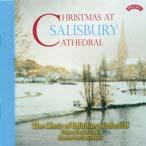
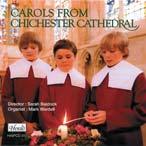 Patrick Mayhew
Patrick Mayhew
Once in royal David’s City; Sussex Carol; Love came down at Christmas; The Virgin Mary; Silent Night; Wexford Carol; I saw three ships; Lully, Lulla; We three kings; I saw three ships; O come, O Come Emmanuel; A child is born; Love came down at Christmas; Ave Maria; In the bleak midwinter; Rejoice, rejoice. Logos; A Christmas Blessing; Jesus Christ the Apple Tree; Gloria (Keble Missa Brevis); Tomorrow shall be my dancing day.
The Ecclesium Choir.
PRIORY PRCD 1019 TT 64:57
If you want to buy one CD of Christmas music this year then this is it. The quality of singing and the choice of music quite simply represents the best I have heard for a long time. We have arrangements by the talented Philip Stopford. If you hated We three kings or Silent night then after listening to Stopford’s arrangement you will come to love it. His use of the soprano voice is very effective, not least in O come, O Come Emmanuel. The flute solo arrangement of Love came down at Christmas is delightful. I listened to this CD in the car on the way to a meeting, I was disappointed to arrive at my destination before the CD had finished. Stopford’s composition Ave Maria is straightforward and beautiful and the Gloria from the Keble Missa Brevis is inspiring music. All through the organ plays an important, inspiring and perfect accompaniment role. There are two pieces with piano, one which ends the CD collection, A Christmas Blessing that I think is a mistake and is an anticlimax. The other carol which has been given a facelift arrangement is Once in Royal David’s City. I guarantee that this CD will be played more often in the run-up to Christmas in my house than any other because it is different without travelling too far in one direction. Refreshingly superb.
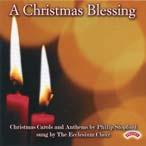 Patrick Mayhew
Patrick Mayhew
Carols old and new for Advent and Christmas
Shephard Advent Carol*; In darkness held; I sing of a maiden; Prayer for a new mother; Aston Woodland Carol*; My dear heart; Make we joye; Allen In ducli jubilo*; McDowall Now may we singen*; Ives Little star of Bethlehem; Paynter There is no rose; The Oxen*; Edwards EasternMonarchs; Adam lay ybounden; The first Christmas; Carol of the birth; Rose Domini Jesu*; Sans day carol*; A Somerset carol; Bertalot What a night*. Concord Singers.
Director: Mary Lock.
Organ and Piano: Paul Edwards.
LAMMAS LAMM 045D TT 62:26.
The good thing about this CD is that it contains eight newly commissioned carols –those marked with an * in the list above. I particularly enjoyed John Bertalot’s What a night. All are worthy contributions to the repertoire. The Concord Singers was formed in 1979 by Mary Locke. However, this is not a church or cathedral choir and the style of singing is what you would hear from a mixed adult choir which puts on concerts three times a year. Throughout one is waiting to be woken out of slumber to herald the Christmas story. Most of the singing is a cappella. There is so much on the market for this period of the Christian calendar.
 Patrick Mayhew
Patrick Mayhew

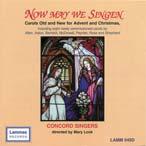
Dove Seek Him that maketh the seven stars; Spikesman
There is no rose; Pärt Bogoróditse Djévo; Stanford Magnificat in C; Walford Davies O Little town of Bethlehem; Rütti I wonder as I wander; School songs(4); Archive songs recordings from 1934(4) & 1949(1)
Dulwich College Chapel Choir.
Director: Richard Mayo.
Organists: John Carnelley, Norman Harper.
Pianist: John Carnelley.
OPERA OMNIA OP8778 TT54:24
See advert on page 16 for purchase details.
For this recording, sponsored by the Alleyn Club, the first under Richard Mayo’s direction, the Chapel Choir travelled to St John’s Church, Upper Norwood, as for previous CDs. The benefits are the acoustic bloom, there is a brick vault, and the splendid three-manual T C Lewis organ of 1882, here in fine voice and recorded in an ideal sound balance. It is a pity that it doesn’t have one track to itself but its job here is to provide firm accompaniment for the varied programme, opening with a twinkling stellar backdrop for Jonathan Dove’s notably calm anthem. Colin Spikesman sings bass in the choir and teaches music in the College, his setting of the 15thcentury words is powerful and the choir do it full justice. In the Arvo Pärt setting of a Marian excerpt from the Orthodox liturgy they ably trip off the text in old Estonian. Stanford in C is a favourite setting, here done with conviction and strength and in both this and the previous track the Choir show the gain from singing services in the spacious acoustics of St Paul’s Cathedral and Westminster Abbey. It was on the latter that the College Founder, Edward Alleyn, modelled the original choral foundation in 1626 and this was revived in 1998, bucking the downward trend in some public schools. [This was looked at in our Chapel Voices survey (CM 2/02 & 2/03)]. Toby Medland is the pleasing treble soloist in the Walford Davies carol. The hugely emotional School Songs all date from the Victorian or Edwardian periods and, taking him back over sixty years, this writer has to admit to finding them overpoweringly nostalgic: In all that time I have never heard them better sung than here.
I was interested to read Jan Piggott’s note that the ‘Goodbye’ song was dropped in the 1960s as too sentimental. So why can’t we stand sentiment any more? I rather wish that David Stark, a former treble soloist with this
choir, now with a nice tenor voice, had used more emotion in this 2008 rendering. A bonus is the final five tracks of archive recordings of the Songs, from 1934 and 1949, which sound dire and serve to show the vast improvement in both today’s choir and the art of recording. However, I find the 30s diction and style of singing really diverting. Richard Mayo, a former chorister of St John’s and organ scholar of Corpus Christi Colleges, at Cambridge, is to be congratulated on his first CD at Dulwich.
Roger TuckerOnce in Royal David's city; The holly and the ivy; O come all ye faithful; O little town; We wish you a merry Christmas; It came upon the midnight clear. Hark the herald; Away in a manager. Gardner Tomorrow shall be my dancing day; Parsons Ave Maria; Darke In the bleak midwinter; Shephard The promise of Peace; arr
Moore The Lord at first; Old Basque The Angel Gabriel; Scott Whiteley Reges Thasis; Warlock Bethlehem Down; Rutter Shepherd's pipe carol; Poulenc Hodie Christus natus est; Händl Omnes de saba
The Choir of York Minster.
Director: Robert Sharpe.
Organ: John Scott Whiteley.
REGENT REGCD317 TT 65:30
This CD contains some fine singing and organ accompaniments. The diversity of repertoire adds to the value so we have a mixture of congregational choirs mixed with fine miniatures spanning the centuries. John Scott Whiteley shows how to use the Minster organ to great effect. I am pleased that Sharpe includes the Willcocks versions of the carols we all know and descants we all love and are familiar with it is one of the factors that make a good Christmas CD for me. The choir is on good form and the contributions from York composers such as Richard Shephard, John Scott Whiteley and Philip Moore in this context as arranger make for superb contributions. A nice all-round recital.
Ian Morgan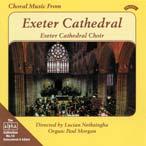
Vierne Messe Solennelle in C Sharp minor; Stanford Three Motets; Elgar Ave verum corpus; Howells Magnificat & Nunc Dimittis (St Paul) Exeter Cathedral Choir.
Director: Lucian Nethsingha.
Organ: Paul Morgan.
PRIORY PRAB 113. The Alpha Collection No 14. TT 47:326




Harry Mudd founded Abbey/Alpha Records with the purpose of recording as much of the Anglican church repertoire as possible. He died in 2004, and Priory Records has acquired the rights to some of his recordings. The music here was recorded in Exeter Cathedral in February 1987. The transfers are excellent – every track is remarkably hiss-free, although in the Elgar, the opening organ chord has been virtually eliminated, as the organ and choir begin almost simultaneously. The performances are very creditable – there is a very occasional very slight blemish, and the treble tone loses some quality in the highest register. The organ playing is first class, and the lack of a West End organ (the Vierne was written for a ‘petit orgue’ as well as a ‘grand orgue’) does not detract from the enjoyment of the performances. In fact, the Vierne displays the resources of the Exeter instrument to great effect. The booklet is informative about the music, although there is nothing about the organ (perhaps to be expected of a mid-price reissue) – and there is a photo of a fairly young looking Paul Morgan(!), who celebrates 40 years as the Cathedral organist in 2009.
David KnightAndante in E flat major (Book 1 No 1); Andante in F major (Book 1 No 2); Choral Song and Fugue; Andante in G major (Book 2 No 1) Larghetto in F sharp minor (Book 2 No2); Andante I E flat major (Book 2 No 3); Holsworthy Church Bells, Air with Variations; Larghetto in F minor; Variations on the National Anthem; Andante Cantabile in G major; Andante in E minor; Andante in D; Grave in D minor –Andante in F major; Andante in C; Andante in A; Andante in C for Organ or Harmonium; Psalm Tunes: ‘St Anne’; ‘Angels Hymn’; ‘Irish’; ‘104th Psalm’; ‘Westminster’; ‘Bedford’; ‘London New’; Introduction and Fugue in C sharp minor
PRIORY PRCD 1015 DOUBLE CD TT 109:39
In releasing this double CD album, Priory Records has anticipated a renewed interest in Samuel Sebastian Wesley’s organ music ahead of bicentenary celebrations next year marking the composer’s birth in 1810. There will most likely be others, but this excellent recording has a head start and is a fine addition to any collector of Wesley’s music. There are a total of 15 works, spanning just two hours, which represent Wesley’s entire published output for organ, a surprisingly small output considering he was one of the greatest organists and composers of church music that Britain ever produced. His legacy establishes his place as an outstanding composer for the instrument which occupied much of his life. One cannot but agree with Peter Horton who wrote the excellent accompanying notes that the Larghetto in F sharp minor is the gem of A Second Set of Three Pieces for Chamber Organ in which ‘Wesley encapsulates a sense of sad beauty’ a feature that appears in many of his compositions. The least attractive of the tracks is Wesley’s Variations on the National Anthem which Dr Donald Hunt once described as ‘delightfully vulgar and flashy’.

Undoubtedly, Wesley’s technique and ability as an organist was formidable and it is to be regretted that we will never hear any of his inspirational improvisations, and as Peter Horton states, for those who heard them, including his pupil William Spark, ‘he was certainly one of the finest and most dignified extempore players of his day and generation’. How regrettable that those sounds have disappeared into the stonework of Hereford, Winchester, Exeter and Gloucester cathedrals and other churches, and all we have is the testimony of those who witnessed his playing. No lesser musicians than Sir Walter Parratt and Sir Hubert Parry, who both heard him play and extemporise, were left in awe. A priest at Exeter Cathedral once said, ‘He was an unconventional soul, but then he was a genius’. For lovers of SSW’s music this is a veritable feast played with a subtle understanding of the music, vigour and yet sensitivity by John Robinson, Assistant Organist at Canterbury Cathedral on the organ of Carlisle Cathedral. The Carlisle organ was built by Henry Willis in 1856 (when Wesley was at the height of his powers), with Harrison & Harrison adding a fourth manual in 1907, a major redesign in 1962 by Walkers and a major refurbishment in 1997 by David Wells.
Trevor GodfreyWeitz Grand Chœur ‘Benedicamus Domino’ ; Bourgeois Prelude & Toccata; Rinck Variations and Finale on ‘Ah, vous dirai-je Maman’; Olsson
Introduction and Allegro; W Lloyd Webber Dedication March; Fugue in D minor; Grainger Handel in the Strand; Vaughan Williams Prelude 7 Fugue in C minor; Duruflé Choral Varié; Mathias Recessional.
HYPERION CDA67734 TT 78:19
Organ Fireworks is 25 this year! The first recording was made in 1984 in Westminster Abbey since when Christopher Herrick has visited inter alia Hong Kong, New Zealand, North America and now Sweden where he plays a fourmanual instrument originally built by Åkerman & Lund and most recently restored (in 1998) by Harrison and Harrison of Durham. As in his earlier
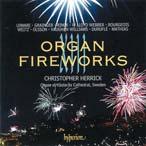
discs, Christopher Herrick provides an entertaining programme of works, some of which will be new to some readers, whilst others will be better known. The Rinck Variations are based on the tune that we know as ‘Twinkle, twinkle little star’, whilst the Duruflé variations take the well-known plainsong hymn used in the ordination service as their theme. Similarly, Handel in the Strand will be familiar to readers of Cathedral Music. The Lloyd Webber here is William (father of Andrew and Julian), whose March reminded the reviewer of Percy Whitlock’s music. Two pieces, which deserve a much wider audience than they currently enjoy, are Lemare’s Toccata and Fugue in D minor and Olsson’s Introduction and Allegro. Lemare was Organist of St Margaret’s Westminster before emigrating to North America where he was best known as a professional recitalist, although he also composed a large number of works as well as making (usually fiendishly difficult) arrangements of orchestral works for the organ. Olsson was a similarly famous virtuoso in Sweden in his lifetime and his work includes some exciting fugal sections as well as some softer passages before building to a satisfying climax rather in the style of Reger. Another exciting disc from H&H (Herrick, Hyperion) on an organ by H&H (Harrison and Harrison), not to be missed by any serious collector of organ recordings and those who are keen to broaden their knowledge of repertoire for the king of instruments.
Tim Rogerson
Hollins Triumphal March; Elgar Larghetto (Serenade for Strings); Nimrod; Handel March (Deidamia); Minuet (Alcina); March Rinaldo; ‘Lascia ch’io pianga’ (Rinaldo); March (Scipio); Bach Praeludium pro Organo pleno; Fuga a 5 con pedale pro Organo pleno; Liszt Weinen, Klagen, Sorgen, Zagen; Atkinson A little Liturgical Suite based on Scottish folk melodies; Holst Jupiter theme from The Planets; Walton Popular Song (Façade); Coronation March: Orb and Sceptre.
DELPHIAN DCD 34022 TT 78:08




The organ in the Usher Hall was built by Norman & Beard in 1914 and was restored in 2003 by Harrison and Harrison having fallen into disuse towards the end of the last century. It is superbly suited to the programme, which John Kitchen presents on this disc, which is a remastering of a recording originally made and released in 2004. The programme itself consists of tuneful music, which should appeal to all readers of this magazine. Alfred Hollins gave one of the inaugural recitals on the organ in 1914 and his wonderful Triumphal March, which starts the programme allows the listener to hear the Carillon stop on the organ. The Bach piece is given a romantic performance, so presenting the music as it might have been performed at the time that the organ was built.
Geoffrey Atkinson is an Aberdeen-based composer who won a prize from the Dr William Baird Ross Trust in 1999 for his Liturgical Suite. The first two movements are soft and gentle, whilst the final ‘postlude’ is rather louder and more lively. The two Walton transcriptions bring the disc to a satisfying close. Throughout this wide-ranging programme, John Kitchen’s playing is of the highest order, achieving great clarity and demonstrating the enormous tonal spread of this fine instrument. Recommended!
Tim Rogerson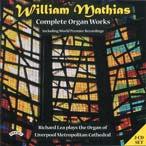
Fanfare; Vexilla Regis Prodeunt; L’Homme Arme; Antiphonies; Processional; Berceuse; Recessional; Invocations; Prelude, Elegy ad Toccata; Postlude; Fanfare for KBL; Toccata Giocosa; Jubilate; Braint; Variations on A Hymn Tune; Carillon; Fenestra; Canzonetta; Fantasy; Chorale Easter 1966; Partita. PRIORY PRCD 870 CD1 TT 75:57. CD2 TT 76:57
I had the pleasure of meeting William Mathias twice. On two occasions I was a delegate at a conference on some aspect of music or music education when Mathias was a guest speaker. I remembered being both entertained and inspired by his addresses, and have fond memories of chatting with him later (in the bar!) where he proved to be both modest, yet entertaining. I have also attempted to play some of the pieces featured on these CDs – some are beyond
my capabilities – and listening to them has inspired me to do some more work. The CDs contain the world premiere recordings of the Prelude, Elegy and Toccata, first written in 1955, but never published, and the Fanfare for Barry Lyndon, lately Clerk of the RCO, which acts as a prelude to the Toccata Giocosa. Two of Mathias’s substantial works for organ are Antiphonies and Variations on a Hymn Tune (Braint). The former is based in part on the plainsong melody Vexilla Regis and the secular French song, L’homme armé. Performances of these (by a solo treble and the Liverpool Welsh Choral) precede the playing of Antiphonies, and the Choral also performs Braint before the Variations. The organ playing throughout demonstrates Richard Lea’s skill and musicianship and his mastery of the resources of the instrument in Liverpool Metropolitan Cathedral. The booklet is informative and very readable, containing full details of the music, the performers, and the organ. There are also articles by Rhiannon Mathias, the composer’s daughter and Ben Rees, a contemporary from Mathias’s student days at the University of Wales, Aberystwyth.
David Knight63 pieces for Harmonium. Neil Wright plays the Cavaillé-Coll Organ of Farnborough Abbey
Sept Pièces en ut majeur et ut mineur; Sept Pièces en ré bémol majeur et ut diése mineur. Sept Pièces en ré majeur et ré mineur Pour le temps de Noël; Sept Pièces en mi bémol majeur et mi bémol mineur; Sept Pièces en mi mineur et mi majeur; Sept Pièces en fa majeur et fa mineur; Sept Pièces en fa dièse mineur et sol bémol majeur; Sept Pièces en sol majeur et sol mineur Pour le temps de Noël; Sept Pièces en la bémol majeur et sol dièse mineur.
PRIORY PRCD 845 CD1 67:36 CD2 52:05
When César Franck first played the organ that Aristide Cavaillé-Coll installed in the church of Sainte-Clotilde in Paris, Franck described with delight that his new instrument was ‘an orchestra’. Although Cavaillé-Coll built over 500 instruments, only six came to the UK, and those have been destroyed, or have been heavily modified, or are in a state of disrepair –except the two-manual instrument in Farnborough Abbey. The organ was installed six years after Cavaillé-Coll’s death in 1905 by Charles Mutin – in fact the BIOS website describes the instrument as ‘by Mutin, formerly attributed to Cavaillé-Coll’. But it sounds like Cavaillé-Coll, and the instrument allows us to hear the Franck pieces as the composer would have heard them. They were written as the result of a commission by Enoch and Costallat, and Franck’s plan was for thirteen suites, each of seven pieces, one in each key, like J S Bach’s The Well-Tempered Clavier, the first and last of the suites to be in C (or rather Ut). Movements in each separate suite would be in both major and minor tonalities. Unfortunately, Franck died before the project was completed, and eight complete suites and three pieces in A flat major were published, as L’Organiste, by Enoch in 1892, two years after Franck’s death. Four further pieces were published in the mid 1950s after it was decided that the manuscripts could be justified as Franck’s. Neil Wright’s playing is stylish, and the recording captures the Cavaillé-Coll sound perfectly. But you will probably not want to listen to all 63 pieces at one sitting. There are almost ninety minutes of music on the two CDs.
 David Knight
David Knight
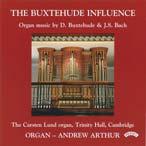
Buxtehude: Toccata in D; Durch Adams Fall ist ganz verdebt; Praeludium in G; Praeludium in F-sharp; Herr Jesu Christ, ich weiß gar wohl; Magnificat IX Toni (2verses); Von Gott will ich nicht lassen; Fuga in G; Komm heiliger Geist Herre Gott; Ciacona in E; Canzonetta in E; Wie Schön leuchtet der Morgenstern; Ciacona in C; Praeludium in C; Passacaglia in D; Passacaglia in G; Herr Christ der einig Gottes Sohn; Praeludium in G; Fuga in C; Bach: Herzlich tut mich verlangen; Erbarm dich mein; O Herre Gott; Meine Seele erhebt den Herren; Fantasia in G; Herr Jesus Christ dich zu uns wend; Passacaglia in C.
PRIORY PRCD 1006 CD1 TT 71:20. CD2 TT 79:34
The (some probably apocryphal) stories about the organists of the




Marienkirche, Lübeck, are well known. The great Franz Tunder held the position from 1641 until his death in 1667. The young Dietrich Buxtehude was appointed his successor in 1668, and probably as a condition of the appointment, married Tunder’s daughter. In 1705, the young J. S. Bach visited Lübeck to hear Buxtehude play, and when offered the position of Buxtehude’s successor (with one condition!), took one look at Buxtehude’s daughter, and declined. However, this CD set demonstrates how the various types of Buxtehude’s organ pieces, Præludia, Canzonas, Ostinato works, and Chorales, were developed by J. S. Bach. There has been confusion over the nomenclature of the Præludia –my copy of Peters’ Edition calls them Preludes and Fugues’ whereas each consists of up to three fugues. The free sections, often toccata-like, begin and end the præludia and separate each fugue. These CDs demonstrate admirably the resources of the organ in Trinity Hall Cambridge. This 20-stop instrument with two manuals and pedal was dedicated in 2006, and is the first to be built in England by the Danish builder, Carsten Lund. However, I found Andrew Arthur’s playing to be sometimes rather wayward in tempo. The booklet is informative, and gives details of the repertoire, the organ, and the organist. (There is a divergence of opinion as to who began the tradition of the evening concerts (Abendmusiken) at the Marienkirche. The New Grove (1980) credits Tunder with this, but the booklet states that it was Buxtehude.)
David Knight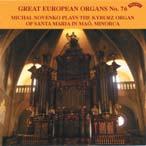

Michael Harris plays the organ of St Peter’s Church, Wandersleben, Germany
Bach Prelude and Fugue in g BWV 535; Prelude and Fugue in C; J C Bach Aria Eberliniana variata; Buxtehude Praeludium in A; Nun freut euch, ;ieben Christen g’mein; Froberger Ricercare; Kerll Passacaglia; Böhm Praeludium in D; Hanff Erbarm dich mein; O here Gott; Ein feste Burg ist unser Gott; J M Bach Jesus Christus unser Heiland der den Tod überwand; Der du bist drei in Einigkeit.
PRIORY PRCD 1001 TT 76:46
This is an imaginatively planned CD which demonstrates the young J S Bach’s progress from his early years until his departure for Weimar in 1708. Although, unlike Handel, he never left Germany, he acquired an understanding of a wide variety of styles. If you wish to find out how, then buy this CD. The music is that which the young Bach would have known, either from copies or from hearing it performed – it was whilst at Arnstadt, in the winter of 1705/6 that he made his extended visit to Lübeck to hear the great Buxtehude. (Note that the Johann Christoph Bach (1642-1703) featured was the son of J S’s great-uncle, and is, according to Grove, the most important composer of the Bach family prior to J S The Johann Michael (1648-1694) was Johann Christoph’s brother, who became J S’s father-in-law when he married his cousin, Anna Maria). The programme is framed by BWV 535 and BWV 531, which gives a satisfying structure to the whole CD. I often enjoyed Michael Harris’s playing when he was Assistant Organist at Canterbury Cathedral (he has been at St Giles’ Cathedral, Edinburgh since November 1996), and his playing on this CD is as stylish as I remember. He uses the resources of the two-manual instrument most effectively, but those with perfect pitch, beware – at a’ = 494 Hz, everything sounds about a tone higher than you would expect. The booklet is both informative and readable, with photographs of the ornate organ case, full specification of the organ, descriptions of the composers and music, and a biography of Michael Harris.
David KnightMichael Novenko plays the Kyburz organ of Santa Maria in Maó, Minorca.
De Ribayaz Hachas; Soler Sonata en Sol; Sonata de Clarines; Casanoves Pao de 1. Tono; Sonata en Fa; Travers Cornet Voluntary; Wesley Pastorale; Beauvarlet-Charpentier Marchand Plein-jeu de Cromhorne; Duo Récit Grand-jeu, Plein-jeu; Pasquini Partita sopra la Folia d’Espagna; Frescobaldi Toccata Avanti il Ricercare; Novenko Frescobaldiana; Hernandez Elevación; Lidón Sonata de 1 Tono; Intento en Fa. PRIORY PRCD 878 TT 73:32
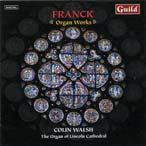
Colin Walsh plays the organ of Lincoln Cathedral
Trois Chorales; Cantabile & Pièce Héroïque (Trois Pièces); Pastorale Final in B flat major ( Six Pièces).
GUILD GMCD 7324 TT 79:50
If you are looking for recordings of these works, this is the CD to buy. And if you already have recordings, then still get this CD. The Lincoln Cathedral organ is ideally suited to this repertoire, and Colin Walsh’s playing is most stylish, demonstrating with great musicality the resources of the instrument. The sound is excellent, and the booklet wellwritten and informative, with details of the music, the organ, and the organist. Need I say more!
David Knight
Charpentier Prelude to a Te Deum; Handel Musica Bellicosa; Mozart Sonata No 1 in B flat; John James
Trumpet Sonata in D;Trumpet Sonata No 2 in D; Stanley Organ Voluntary in G minor; Leopold Mozart
Trumpet Concerto; Loeillet Sonata in B flat; Stradella Trumpet Sonata; Bach Chorale Prelude ‘Wachet Auf’; Final Chorale from the Christmas Oratorio.
Trumpet: Crispian Steel-Perkins.
Organ: Alan Spedding.
HERALD HAVPCD 336 TT 62:07



Purists will not like this CD as all the pieces contained therein are arrangements, or transcriptions, or compilations of movements from various sources. But I thoroughly enjoyed it. The playing is elegant and stylish, and introduced me to some previously unknown, but very attractive music. The first two movements of Handel’s Musica Bellicosa were unfamiliar, although we know the familiar third movement as the March from Scipio
John James was a find, although the informative booklet tells us that ‘his fondness for spirituous liquors (even whilst attending to his duties as organist at St Olave’s, Southwark), and a greater interest in dogfights and bull-baiting’ could be the reason that his musical achievements have been overlooked’. The movements making up the two sonatas are taken from unpublished manuscripts of organ voluntaries. The Leopold Mozart Trumpet Concerto was also enjoyable and I particularly liked the anecdote of the composer playing it too close to his six-year-old son and frightening him to death. Strongly recommended.
David Knight
Four Renaissance Pieces; Handel Organ Concerto No 16 in F; Stanley Voluntary in D Op 5 No 5; Bach Trio Sonata No 1 in E flat; Rogg Partita sopra Nun freut euch; Vaughan Williams Three Preludes founded on Welsh Hymn Tunes; Holloway Scherzo; Litaize Prélude et Danse Fuguée.
REGENT REGCD302 TT 66:30

The Church of St Giles within Cripplegate has been home to the St Giles International Organ School since its foundation in 1992. Its resources were enhanced by the building of a new two-manual, thirteen stop, mechanical action organ by Mander at the east end of the church in 2008. The organ is described fully in the CD booklet. Thomas Trotter’s recital on the new organ is an object lesson in so many respects –in programme planning –choice of music –exploitation of the resources of the organ –but above all in the sheer musical versatility of his playing. He shows what can be done within the discipline of a comparatively small organ of character. This is no mere organ demonstration CD. The music is always of paramount importance and the organ is always the servant of the musician. This is great playing by one of the finest musicians of our time. Very highly recommended!
Alan Spedding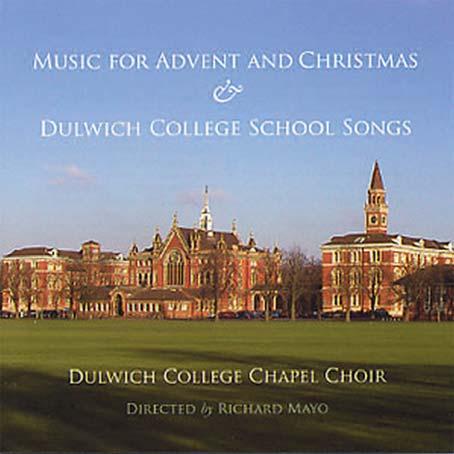
by Dulwich College Chapel Choir. Directed by Richard Mayo, Director of Music at Dulwich College, and recorded in the fine church of St John’s, Upper Norwood, by Patrick Allen of Opera Omnia Productions, this new disc contains music by Jonathan Dove, Arvo Pärt, Carl Rütti, Stanford and Walford Davies. New recordings of four of the School Songs, two composed by E Rendall and two by HV Doulton, are also featured as well as remastered versions of School Songs originally recorded by College musicians in the 1930s and 1940s.
The CD costs £10.00 and is available from the Dulwich College Commissariat 020 8299 9222 http://shop.dulwich.org.uk/store/
Recital programme with 14 tracks:
Vierne Toccata in B flat minor; Albinoni Adagio; Peraza Medio Registro alto; Gigout Scherzo, Toccata; Thalben-Ball Paganini Variations; Wood Prelude on York Tune; Mozart Fantasia in F minor K608; Elgar
Imperial March; Dubois Fiat Lux; Mulet Rosace; Duruflé Fugue sur le Carillon des Heures de la Cathédrale de Soissons; Mushel Toccata; Cochereau


Improvisation sur Haec Dies
Recorded in 16.9 Widescreen PAL All regions colour. 5.1 Surround Sound
DOUBLE DISC DVD & CD PRIORY PRDVD2
This is the second in Priory’s Organ DVD series and features John Scott Whiteley playing and demonstrating the Grand Organ of York Minster; there is also a brief autobiography, spoken to camera by this highly accomplished organist, who is becoming something of a DVD star. The playing is all done on the nave floor console just in front of the organ screen, starting with the Vierne Toccata in bright sunlight but watch out for some night time cutaways! Before viewing the DVD, I listened critically to the CD of this virtuoso performance and commend it as one of the finest ever recorded on this organ. The microphone balance places the large organ in the true perspective, in that huge space under the tower and is matched by pleasing architectural cutaways, giving an impression of the splendour of this vast building, the largest Gothic cathedral in northern Europe. There are good organ interior shots and rare rooftop shots of York. The actual playing shots at the console have the same limitations that I criticised in my review of the Liverpool DVD: the camera angles of the hands playing are from behind the player, along the sleeves, so that it is not possible to see which keys the fingers are depressing, nor the fingering itself. The pedalling shots are excellent and reveal this player’s impeccable technique, especially in the fiendishly difficult Thalben-Ball Paganini Variations for pedals, which include glissandi for both feet. DVDs like this one and large projection screens at recitals stimulate a growing interest in the technicalities of organ playing and provide added motivation for players to improve their technique or even to learn to play the instrument from scratch. In fact, a set of DVDs about organ playing is long overdue.
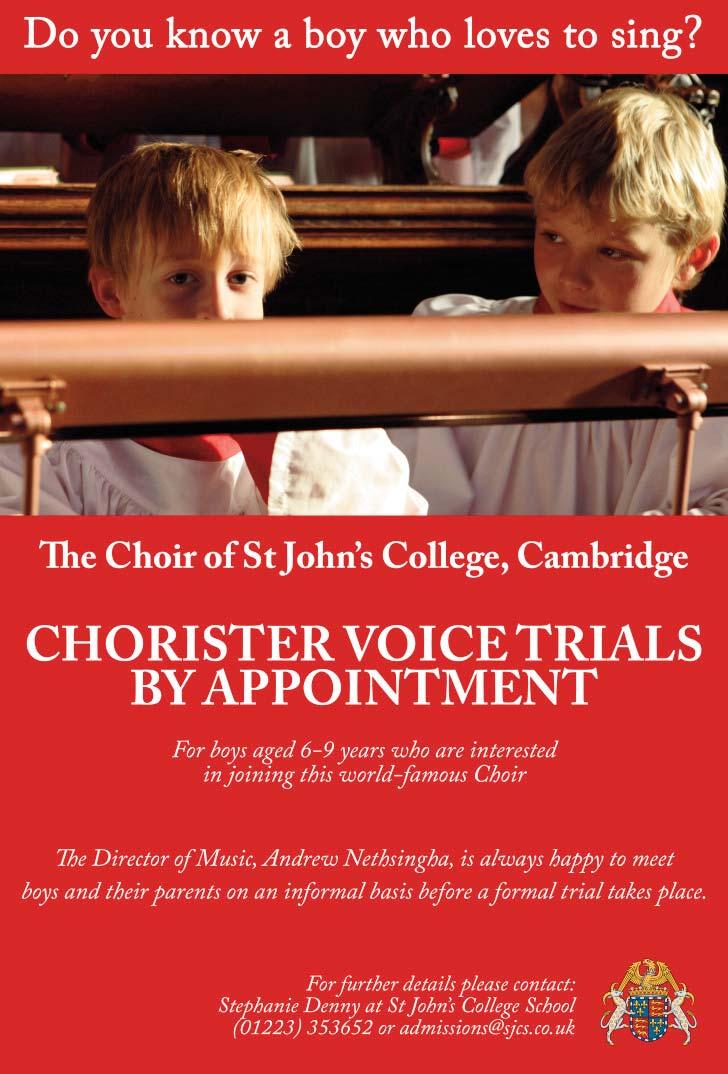
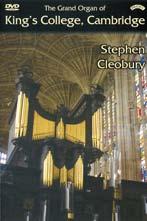
 Roger Tucker
Roger Tucker
with Stephen Cleobury
Recital Programme with 11 tracks: Bach Prelude & Fugue in D BWV532; Howells Master
Tallis’s Testament; Gigout Grand Choeur Dialogué; Reger Weihnachten; Handel Arrival of the Queen of Sheba; Wesley Air & Gavotte; Mendelssohn Sonata
No 3; Elgar Chanson de Matin; Thalben-Ball Elegy;
Bach O Mensch Bewein; Walton Crown Imperial
Recorded in 16.9 Widescreen PAL All regions colour. 5.1 Surround Sound
DOUBLE DISC DVD & CD PRIORY PRDVD3
I am delighted to find that on PRDVD3 (King’s College, Cambridge) the camera angles on the manuals are exemplary and it is easy to see the notes being played and the fingering used by Stephen Cleobury, this is also true of the pedal shots, all of which reveals his formidable technique. The console is up on the magnificent carved organ screen and cannot usually be seen. This is surely the most beautiful college chapel in the world. Tasteful cutaway shots of its architectural perfection and tranquil exteriors of Cambridge enhance this glowing, virtuoso performance of a really well-balanced and enjoyable programme. At the end the camera takes us up onto the chapel roof and we
suddenly realise how massive it is, with the huge battlements in unfamiliar close-up. On a later track Stephen Cleobury, who is not often seen on camera, tells us about his musical upbringing and we learn that both his father and grandfather were organists. I have one criticism: there is enhanced reverberation on the sound balance, no matter how I configure the 5.1 Dolby surround sound; the microphone balance is far too spacious, as if some ambiophony was being used. The chapel acoustics are well-known, with an ideal reverberation time; here they are excessively resonant.
This cavernous acoustic effect was also used in the Liverpool DVD, it is notably inappropriate for the performance, when the camera is mostly close to the player. The balance should enable us to hear the organ from the player’s ear view, with greater clarity.
On both DVDs the players give a really captivating demonstration of the stops and choruses of their instruments, with clear accompanying cutaway shots. The heroic reed stops at York, including the famous Tuba Mirabilis, and the delicate Choir upperwork at King’s, especially captivated my ear. They also each explain their registration for each piece and play examples. Stephen Cleobury explains how he has got round the lack of any Celeste stops and demonstrates the heavenly flutes on the Choir. One niggle: it would be helpful if the nicely produced booklets included a diagram of the way the tracks are configured, giving the duration of the ‘bonus tracks’. It is very good to have a CD of the music in each album, nice for the car player.
The fourth DVD in the series, featuring Colin Walsh at Lincoln is due to be released this Autumn and will be reviewed in our next edition.
Roger TuckerAllegro Music ................................................................39
Campaign for the Traditional Cathedral Choir ........67
Christ Church Cathedral School ................................11
Dean Close Preparatory School ..................................11
Dulwich College ............................................................64
George Sixsmith Organs ..............................................56
Harrison & Harrison ....................................................15
Herald ............................................................................30
Humphrey Clucus ........................................................54
Incorporated Association of Organists ......................17
John Sanders ................................................................67
OUPwishes Sir David
a very happy 90th birthday
Makin Organs ................................................................2
Orgues Aubertin ..........................................................36
Oxford University Press ................................................66
Regent Records ............................................................67
Royal School of Church Music ....................................11
Salisbury Cathedral Voice Trials ..................................33
St Ives Parish Church ....................................................9 St John’s College, Cambridge ......................................65 Tadpole Music ..............................................................56 Viscount Classical Organs............................................16 Westminster Abbey Choir ............................................56
• Sir David’s fascinating life story told in a series of interviews

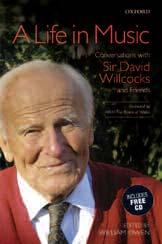
• Reflections from a roll-call of eminent composers,musicians,and friends
• CD features recordings of many of Sir David’s breathtaking performances
Times Literary Supplement www.oup.co.uk/music
President: Dr Simon Lindley
The voices of boy and girl cathedral choristers Is there a difference? And does it matter?
 By Dr A.E. Saunders
By Dr A.E. Saunders
In this research paper, the noted physicist and academic, Dr Arthur Saunders, subjects existing studies on these questions to rigorous analysis. CTCC is offering free copies of the paper, plus a year’s free subscription to its publications.
New York Times
To obtain your free copy of the research paper and a year’s complimentary subscription to our publications, simply write to:
David WatsonCTCC

26 Syke Green
Scarcroft
LEEDS LS14 3BS
Alan Charters
The biography of Dr John Sanders
OBE, FRAM, FRSCM Organist & Master of the Choristers at Chester, and then, Gloucester Cathedral
With a foreword by Dr Roy Massey
Hardback with 15 illustrations
£20 p&p FREE
The Revd Alan Charters Crescent House Church Street

Talgarth Brecon LD3 OBL
MagnificentnewchoralandorganreleasesforAutumn2009
HowellsfromHereford REGCD316

TheChoirofHerefordCathedral Directedby GeraintBowen, PeterDyke organ
TeDeum&Jubilate(CollegiumRegale), Magnificat&Nuncdimittis(GloucesterService)

Magnificat&Nuncdimittis(HerefordService)
Magnificat&Nuncdimittis(WorcesterService)
Magnificat&Nuncdimittis(CollegiumRegale)
FourAnthems: OprayforthepeaceofJerusalem,Wehaveheardwithourears, ikeasthehart,LetGodarise

ChristmasfromYork REGCD317

TheChoirofYorkMinster directedby RobertSharpe, JohnScottWhiteley organ
OnceinroyalDavid’scity Gauntlett/Mann/Willcocks,Tomorrowshallbemydancingday arr
Gardner,AveMaria Parsons,Inthebleakmidwinter Darke,Thehollyandtheivy arrWalford Davies,PromiseofPeace Shephard,TheLordatfirst arrMoore,Ocomeallyefaithful arr
Willcocks,TheAngelGabriel arrPettman,RegisTharsis ScottWhiteley,Awayinamanger KirkpatrickarrWillcocks,BethlehemDown Warlock,OlittletownofBethlehem arrVaughan Williams,Shepherd’spipecarol Rutter,Dingdong!merrilyonhigh arrLlewellyn,Itcameupon themidnightclear arrSullivan,HodieChristusnatusest Poulenc,Hark!theheraldangelssing Mendelssohn,arrDavidWillcocks, Omnesdesaba Händl,WewishyouamerryChristmas arr.
Warrell
Requiem Athanksgivingforlife REGCD305

ChoralworksbySirPhilipLedger
TheChoirofChrist’sCollege,CambridgedirectedbySirPhilipLedger&DavidRowland
Requiem Athanksgivingforlife, AdamLayYbounden,AdventCalendar,Aspotlessrose, JesusChristtheappletree,Inthebleakmid-winter, Liestillandslumber(TwolullabiesforChristmas), GoodChristianmen,rejoice,Ifyeloveme,LovingShepherdofthysheep, Donotstandatmygraveandweep,OMaster,letmewalkwithThee, Christ’sjourney,ThisjoyfulEastertide
THOMASTROTTER
CPEBachOrganworks REGCD314
Arecordingdevotedtorareeighteenth-century musicfromthisworld-renownedperformer.
Performedonthebeautiful
Mitterreither(1773)/Flentrop(1973)organ ofEtonCollegeSchoolHall –anorgan containingpipeworkcontemporarywiththe musicandtheonlyauthenticcontinentalorgan ofthisperiodintheUK.
PreludeinDmajor,Wq70/7
SonatainFmajor,Wq70/3,H84
FantasiaandFugueinCminor,Wq119/7
SonatainAminor,Wq70/4,H85
FugueonBACH(editedTrotter)
SonatainGminor,Wq70/6,H87






AdagioinDminor,Wqn.v.66
SonatainDmajor,Wq70/5,H86
SpringsofGenius WorksbyBachandcomposerswhoinfluencedhim MargaretPhillips,StLouis-en-L’Île,Paris OrganbyBernardAubertin REGCD300
NicolausBruhns PraeludiuminG, JohannKasparKerll Passacaglia,Toccata6, Johann Pachelbel Partita: AlleMenschenmüssensterben ,ToccatainEminor, JohannJacob Froberger, Fantasia: UtReMiFaSol LaFbWV201,CapriccioFbWV501, GeorgBöhm ChoralePrelude: VaterunserimHimmelreich,PraeludiuminC, JohannAdamReincken FugueinGminor, DieterichBuxtehude ChoralePrelude: Komm,HeiligerGeist,HerrGott BuxWV199,ChoralePrelude: NunbittenwirdenheiligenGeist BuxWV208,CiaconainE minorBuxWV160, J.S.Bach ToccatainEBWV566
LET’SCOMETO an ARRANGEMENT
AndrewWilsonplaystranscriptionsontheOrganofGreatMalvernPriory REGCD325

Overture‘DieFledermaus’ StraussIIarr.Wilson,SinfoniafromCantataNo.29,BWV29
Bacharr.Rawsthorne,GrandMarchfromAïda Verdiarr.Lemare,ChansondeMatin, Op.15.No.2 Elgararr.Brewer,ImperialMarch,Op.32 Elgararr.Martin,‘Venus’(‘The BringerofPeace’)fromThePlanets,Op.32 Holstarr.Wills,AnniversaryFanfareand CoronationMarch‘OrbandSceptre’ Walton,AuldLangSyne Trad.arr.Lemare From TheNutcrackerSuite,Op.71 Tchaikovskyarr.Feibel/Wilson,MiniatureOverture,Dance oftheSugarPlumFairy,DanceoftheMirlitons,WaltzoftheFlowers, FromCarnivalofthe Animals Saint-Saënsarr.Melnikova IntroductionandRoyalMarchoftheLion,The Elephant,TheCuckoointheDeepWood,Fossils,TheSwan,Finale’
Availablefromallgoodclassicalrecordshopsordirectfrom REGENTRECORDS POBox528,Wolverhampton,WV39YWTel:01902424377, Fax:01902717661E-mail:info@regentrecords.com
Web:www.regentrecords.com-Nowwithsecureonlineordering Cathedral/churchshopspleaseorderdirectfromRegent UKRetaildistributionbyRSKEntertainmentLtd, Tel:01488608900,info@rskentertainment.co.uk
USAdistributionAlbanyMusicDistributorsInc.(mailorderwww.arkivmusic.com)
